Ask Smithsonian 2017
A Smithsonian magazine special report

The Best Places to See the Southern Lights
The aurora australis is the southern cousin to the northern lights
Jennifer Nalewicki
Travel Correspondent
/https://tf-cmsv2-smithsonianmag-media.s3.amazonaws.com/filer/15/5e/155e80de-1120-4659-921d-1645fb981532/southern-lights-new-zealand.jpg)
Seeing the northern lights in all their vivid glory nears the top of many travelers’ bucket lists. But what many people don't realize is that the Southern Hemisphere has an incredible atmospheric lightshow of its own that’s just as captivating. Called the southern lights, or aurora australis, it’s the southern cousin to the aurora borealis and can best be seen from the most southern of landmasses, such as Tasmania, New Zealand and Antarctica.
Just like the northern lights, the southern lights occur when electrically charged solar particles and atoms in the Earth’s atmosphere collide with gases like oxygen and nitrogen, causing those gases to emit light. Auroras happen in ovals around the planet’s two magnetic poles, which is why the farther north or south you’re located, the likelier you are to experience one of these impressive light displays.
So when’s the best time to see one? While it’s difficult to predict the exact moment when a southern lightshow will begin, the website Aurora Service offers an hourly forecast based on real-time solar wind data procured from the Advanced Composition Explorer (ACE) a NASA spacecraft in orbit. Most southern lightshows occur during the Southern Hemisphere’s fall and winter months, which stretch from March through September.
Here are four aurora australis hotspots for those looking for a southern celestial spectacle.
Queenstown, New Zealand
/https://tf-cmsv2-smithsonianmag-media.s3.amazonaws.com/filer/e4/7f/e47f233c-0bf8-4ca1-b83e-87003cbfe76c/istock-641712994.jpg)
There are a number of places on New Zealand’s South Island that have proven again and again to be hotbeds for spotting southern lights, such as the city of Christchurch, the tiny village of Lake Tekapo and Stewart Island off the country’s southern coast. But so far this year one location has made headlines worldwide for the breathtaking array of lightshows that have occurred in the skies above it: Queenstown. Located on the banks of Lake Wakatipu, on multiple occasions this year, the city of 14,300 has been awash in a rainbow of light as vibrant greens and rich reds danced across the night sky. If you missed it, one aurora hunter captured the show and created a time-lapse video of it.
Mount Wellington, Tasmania
/https://tf-cmsv2-smithsonianmag-media.s3.amazonaws.com/filer/1c/c0/1cc01afe-3e93-4df9-a83c-4548e9f65b17/istock-507308654.jpg)
Ask any aurora australis hunter what the best place in Australia is to see the southern lights, and chances are good that he or she would point you to the continent’s southern island of Tasmania. The Australian Antarctic Division of the Department of the Environment and Energy, an agency of the Australian Government, estimates the probability of witnessing a light event in Tasmania on any given clear night to be between 1 and 2 percent, with the odds going up near the equinoxes in late March and September. But one spot in particular that those in the know frequent is Mount Wellington, a mountain located in the backyard of Tasmania’s capital city of Hobart. The higher up you ascend the 4,100-foot peak, the less likely your view will get obstructed, making it the perfect front-row seat for nature’s big event.
Victoria, Australia
/https://tf-cmsv2-smithsonianmag-media.s3.amazonaws.com/filer/d8/37/d8379aaa-a460-4286-b728-1e1a9c59adb4/istock-492361086.jpg)
Outside of Tasmania, your best bet in Australia for seeing the night sky explode in a riot of reds and greens and swirls of purples and blues is in the state of Victoria, located in the continent’s southeastern corner. When conditions are right, Victoria's 1,200 miles of coastline include thousands of perfect spots to pull up a beach chair and watch the display dazzle over the Bass Strait, the massive body of water that separates Tasmania from the mainland.
Antarctica & South Georgia Island
/https://tf-cmsv2-smithsonianmag-media.s3.amazonaws.com/filer/69/17/6917dcb9-0401-4d70-8d35-ea633eb66042/19157599833_8f3a8beea8_k.jpg)
Very few people make it as far south as South Georgia Island or the snow-coated continent of Antarctica, particularly in winter. But anyone who does get the chance to brave the below-zero temperatures and howling winds will be in for a treat that will no doubt induce Instagram envy (once you get a solid Wi-Fi signal, that is). Being the most southerly chunk of landmass on the planet, Antarctica is the quintessential spot for viewing the aurora australis in all its brilliant glory. The challenge is just getting there. Because of the inhospitable winter climate, only research vessels venture this far south in the dead of winter when aurora conditions are best, but frequent sightings do occur during the end of the cruise season in March, which also happens to be a great time for spotting humpback, sperm and killer whales.
Get the latest Travel & Culture stories in your inbox.
Jennifer Nalewicki | | READ MORE
Jennifer Nalewicki is a Brooklyn-based journalist. Her articles have been published in The New York Times , Scientific American , Popular Mechanics , United Hemispheres and more. You can find more of her work at her website .
- Cabins & Lodges
- Apartments & houses
- New South Wales
- South Australia
- Western Australia
- Northern Territory
- Norfolk Island
- New Zealand
- Switzerland
- Middle East
- Southeast Asia
- Antarctica & Arctic
- Coach, Group & Escorted
- Special Interest
- Tours & Sightseeing
- Scenic Flights & Heli Tours
- All-Inclusive Packages
- Restaurants
- Wine & Dine
- Street Food
- Art & Culture
- Shopping & Markets
- Rail Journeys
- Ski & snowboard
- Walks & Treks
- Dive & Water Sports
- Parks & Reserves
- Theme & Amusement Parks
- Spa & Wellness
- Global Village
- Money & Rewards
- Tried & Tested
- Interviews & Profiles
- Deals & Itineraries
Subscribe to the magazine

- Vacations & Travel on Facebook
- Vacations & Travel on LinkedIn
- Vacations & Travel on Instagram
- Vacations & Travel on YouTube
V&T Newsletter
Love inspiring travel stories and exciting competitions? Get the latest news delivered to your inbox.

18 of the best places to see the Southern Lights
- facebook-f-brands (1)
- twitter-brands (1)
- linkedin-in-brands
- envelope-solid
From Australia to New Zealand and Antarctica, these are the best places to view the spectacular celestial display known as the Southern Lights: the aurora australis.
The Southern Hemisphere’s greatest light show is often overshadowed by its northern counterpart, but the aurora australis is just as impressive as the borealis. The celestial dance of shimmering lights in shades of red, green, purple and blue can only be spotted from some of the region’s most remote locations: the island state of Tasmania off Australia’s south coast, the southernmost points of New Zealand ’s South Island, and Antarctica . The Southern Lights are a once-in-a-lifetime experience for most casual astronomers, while dedicated aurora-chasers spend many a winter’s night chasing the illusive phenomenon. Regardless of which camp you fall into, we’ve pulled together the ultimate guide to the best places to see the Southern Lights in Australia and New Zealand, plus advice on when to search for them.
Which countries can see the Southern Lights?
The aurora australis can be seen from certain parts of New Zealand, Australia, Antarctica and South Georgia Island of the British Overseas Territory.
What is the difference between aurora borealis and aurora australis?
Aurora australis and aurora borealis are the results of the same natural phenomena. However, aurora borealis, known as the Northern Lights, is the most famous of the pair due to the expansive area from which it can be viewed and how visible the lights are at these locations. Aurora australis is only viewable from more remote locations and is typically a faint and fleeting blink-and-you’ll-miss-it moment.

What are the Southern Lights, and what causes aurora australis?
The aurora australis, also known as the Southern Lights, is a natural phenomenon that occurs when electrically charged particles from outer space collide with the Earth’s atmosphere and encounter atoms of oxygen or molecules of nitrogen. The green and red light typical of the Southern Lights results from the particles colliding with oxygen at different altitudes, while the purple light comes from the particles colliding with nitrogen. Both auroras in the north and south are polar, as they occur near Earth’s magnetic poles and are drawn to Earth by these magnetic fields. The Southern Lights appear in shades of green, red and purple and typically shimmer across the sky when visible.
When is the best time to see aurora australis?
Aurora-chasers are most likely to witness the Southern Lights during the winter months when the nights are long, dark and free from cloud cover, and when the moon is in its darkest phase. Aurora australis is difficult to predict, and a viewable occurrence is often only confirmed up to three days in advance. Visitors to Australia can download apps such as My Aurora Forecast and SpaceWeatherLive to stay on top of the conditions; subscribe to aurora notifications from Australia’s Bureau of Meteorology Space Weather Services division; or join the Aurora Australis Tasmania Alert NOW and Aurora Australis Tasmania Facebook groups.
Where are the best places to see the Southern Lights?
The island state of Tasmania is the best place from which to view aurora australis in Australia. Those in New Zealand should head towards the South Island. Antarctica is the quintessential viewing position for the Southern Lights, while the phenomenon can sometimes be viewed on cruises to South Georgia Island between March and September.

Where to see the Southern Lights in Australia
Bruny island .
Accessed via a 30-minute drive and one ferry ride from Hobart in the south of Tasmania, the 362-square-kilometre island is separated from Tasmania proper by the D’Entrecasteaux Channel. Free from light and city pollution, with pristine beaches and beautiful bushland, Bruny Island is a popular weekend escape for locals due to its small community of producers. Shop cheese, honey, fruits, chocolate, whisky, wines and cider, all produced on the island. For the best view of the Southern Lights, climb to the top of the stairs at The Neck and look southward.
Cradle Mountain-Lake St. Clair National Park
The dramatic peaks, glacial lakes and unique rainforest of Cradle Mounain-Lake St. Clair National Park are famed the world over. Set within the Central Highlands of Tasmania, the park is a two-and-a-half-hour drive from Launceston and Hobart, depending on whether you choose to arrive via the north or south entrance, respectively. Cradle Mountain’s Dove Lake, with its beautiful views of Cradle Mountain and mirror-like waters, is the perfect place to view the Southern Lights. It’s a bucket-list moment for photographers, who can capture the unique natural phenomenon set against one of the state’s most iconic locations.
Satellite Island
This tiny islet set off the coast of Bruny Island is a luxury private sanctuary available to holidaymakers. It’s a 90-minute drive from Hobart, across the channel by ferry to Bruny Island, followed by a drive towards Alonnah, where visitors are sailed out to the island on a five-minute private crossing. Aside from the luxury private accommodation, Satellite Island is known for its excellent stargazing conditions and views of the aurora australis.

Central Highlands of Tasmania
On the central plateau of Tasmania, you’ll find an Antarctic training facility reimagined as a luxury alpine retreat known as Thousand Lakes Lodge. It’s an off-the-grid location within a flat landscape, affording visitors unobstructed views of the horizon that are ideal for viewing the Southern Lights. Visitors can drive to the location, which is just 90 minutes from Launceston in the north or two hours from Hobart in the south.
South Arm Peninsula
On the east side of the entrance to the Derwent River, 35 kilometres southeast of Hobart, is a pleasant little coastal stretch known as the South Arm Peninsula. Here, you’ll find Goat Bluff and its lookout, and, depending on the time of year you visit, its bioluminescence and the aurora australis.
Carlton Beach
Popular among surfers, Carlton Beach is located 40 kilometres east of Hobart. The three-kilometre stretch of beach is framed by a coastal dune reserve. The location is a suitable viewing point for the Southern Lights, as it’s free from city and light pollution.
The rural locality of Tinderbox is just 20 kilometres from Hobart and a popular coastal escape for southern Tasmanians. Tinderbox Peninsula enjoys lovely views over the Derwent to Opossum Bay and South Arm, providing a picturesque spot from which to view or photograph the celestial lights.

Bathurst Harbour
This shallow bay is tucked away in the remote Tasmanian Wilderness World Heritage Area, around 100km from the nearest town. Accessible only by plane or boat and set within the Port Davey/Bathurst Harbour Marine Nature Reserve and the South-west National Park, the coastline of this isolated retreat is one of the best places to see the aurora australis, but you’ll need to join a tour, such as Par Avion’s Southwest Wilderness Camp.
Stanley
Stanley is a historic town on the northwest coast of Tasmania, famous for two things: The Nut, an ancient volcanic plug and steep bluff, and Highfield Historic Site, a museum set within a preserved 1830s homestead. Aurora chasers should perch atop the hill beside the site to get a good view of the lights.
Hobart
Those willing to brave the chill of the Kunanyi/Mount Wellington summit, 1270 metres above sea level, can sometimes catch a glimpse of the aurora australis when the conditions are dark and clear. However, the glow of Hobart City can sometimes obscure the phenomenon, making it difficult to see without the help of a long-exposure image on camera.
Forth
The tiny village of Forth in Tasmania’s north-west is located 11 kilometres from Devonport. Braddon’s Lookout offers photographers some jaw-dropping landscape compositions that include the Milky Way and the aurora australis.

Where to see the Southern Lights in New Zealand
Stewart island .
Floating across the Foveaux Strait 30 kilometres south of South Island, Stewart Island is a haven for kiwi, tokoeka, blue penguins and yellow-eyed penguins. Known as the ‘Land of the Glowing Skies’, it comes as no surprise that this pristine national park is the perfect place to see the aurora australis in full swing. Head to Observation Point for the best views.
Lake Tekapo
Dark nights and clear conditions are the keys to seeing the aurora australis, and there’s no place better to maximise your chances than an internationally recognised Dark Sky Reserve such as Lake Tekapo and the surrounding Mackenzie region. Get the best view from the Church of the Good Shepherd by the lake’s edge.
The Catlins
Positioned at the southernmost edge of the South Island between Balclutha and Invercargill, the Catlins is a wooded and wild area known for its beautiful landscapes. Position yourself at Tokata Nugget Point by the lighthouse for a Southern Lights experience you’ll never forget.

Chatham Island
Located in a remote ocean-bound wilderness area famous for its marine life and seafood, Chatham Island is 800 kilometres east of the South Island. Accessed via a two-hour flight from Auckland, Chatham Island has clear skies and low light pollution, making it a fantastic destination from which to see aurora australis.
This resort town on the South Island of New Zealand has views of the Southern Alps and easy access to Mount Aspiring National Park, a land of glaciers, forests and lakes. Make your way towards Eely Point, a picnic area on Bremner Bay Beach, where the right conditions afford spectators an incredible view of the celestial light show.
Aoraki Mt Cook National Park
Mt Cook in Canterbury is the tallest mountain in New Zealand and forms part of New Zealand’s only International Dark Sky Reserve. Easily reachable via the State Highway 80 to Aoraki/Mt Cook Village, the best place to set up for a night of aurora-chasing is by the scenic Lake Pukaki.
Where to see the Southern Lights in Antarctica
The Southern Lights can be seen all over Antarctica between February and October, however, accessing the location can only be done on guided tours and cruises.
Read more: Eight of the best places to see the Northern Lights How to see the Northern Lights in Alaska The Scandinavian myths and legends behind the Northern Lights This is the ultimate adventure bucket list
Read more inspiring stories by Vacations & Travel…

Tags: aurora australis , Australia , southern lights
Travel Video We Love
Subscribe to our newsletter
Email address:
Latest Posts

Latest Features

Aurora Australis Southern Lights
Experience Tasmania's sky technicolour
WHAT SPARKS YOUR INTEREST?
- Where To Stay
- Things To Do
- Book a Tour

The Science
What you can expect to see.

Best Spots to See the Lights
Since the further south you are, the better, popular viewing spots are South Arm Peninsula (40 km southeast of Hobart) and Cockle Creek on the southern tip of Tasmania (120 km southwest of Hobart).

In South Arm Peninsula photographers rave about the reflections shots they capture, and the wide bay allows for an expansive view. Other popular sites for viewing are Dodges Ferry, Rosny Hill, Howden, Seven Mile, and Tinderbox. If you’re going to try and view closer to Hobart , try places with a broad horizon such as Mount Nelson or Mount Wellington . Both are easily accessible from the city and sometimes attract a small crowd (bring a jacket, it can get cold at night!).
When are They Best Seen

If you’re in Tassie and in the mood chase them, current updates are available on a popular Facebook page (The Aurora Australis) or you can log into any one of the apps that exist for such a purpose (Star Walk, Solar Monitor, and Aurora Australis Forecast to name a few).
How to Capture Them & Follow the Lights
An SLR camera set to manual mode with a tripod is the best way to ensure a stable and clear image. Seek out a wide lens which will allow for maximum light into the camera and choose the highest ISO (800 to 3200). The shutter speed should be anywhere from 5 to 15 seconds and the focus set to infinity.
You’re all set. Happy viewing!

- Explore Explore places to stay Watch Video 7 Day Luxury Getaway 4 Day Private Tour Tasmania Wildlife Encounter Eat & Drink the World's Best Watch Video 5 Day Tasmania's Gourmet Sampler 3 Day Gourmet Hobart & Surrounds History and Culture Watch Video 8 Day History, Art and Nature Self Drive Package 7 Day Icons of Tasmania Coasts & Waterways Watch Video 8 Day Wilderness and Beaches Self Drive Package 5 Day East Coast Self Drive Package Explore Ancient Lands Watch Video 8 Day Tasmanian Wildlife and Wilderness Encounter Tour 6 Day Tasmanian Devil Encounter
- Where To Go Regions Hobart & South Launceston & North North West West Coast East Coast King Island Flinders Island Day Drives Huon Valley Day Drive Derwent Valley Day Drive Tamar Valley Day Drive Cradle Mountain Day Drive Bruny Island Day Drive Self-drive Itineraries Hobart to Port Arthur Port Arthur to Freycinet Freycinet to Launceston Launceston to Cradle Mountain Launceston to Stanley Stanley to Cradle Mountain Cradle Mountain to Strahan Strahan to Hobart Popular Places Hobart & South Hobart Richmond Port Arthur Bruny Island Three Capes Track Huonville Salamanca Markets Battery Point View All Launceston & North Launceston Grindelwald Tamar Valley Cataract Gorge Beaconsfield Mole Creek Derby Mountain Bike Park View All North West Overland Track Burnie Port Sorell Cradle Mountain Devonport Stanley View All East Coast Wineglass Bay Bay of Fires Freycinet Bicheno Maria Island Pyengana View All West Coast Strahan Queenstown View All King Island King Island View All Flinders Island Flinders Island View All Attractions North Cataract Gorge Overland Track Tarkine / Takayna Rainforest The Nut in Stanley Grindelwald World Heritage Sites Gunns Plains Caves Cradle Mountain Tamar Valley View All South Salamanca Markets MONA kunanyi / Mt. Wellington Cascade Brewery Royal Tasmanian Botanical Gardens Tahune Air Walk Cape Bruny Lighthouse Tessellated Pavement Three Capes Track View All East Coast Wineglass Bay Bay of Fires Bicheno Blowhole Painted Cliffs Track Coles Bay Friendly Beaches Douglas-Apsley National Park Scamander Whalers Lookout Old Convict Road View All West Coast Gordon River West Coast Wilderness Railway Gordon River Dam Wall in the Wilderness Zeehan Horsetail Falls Nelson Falls Sheffield Iron Blow Lookout View All
- Things To Do Activities Outdoor Activities Hiking & Walking Mountain Biking Cycling Fishing Golf Kayaking & Canoeing View All Nature & Scenery National Parks Waterfalls Wildlife kunanyi / Mt. Wellington Scenic Flights & Helicopters Cruises & Boat Tours View All Wildlife Tasmanian Devil White Wallaby View All Multi-day Tours Top Picks 7 Day Wild West Coast Self Drive Package 5 Day Luxury Self Drive Package Self Drive Tours 10 Day Quirky Tasmania Self Drive 9 Day Tassie Icons - Hobart 8 Day Wilderness and Beaches 8 Day History & Nature 7 Day Wild West Coast 7 Day East Coast View All Bus Tours 7 Day Icons of Tasmania 4 Day Icons Tasmania 8 Day Tasmanian Wildlife and Wilderness 5 Day of Icons Tasmania 4 Day Private Tour Tasmania Wildlife Encounter View All Luxury Private Tours 7 Day Private Luxury Getaway 4 Day Tasmania Wildlife Encounter 3 Day Gourmet Hobart Surrounds 7 Day Best of Tasmania Golf Tour 5 Day Luxury Self Drive Package View All Hikes, Outdoor & Adventure Overland Track Blue Derby Pods Ride Tarkine & Cradle Mountain Explorer Three Capes 3 Day Walk The Walls of Jerusalem Experience Wineglass Bay Beach Hike View All Popular Day Tours Top Picks Gordon River Cruises Tasmanian Seafood Seduction Cruises Tasman Island Cruise Wineglass Bay Cruise Gordon River Cruises Bruny Island Cruise Seafood Seduction Cruise Leven River Cruise Cataract Gorge Cruise Maria Island Cruise & Walk View All Sightseeing Tours Hobart City Scenic Flight West Coast Wilderness Rail Red Decker City Loop Port Arthur Day Tour Cliffs & Beaches Kayak kunanyi/Mt Wellington Explorer View All Food and Drink Bruny Island Gourmet Tour Highlights of Tas Wine Tour Tasmanian Seafood Experience Derwent Wine, Whisky & Cider Tamar Food and Wine Day Trip View All Adventure Tasman Peninsula Kayaking Scenic Flights and Helicopters Leven Canyon Day Trip King River Raft & Steam Tahune Airwalk & Hastings Cave Tour View All
- Places To Stay Regions Top Picks
- Food & Drink Eat & Drink Drinks Whisky. Beer Wine and Vineyards Vodka Gin Pubs and Bars Cider View All Food Seafood Fresh produce and Farm Gates Markets in Tasmania Cheese Tasmanian Atlantic Salmon Oysters View All Our Picks 3 Day Signature Gourmet Trail 5 Day Signature Gourmet Self-Drive Trail 5 Day Wild Tasmanian Seafood Tour Events Food and Drink Bicheno Food and Wine Festival Devonport Food and Wine Chocolate Winterfest Tasmanian Whisky Week A Taste of The Huon Fliners Island Food and Crayfish Festival Taste of Tasmania Huon Valley Mid-Winter Feast View All Arts & Culture Dark Mofo Agfest Festivale Steamfest View All Music Cygnet Folk Festival Devonport Jazz Mona Foma View All Sporting Targa Tasmania Rolex Sydney Hobart Yacht Race V8 Supercars Royal Hobart Regatta View All Our Picks Bruny Island Safaris - Food, Sightseeing and Cape Bruny Lighthouse Tour
- Packages & Tours Deals 10 Day Tassie Icons Package DEAL From Hobart 7 Day Tassie Icons Package DEAL From Hobart 14 Day Tassie Long Lap Package DEAL From Hobart View All Luxury 3 Day Signature Gourmet Trail 5 Day Signature Gourmet Self-Drive Trail 7 Day Luxury Getaway View All Self-Drive 5 Day East Coast Self Drive Package 8 Day Wilderness and Beaches Self Drive Package 11 Day Self-Drive Tasmanian Family Winter Package View All Guided Walk Overland Track Three Capes 3 Day Walk The Maria Island 4 Day Walk View All Bus 4 Day Wild Tasmania Tour 5 Day Tassie Icons Explorer Bus Tour 8 Day Tasmanian Wildlife and Wilderness Encounter Tour View All
- Plan Your Trip Day Drives Huon Valley Day Drive Derwent Valley Day Drive Tamar Valley Day Drive Cradle Mountain Day Drive Bruny Island Day Drive View All Self-Drive Itineraries Hobart to Port Arthur Port Arthur to Freycinet Freycinet to Launceston Launceston to Cradle Mountain Launceston to Stanley Stanley to Cradle Mountain Cradle Mountain to Strahan Strahan to Hobart View All Multi-Day Self Drive Tours
- Maps Regions Hobart & South Launceston & North North West West Coast East Coast King Island Browse Maps Hobart & South Hobart Map View All
- Call Us 1300 282 762
- Booking Concierge
- Book Yourself
When and where to see the southern lights (aurora australis)
Steve Madgwick
Travel Journalist
26 June 2024
The northern lights get all the love when it comes to natural light phenomena but did you know Australia has its own light show – the aurora australis?
Fifteen years ago Margaret Sonnemann was driving from Launceston to Hobart when she noticed something in the sky that made her pull over in shock.
This was Margaret’s first glimpse of the southern lights. Back then, there was no portal available to discuss this amazing natural phenomenon . Today her Facebook group, Aurora Australis Tasmania, has more than 300,000 members, but the fact that Tasmania might be the best vantage spot in the world to view the southern lights remains largely unknown.
“Australians are so privileged to be able to see the southern lights,” Margaret said, and astronomers predict that in 2024/2025 solar activity will likely be at its strongest. Here’s everything you need to know about when and where to see the southern lights.
What are the southern lights?
The aurora australis, or southern lights, happens when the sun releases a massive burst of solar wind and magnetic fields into space, also known as CME (coronal mass ejections).
These solar winds carry particles that interact with the earth’s magnetic field, colliding to produce energy releases in the form of auroras.
“Auroras are more frequent and brighter during the intense phase of the solar cycle when coronal mass ejections increase the intensity of the solar wind,” says Margaret Sonnemann, author of The Aurora Chaser’s Handbook.
Given that Earth’s magnetic field is closest to its surface at the North and South poles, Antarctica and Tasmania are the best spots for seeing the southern lights given their close proximity to them.
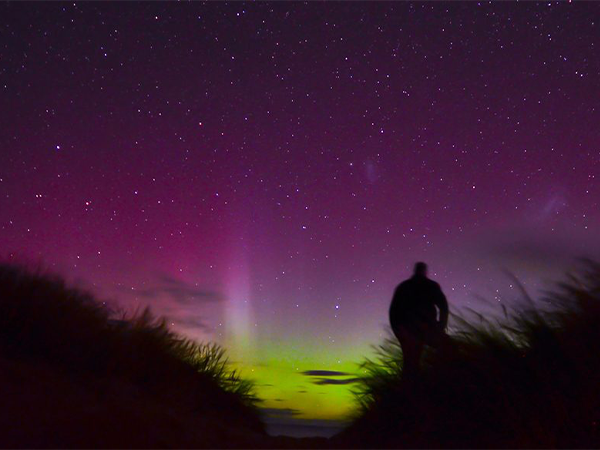
Photographer Paul Fleming’s eerie take on the Tasmania’s southern lights.
What can you expect?
If you Google pictures of both the southern and northern lights you will see images of skies full of rich greens and vivid blues, or wild swirls of reds and purples. But often this is not what the naked eye can see.
“To the naked eye, an aurora will look more like a white flickering light,” says James Garlick, who has been photographing the southern lights for years, with one of his photos even featured on an Australian postage stamp. “It could be mistaken for a cloud. It’s not until you do a long exposure with the camera that the colours are revealed.”
Matt Glastonbury (see first photo at the top of this post), another avid southern lights photographer, revels in the way they move through the night sky.
“They are like dancing curtains of light across the sky,” he says. “The size of them is incredible – beams of light are shooting right up into the atmosphere. It is really magical to see them moving around right in front of you.”
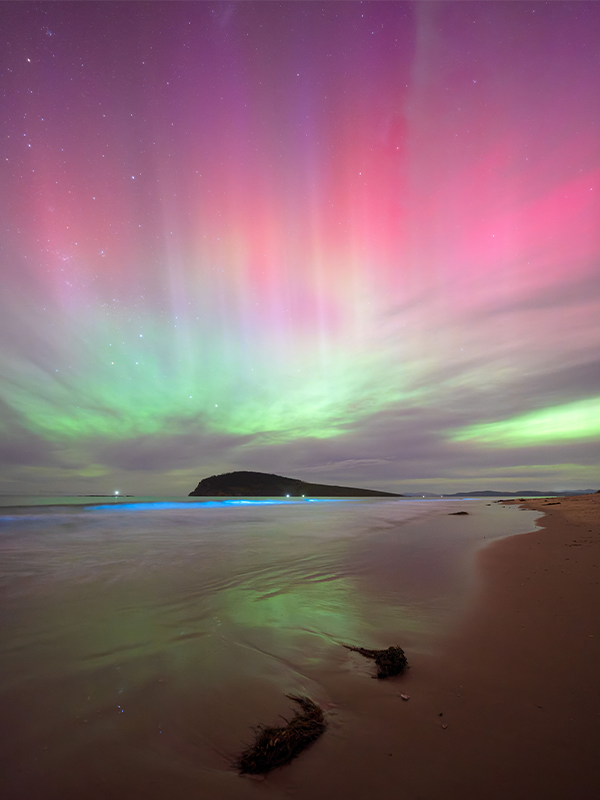
Aurora australis and bioluminescence at Goats Bluff. (Image: Luke Tscharke)
Best spots to see the southern lights
In short, “all over Tasmania,” says Margaret Sonnemann.
The main obstructions to viewing the southern lights are large mountain ranges, trees and city (and light) pollution. There are, however, some places that photographers favour due to their landscape qualities.
Photographer Paul Fleming prefers South Arm Peninsula, 40 kilometres south east of Hobart, for his aurora views. “There are lots of beaches and still, wide shallow bays. It’s a good spot for nice reflection shots with waves crashing in the foreground.”
Matt Glastonbury has two favourite spots: Dodges Ferry, about 40 kilometres east of Hobart, and Cockle Creek, on the southern tip of Tassie, 120 kilometres south-west of Hobart. “Both of those places have little light pollution,” he says. “The less of that you get the better.”
The reason the northern lights are often talked about more than the southern lights, is because there are far more vantage points accessible to see the northern lights, such as Greenland, Iceland, Norway, Northern Canada and Russia – when you’re talking about seeing the southern lights, it’s a little harder.
The reason for this is the location of the land down south, as in, there isn’t much of it. The spots with the best vantage points have no land – just water – which makes it difficult! However, there are a few spots that will show off this natural phenomenon with gusto, the trick is to be as far south as possible, which is why Tasmania is such a good bet.
Where to see the southern lights in Tasmania
South arm peninsula.
Just a 40-minute drive from Hobart, South Arm Peninsula is a popular destination for aurora photographers. Offering excellent south-facing views combined with little light pollution, this viewpoint also boasts still bays, perfect for reflections. Expect a plethora of people given its proximity to the city and seaside paradise vibes. Head to Clifton Beach or Calvert’s Beach for ideal viewing locations.
BRUNY ISLAND
A favourite weekend getaway for Tasmanians, Bruny Island is also a short drive (and ferry trip) from Hobart, but feels like worlds away with its abundant wildlife, rural atmosphere and expansive beaches. For the best views of the southern lights, climb the stairs at The Neck and point your camera towards the south. Even if you miss the lights, you’ll still be pleasantly surprised by the vast ocean views and starry sky. There are plenty of camping options (many of them free), including a privately owned campground with glamping , and aside from auroras, one of the town’s main attractions is its foodie scene – don’t miss a visit to the Bruny Island Cheese Co .
SATELLITE ISLAND
Famous for its star-gazing, visitors to Satellite Island (off the coast of Bruny Island) need to rent the whole island to experience a stay here, but some might say it’s worth it, and your chances of spotting an aurora when the conditions are right are pretty promising. If not, you get your own private island with expansive skies for gazing. Stays start at $1950 a night for two guests (extra guests $300 per person with a maximum of eight) with a two-night minimum stay.
COCKLE CREEK
Sitting upon the pristine Recherche Bay, at the most southerly point of Tasmania in Southwest National Park, Cockle Creek boasts some pretty spectacular scenery with its sandy beaches contrasted against snow-capped mountains. Given its southerly location, it may even be the best place in Tasmania to catch an aurora. It’s just a two-hour drive from Hobart, but it feels like forever from civilisation. You can camp at Recherche Bay Nature Recreation if you don’t mind roughing it, or there are many accommodation options at nearby Ida Bay. You’ll get some decent views from the bridge at Cockle Creek, but if you want the real magic take the 2.5-hour hike (one-way) to South Cape Bay.
CRADLE MOUNTAIN
Nestled in the heart of Lake St. Clair National Park, Cradle Mountain boasts some seriously social-media-worthy views and an abundance of natural delights and wildlife. Although beautiful, the mountain peaks and fairy-tale forests will obstruct those aurora views, so you’ll want to head to Cradle or Dove Lake to settle in for the show. Accommodation options are few, so make sure to book in advance. If you want to stay inside the park, book a cabin at Waldheim , a rustic option with everything you need. Or, for a real treat check out Peppers , and make sure to include a soak at its Waldheim Alpine Spa .
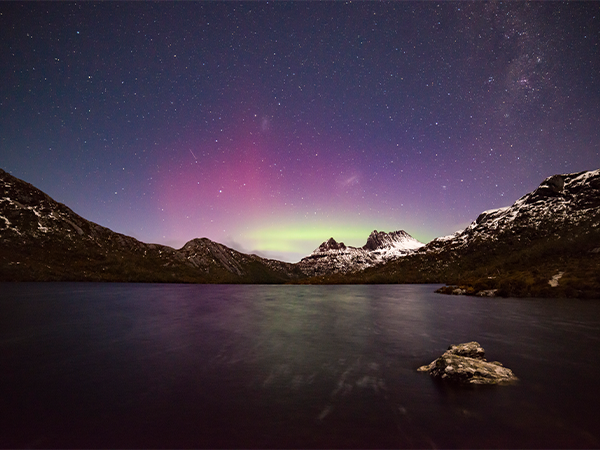
Aurora Australis over Cradle Mountain. (Image: Pierre Destribats)
Where else to see the southern lights
If you live in Victoria , you’re in luck, as there are some of the best southern lights viewing points here. You’ll want to head out of Melbourne and far south to either Phillip Island , Grampians National Park or Point Lonsdale.
New Zealand
There are a number of popular places for southern light searching in New Zealand . Christchurch, Lake Tekapo and Queenstown are popular – and Queenstown records the most sightings of the lights in all of New Zealand. It’s such an Aurora hotspot that, just like Tasmania, they have their own Facebook group . But if you’re keen to completely escape the light pollution and enjoy a ferry ride, Stewart Island is the most southerly point, and hence a popular choice for real aurora aficionados. A huge percentage of the island is covered by Rakiura National Park meaning ‘the land of the glowing skies’ – so it really doesn’t get much better than this.
There are a few places in New Zealand that have proven to be fruitful when it comes to spotting the southern lights. The city of Christchurch, the small village of Lake Tekapo and Stewart Island. However, no place records more sightings of the southern lights in New Zealand than Queenstown. Several times throughout the year, the city is awash with the brilliance of the bright lights in the sky caused by aurora australis.
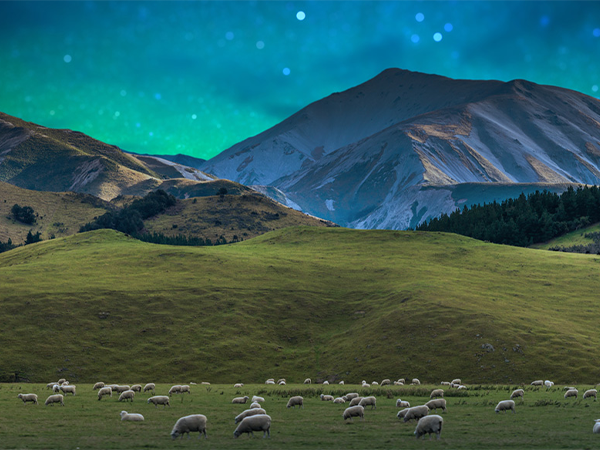
Sheep graze in New Zealand, oblivious to the southern lights show going on overhead. (Image: Getty)
When’s the best time to see the lights?
Theoretically speaking the equinox (in September) should be the best time for viewing the southern Lights, but this isn’t always the case. Since the Aurora is based on sunspots and massive bursts of solar winds, scientific predictions can be unreliable.
Unlike the Northern Hemisphere, which is subject to extreme seasonal light changes, the southern lights can be viewed from Tasmania all year round. It is worth noting (and to some a tad obvious) that the lights can only really be seen at night time, therefore winter is ideal, given daylight savings in Tasmania can stretch the light until 10pm.
The best weather conditions to view the lights
Unsurprisingly, it’s best to view or photograph the lights on a clear, dark night. If you can position yourself looking away from the city, you’ll limit the artificial light, lowlight and air pollution that can affect how vivid the lights look to the naked eye.
Even moonlight can affect how clearly you see the Aurora, so a night with a full moon is probably not ideal.
You also won’t be able to see the light show on an overcast night, as Auroras happen in the upper atmosphere, meaning any cloud cover will cover the show!
How to photograph the lights
Ditch the iPhone. Sorry Apple, but in the case of bright lights at night time, it doesn’t cut it. You’re best to have a professional camera with a wide-angle lens (ideally f2.8 or faster) and a tripod to keep your shots steady. The camera sensor and long exposure will likely reveal a lot more light and colour than you can see with the naked eye!
Choose a spot looking south and ideally away from city lights. Doing this will help to avoid light pollution and flare from the city lights. Shoot in raw format, ideally.
Adjust the exposure to 10 to 30 seconds (any longer and you’ll start seeing stars as trails).
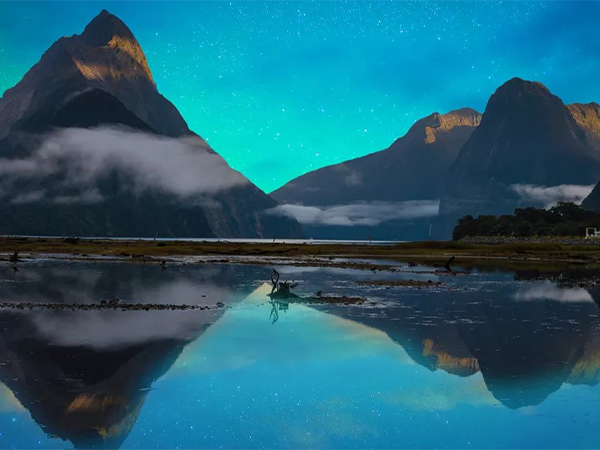
Southern lights, aurora australis, visible from New Zealand. (Image: Getty)
How to know when an aurora australis is coming
For smartphone applications, Matt Glastonbury suggests Star Walk , an interactive astronomy guide.
Aurora Forecast has several real-time maps of the atmosphere and shows how much it is hitting the Earth at any given time
Spaceweather.com includes a visual representation of plasma coming out of the sun.
Stay tuned in to pages with members who are incredibly invested in the Aurora Australis, and courteously update fellow members with news of an incoming lights show. The Aurora Australis Tasmania Facebook group is often how many photographers find the lights with members posting real-time alerts.
What else to do in Tasmania while you’re there
Tasmania is fast becoming one of the food and wine capitals in the country. While you’re there, be sure to spend a night in the Henry Jones Art Hotel. Situated perfectly in Hobart city centre, you’ll be close to everything happening nearby, like the famous Salamanca Markets – or the Farm Gate Market if you’d like to do it less like a tourist and more like a local.
It’s also worth taking a road trip to Cradle Mountain, where you can take part in an invigorating walking holiday among the picturesque landscape, or visit the renowned National Park. Check in with the local wilderness and set up camp in one of the Park’s onsite cabins.
If food and wine are more your thing, you can’t go past beautiful Launceston. Jump in your car and drive through Tasmania until you reach your destination, where you’ll be delighted to find that Launceston and the Tamar Valley have over 30 vineyards to choose from. The region, famed for its cool-climate wines, is now also home to a growing number of beer and cider producers, such as Boag’s Brewery and Red Brick Cider House.
If it’s a great, hearty meal you’re after you can’t go past Launceston’s Black Cow Bistro , which specialises in the finest Tasmanian beef from local producers. The Black Cow Wagyu fillet is our recommendation time and time again.
It is also the perfect state for a long, indulgent road trip. Spend seven days taking in some of the best highlights of Tasmania along this road trip route that loops from Launceston to Cradle Mountain, Hobart, Coles Bay and back to Launceston (with plenty of great stops and detours along the way.
Live in Melbourne? Read our guide on where to see the southern lights in Victoria.
Originally written by Steve Madgwick and updated by Jessica Humphries and Rachael Thompson.
LEAVE YOUR COMMENT
Cancel reply.
Save my name, email, and website in this browser for the next time I comment.
Comments (33)
So glad to see an article that informs Australians of an amazing “birthright”: the aurora australis.
Great that someone is taking the time to explain that this phenomena exists in the Southern Hemisphere as it does in the North. I have seen the lights in both North and South and am amazed each time I have the privilege to watch the dancing sky. My only viewing of the Aurora Australia was way back when I was at school-1950’s. I remember this great red coloration in the Southern sky. Of course we did not know what it was until next day it was explained in the daily paper. I have never forgotten it and would love to see them again in the South. How regular are they appearing in the South. Could one plan a trip with some certainty of a viewing as they do in the North. Get the Tasmanians active in promoting this attraction.
Fantastic info on the Aurora Australia. I would be extremely grateful if I could get some more travel and accommodation info, as I would love to see this beautiful spectacle. Thanking you kindly.
Hi Ann, Special, huh! You can browse our Tasmania content, plenty of ideas there. Or alternatively try tourism Tasmania’s website – http://www.discovertasmania.com.au Hope you get there one day soon. Regards, Steve
I’m planning on making a trip down to Tasmania around September. Just trying to get an idea of what I will see. Is the aurora australis only colourful through a camera? To the naked eye, will it just be white?
Hi Czar, Best to talk to the Aurora ‘chasers’. They will be able to fill you in on everything else you need to know. The Aurora Australis Tasmania Facebook page is a great place to ask your question: https://www.facebook.com/groups/auroraaustralis/?fref=ts Good luck on your quest for the Lights. Regards.
Hi Steve, Last year I went to Hobart in the month of August. But as I was unaware of the fact of the Southern Lights,I missed that… If I visit there again,I will surely catch that up.. Thank you for the information, Sri.
Please kindly enlighten. The above article seems to suggest that the aurora seen by the naked eye is a puff or white clouds, the colours are only seen through the lens of the camera. Can someone please clarify if we actually see the lights ‘dancing’ in the sky. Thanks
In response to Augustine. In Warrnambool, Victoria late July 1998 I clearly saw red and green rays and bands of ‘cloud’ or light in the night sky. The aurora Australis. To answer your question. The light is visible to the naked eye in color.
I am 74 years old but I remember seeing the lights when I was a teenager. I am a south Australian And went to Woodfield high School. Lived in a district called Draper and was fortunate to see the lights one evening and in all it’s glory and the lights were green. After all these years can still remember this awesome sight but didn’t release what they were until many years later. Only saw them on one occasion but there they were for all to see with the naked eye. When I was a teenager the skies were clear, no smog or light pollution and the Milky Way could be seen every night. Have never been to Tasmania but a always wanted to now it’s a must. Would love to experience these lights again
What type of camera would I need? I currently only have a canon 700D
Hi, my family would like to visit Tasmania to view the southern lights. May I know which part of Tasmania we need to stay in order to view the lights. Is there any public transport there from airport if we do not drive.
When would be right timing to sight sounthern aurora in Tasmania and nice spot to sight?.its duration so that i could plan my holidays thanks
Thanks so much for you information. I’m heading to Tasmania next month (September 2016) and am so hoping that I am privileged enough to view this phenomena.
Do you think we can see the southern lights in mid December 2016?
Hi Molly, It’s not peak season but it is possible – you may be lucky. If you are going to Tassie specifically to see the lights, winter is your best chance. Check out the resources on the article for more information. Good luck!
I am planning to go Tas in Jun 2017 with my kids. Do you think I will be able to see Southern lights with naked eyes?
Interested in knowing best times and locations in 2017 to see Southern Lights
Hi Guys, coming from Brisvegas we really need to plan air flights in advance. Would B.O,M. or another website be able to give me weekend dates for later this year that might be a possible shot at seeing the lights. We went to Cockle Creek August last year but it rained the entire weekend and it was a waning moon so not the best opportunity, appreciate guideance. thanks Kathy
Looks like the sky will be active tonight most of the night, but especially good from 1-4am. Unfortunately lots of cloud. Maybe Albany WA will get some clear sky though…
Much thank for information. Helpful indeed. Appreciate much. Tasmania beautiful place. Can article translate to
Hi Tustuyu, We are looking into translating articles, but at the moment, no, we aren’t able to translate into other languages. Let us know if you have any specific questions and we’ll see what we can do. Regards,
I will be visiting Tasmania in mid July 2017. What are the chances of my seeing the southern lights and where would be the most likely place to see them at this time of the year?
Hi Yunus, The darkness of winter is the best chance to see the Lights, but they are very unpredictable, as is nature’e way. Check out the article for some hotspots and websites to see updates. Good luck on your quest. Cheers
Will the moonlight affect the visual of the aurora??
coming from W.A when is the best time to go to Tassie and see a few consistant nights. Any experience on the Northern nights wanting to do them as well. Thank you Janet
great information. We missed lights in Iceland 2 years ago because of fly out times. We can go back in the next 4 years to see them free but the $20,000 for both of us is a bit steep
………..fffffantastic ! We’re heading to Tassie in Feb 19 and looking forward to everything it has to offer. I was there as a child in the 50’s to meet rellies and may hopefully catch up with someone in Launceston. My grandfather worked on the suspension bridge over the Tamar way back when.
So want to do this. Have been to Tassie a couple of times and would love to go again.
Very keen to see Aurora Australis in September. Are there tours available with whom you could put me in contact, please? Best wishes,
Tim Green 0438 318 678
You can photograph the auroras on a smart phone! There are apps that make it entirely possible. I have done it myself in Finland a few years ago and have some brilliant photos. Maybe not as good as an SLR!!
I would really love to see the Southern Lights. I’ll be planning a trip just as soon as it’s safe to travel.
You might also like
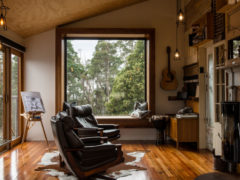
The beautiful Tasmanian road trip you didn’t know existed
If you're ready for adventure, buckle up for the scenic, gourmet drive of your life... Tasmania’s North East is the home of stunning coastline, ecl...

© Australian Traveller Media 2024. All rights reserved.

- All Articles
- Travel Stories
- Travel Tips
- North America
- Central America
- South America
- Middle East
- Job & Career Resources
- Personal Finance & Budget
- Retirement, Retiring Early, & Semi-Retirement
- Living Abroad & Long-Term Travel
- Digital Nomad Lifestyle
- Adventure Travel
- Pop Culture Travel
- Foodie Travel
- Responsible & Sustainable Travel
- Luxury Travel
- Solo Travel
- Student Travel
- Couples, Family & Group Travel
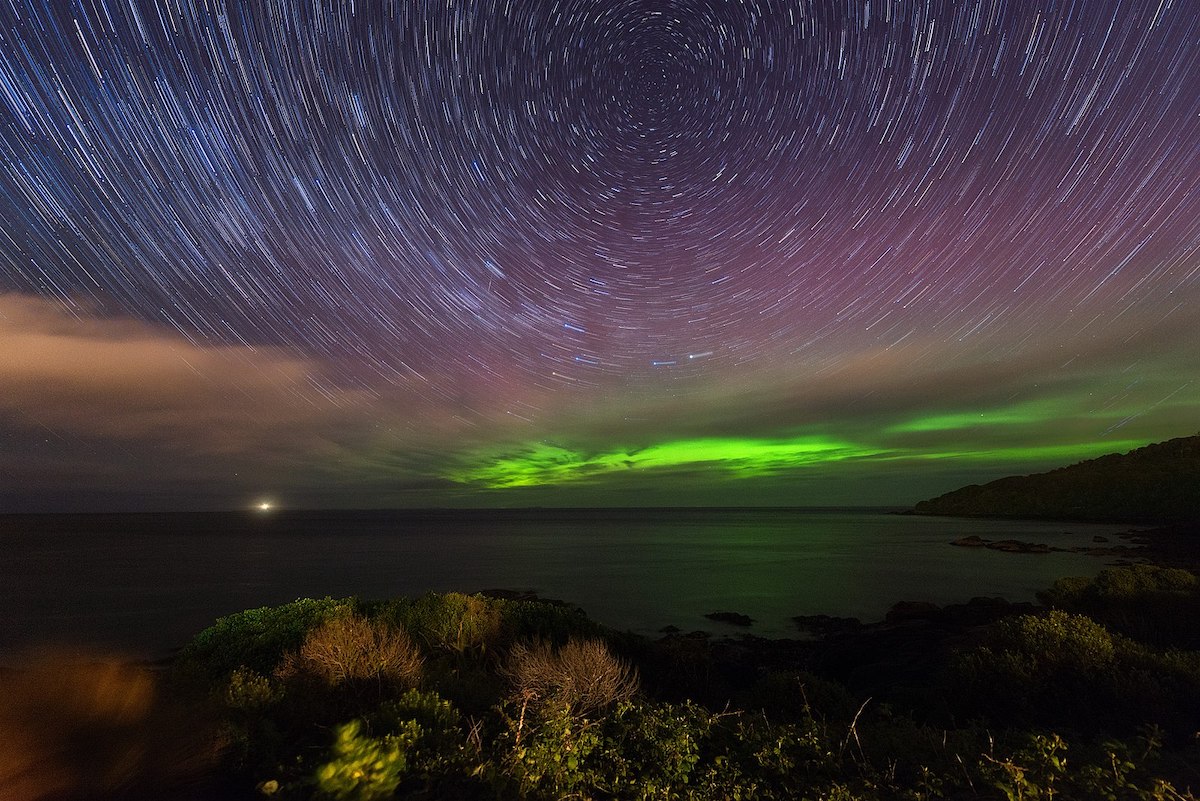
Where to See the Southern Lights (Aurora Australis): 8 Best Destinations
By: Sarah Stone
What Are the Southern Lights?
When can you see the southern lights, where are the best places to see the southern lights.
The Southern Lights, otherwise known as Aurora Australis, is an otherworldly spectacle of light that you can see in the skies of the southern hemisphere. The southern counterpart to the Northern Lights (Aurora Borealis), this celestial event unfolds in a similarly dazzling array of colors.
As luck would have it, certain spots on our planet provide front-row seats to this cosmic display.
Let’s head out on a journey to those places and celebrate the marvel that is the Southern Lights!
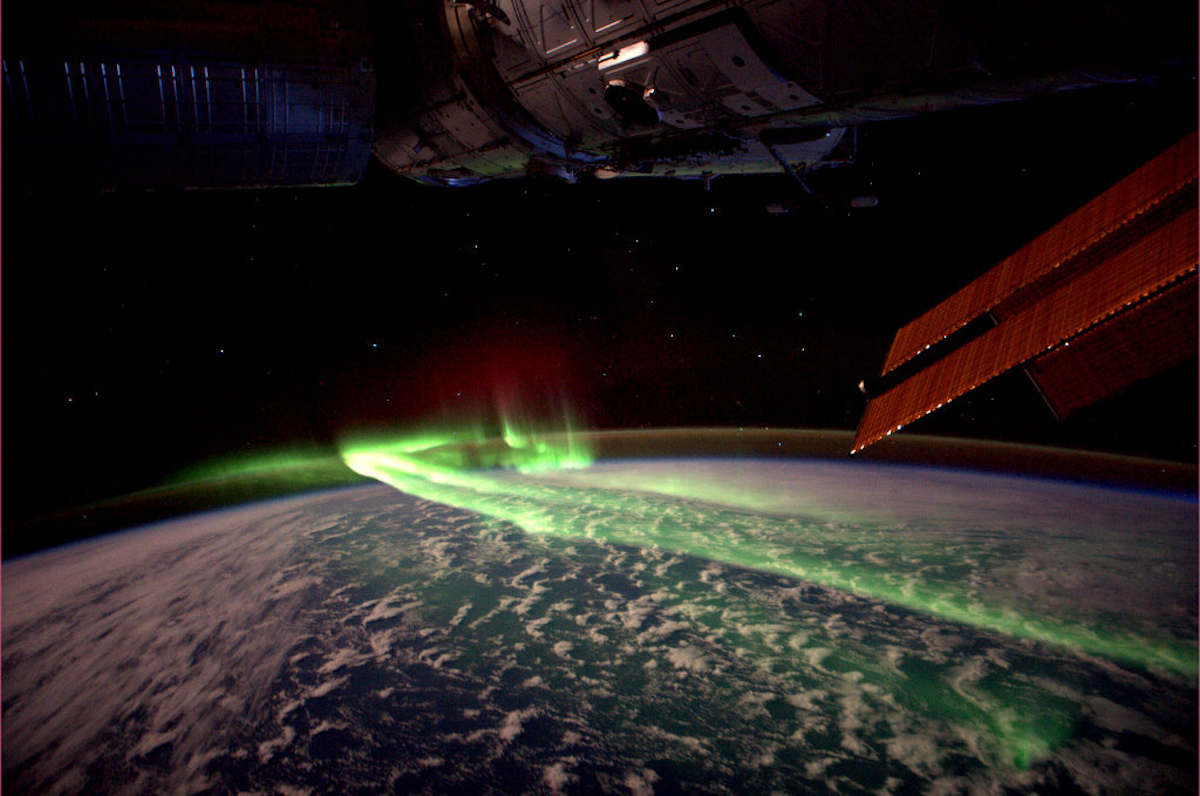
Image by the European Space Agency on Wikimedia Commons
The beautiful displays of the Aurora Australis are actually charged particles from the Sun interacting with Earth’s magnetic field and atmosphere. The Sun periodically discharges a torrent of charged particles, including electrons and protons. These emissions, which can happen during solar flares or coronal mass ejections, invariably contain particles that find their way toward Earth.
When these charged particles near our planet, they are steered by Earth’s magnetic field towards the polar regions. Here, the particles collide with atoms and molecules in our atmosphere, stirring them into a state that prompts them to give off light. The myriad hues in the aurora stem from the specific atomic or molecular species involved in these high-energy exchanges.
In the Southern Lights, green tends to be the dominant color, with occasional red, purple, and pink interspersions. The green results from oxygen atoms in the lower reaches of our atmosphere, whereas the reds are a manifestation of oxygen molecules situated at higher altitudes. The colors you’ll see are influenced by the altitude at which these interactions occur and the prevailing atmospheric conditions.
The Southern Lights’ visibility and intensity are not static but fluctuate in response to several factors. These include the Sun’s activity, the strength of the solar wind, and the Earth’s magnetic field. Not surprisingly, the Southern Lights are most commonly sighted in areas nearer to Earth’s magnetic poles. These include Antarctica, parts of Australia, New Zealand, and other far-flung locales in the southern hemisphere.
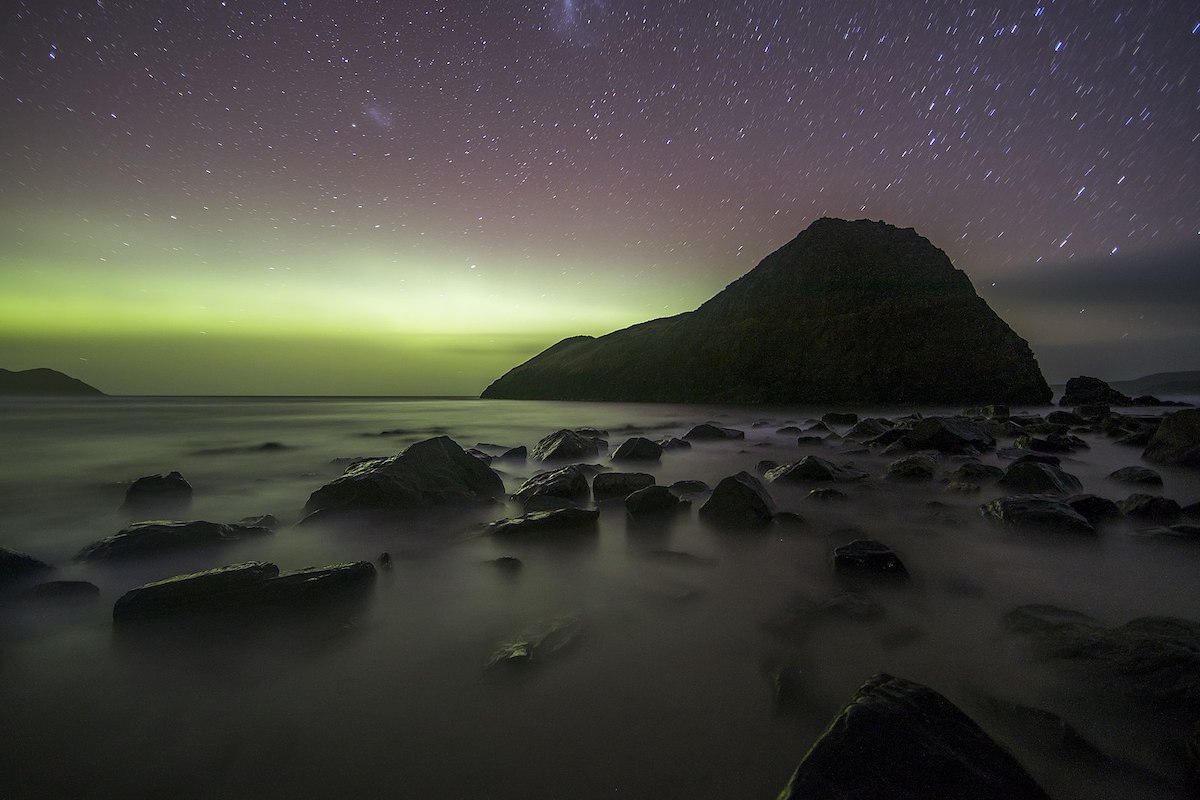
Image via Jamen Percy on Wikimedia Commons
The southern hemisphere’s winter months provide the perfect backdrop for viewing the Aurora Australis—the longer nights provide ample darkness, making the aurora more visible. The period of March through September, and particularly the months of June, July, and August, is optimal for viewing the Southern Lights.
During these months, the tilt of our planet and its orientation relative to the sun create ideal conditions for aurora sightings. And during the peak of the solar cycle, which recurs about every 11 years, you can see more frequent and intense aurora displays—with the next peak coming in 2025. (You can still see the Southern Lights outside this period, though!)

Photo by ThatPhotoGuyNL on Unsplash
Several locations across the globe serve as perfect viewing for the Southern Lights—here are just a few of them:
1: Tasmania, Australia
The island of Tasmania is a standout for Southern Lights viewing. Based in Australia’s southernmost region, Tasmania’s geographical positioning and modest light pollution make it a prime spot. Mount Wellington , a peak on the outskirts of Hobart, is a great lookout point in particular.
2: South Island, New Zealand
New Zealand’s South Island is an ideal location to catch a glimpse of the Aurora Australis. Prominent places such as Lake Tekapo and Aoraki/Mount Cook National Park provide amazing backdrops. Queenstown, with its gorgeous lakes and mountains; and Stewart Island, the southernmost region of New Zealand, also offer vantage points to observe the Southern Lights.
3: The Falkland Islands
The Falkland Islands of the South Atlantic Ocean offer an undisturbed environment that favors aurora viewing. With minimal light pollution and expansive open skies, the islands will give you an immersive experience of the Southern Lights.
4: The Patagonia Region of Argentina and Chile
The southern reaches of Argentina and Chile, notably Patagonia, have some of the most favorable conditions for observing the Southern Lights. Ushuaia in Argentina , often termed as the “End of the World;” and Punta Arenas in Chile are renowned for their proximity to the South Pole, offering a higher likelihood of aurora sightings.
5: South Georgia Island
A remote destination in the southern Atlantic Ocean, South Georgia Island is another fantastic place for viewing the Aurora Australis. This isolated locale’s proximity to Antarctica heightens the chances of Southern Lights sightings. Coupled with the incredible landscapes it offers—glaciers, mountains, and abundant wildlife—seeing the aurora here is absolutely unforgettable.
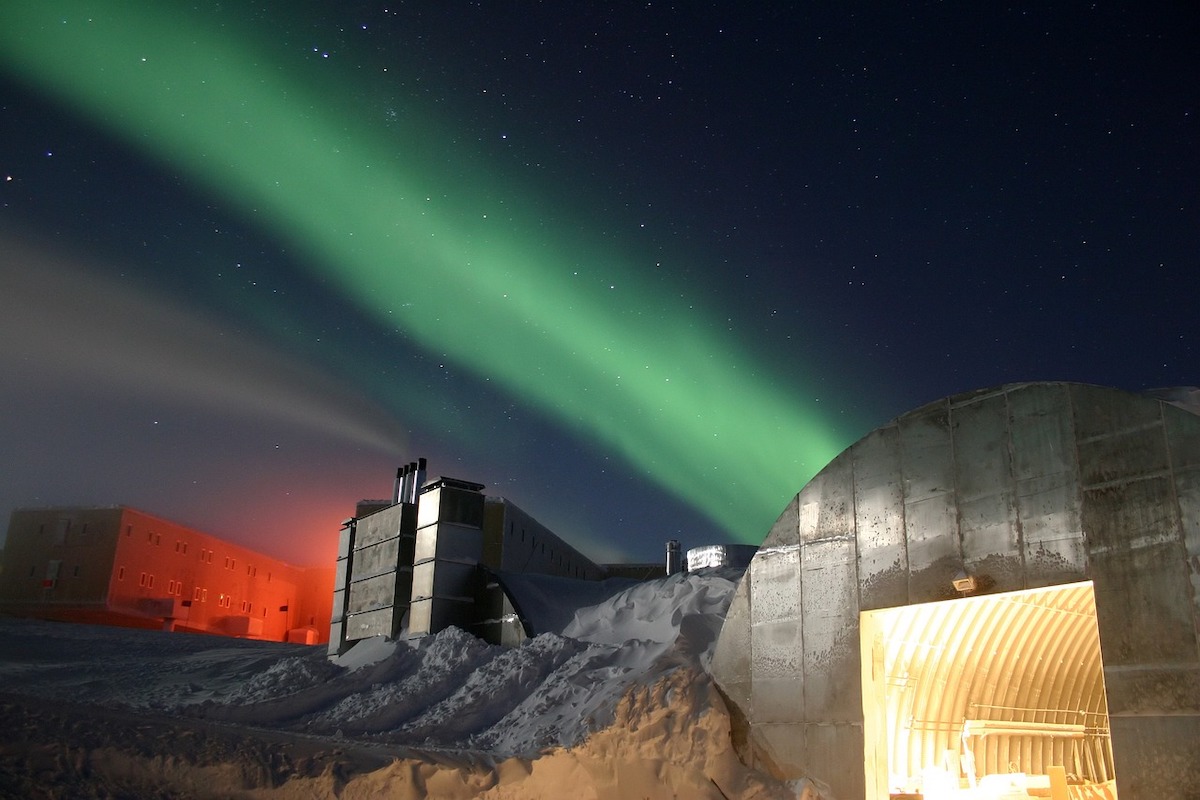
Image by WikiImages from Pixabay
6: The South Shetland Islands
Based near the Antarctic Peninsula, the South Shetland Islands present another opportunity to experience the Southern Lights in a remote, pristine environment. An Antarctic cruise that includes a stop at these islands can provide unfiltered night sky views.
Related: The 3 Best Antarctica Cruises: Kayaking, Photography & More
7: The Southern Tip of South Africa
While the Southern Lights are less commonly witnessed from the southern regions of South Africa, locations such as Cape Agulhas and the Cape Peninsula have occasionally played host to this celestial event.
8: Antarctica
For those with a taste for unique adventures, Antarctica of course is the unrivaled destination to witness the Southern Lights! Expeditions to the Antarctic Peninsula and the surrounding regions during the Austral winter (March to September) can offer amazing views of the aurora, providing a once-in-a-lifetime experience amidst the icy wilderness.
Have you had the opportunity to see the Southern Lights—or their counterpart, the Northern Lights? Share your stories and advice with the Frayed Passport community!
About the Author
Featured image by Ohan Smit on Wikimedia Commons
Related posts:
- The 8 Must-Have Writing Apps for Travel Writers
- What Are Phantom Settlements? Paper Towns & Mountweazels in Maps Around the World
- 7 Ways to Free Up Time as a Small Business Owner
- Best Semi-Retirement Jobs for Creatives
Join our Facebook group and connect with fellow travelers all over the world!
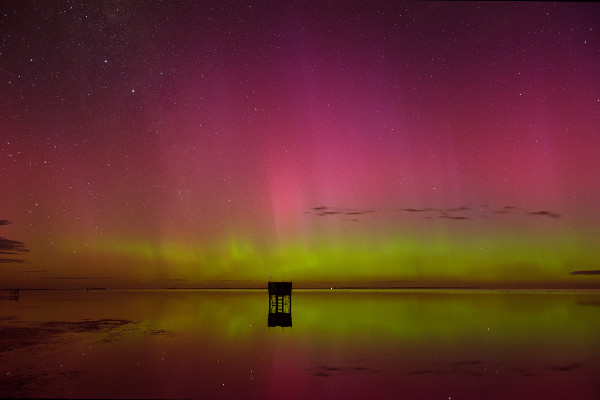
The Southern Lights - Aurora Australis
February 26th, 2018 / Burnham Arlidge
The Southern Lights, commonly known as the Aurora Australis, is one of the world’s greatest wonders.
Travellers come from across the globe to witness the spectacular natural light display in the high-altitude Antarctic region.
The Southern lights are much more elusive than their Northern Hemisphere counterpart- Aurora Borealis . There is significantly less land mass in the Southern Hemisphere and fewer ideal viewing spots to see the Aurora.
However, the Southern Lights are just as, if not more, impressive.
Boasting a breathtaking colour palette that goes beyond the green and blues commonly seen at the Northern Lights, to include pinks, purples, oranges and golds.
Those lucky enough to witness the spectacle are guaranteed an awe-inspiring experience they will never forget.
The Science Behind an Aurora
The Aurora Australis phenomenon occurs when charged particles from solar winds bombard the Earth’s atmosphere and interact with gases in our planet.
These highly energised particles are emitted from the sun and smash into the Earth’s magnetic field at more than 6 million kilometres per hour.
For the most part, Earth is protected from solar winds by the magnetosphere. The magnetosphere is a region of space that surrounds the Earth's magnetic field and has a primary purpose of preventing cosmic rays, such as solar winds from entering Earth’s atmosphere.
However, occasionally, at particular times of the year, a few charged particles from solar winds make their way through the magnetosphere into our atmosphere.
The charged particles move along the Earth's magnetic field lines towards the south and north pole. When they reach the each pole, they collide with atoms in the atmosphere, particularly nitrogen and oxygen, and become increasingly charged.
Once the electrons settle back down to their normal level of excitement they glow, creating the magnificent light display , we know as an Aurora.
The resulting colours are dependent on which atom the charged particles strike and the altitude at which the collision occurs.
Although many colours can be seen, the green, blue and violet hues tend to dominate, with red more often seen when the lights occur at higher altitudes.
The Best Location to see the Southern Lights
The best place to see the Aurora Australis is South Georgia Island . The island is one of the most southerly landmasses in the world and is encased in ice for much of the year.
Although the environment is far too harsh for permanent human residents, many cruise ships choose to stop here during the summer months .
When the weather warms up around 2,000 people populate the island, and basic facilities are made available.
When the solar cycle is at its optimum, Aurora Australis can be seen from anywhere in the extreme southern hemisphere, including from the deck of your cruise ship.
There have also been sightings as far north as New Zealand (the South Island), southern Australia (Tasmania) and southern Argentina and the the .
However, given Antarctica is as far south as you can go, nothing beats the continent itself. From here, the lights are at their most vibrant , most visible and most impressive.
Get a Cruise Quote!
Antarctica Guide do not sell tours, we simply provide impartial advice . If you would like an exact quote with our recommended specialist click Get a Quote.
When to see the Southern Lights
For the best chance of seeing the lights, you need to travel as close to the Antarctic winter as possible, with peak conditions occurring between March and September.
However, the depths of the Antarctic winter are certainly not hospitable to any traveller, with average temperatures plummeting to negative 50 degrees Celsius, harrowing winds and dangerously icy conditions.
In fact, travel during this time is discouraged and practically impossible, unless you are on a research expedition. Luckily, there are excellent opportunities to witness the lights well into March , with year-round sightings often reported.
How to Make the Most of the Southern Lights
The deck on your cruise ship will be the optimum viewing platform to see the Southern Lights. Once they appear, they can continue for some time so make sure you are comfortable and warm.
Photographers will need a sturdy tripod and a camera with manual mode functionality at a minimum. A long exposure setting can bring the image to life by taking in as much light into the lens as possible.
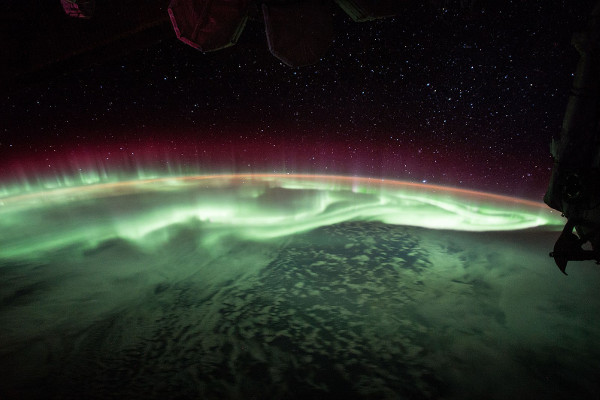
Are the Southern Lights on your Bucket List?
While the Northern Lights are much more accessible and tend to attract more attention, the elusive Southern Lights are exceptional for their dynamic array of colours.
If witnessing the extraordinary lights of Aurora Australis is on your bucket list, make sure you plan to visit as close to winter for the best chance to see the breathtaking light show! To enquire, please use this form .
If you have any further questions about the the Southern Lights - Aurora Australis, then please leave a comment below.
Thank you and happy travels!
Posted on Feb 26, 2018
About the Author Burnham Arlidge
Burnham started his career as a professional tennis player before retiring due to injury. Since then Burnham has thrown himself into adventure travel. He has visited some of the most iconic and obscure parts of the planet - his most memorable experience is Antarctica!
Get a cruise quote to your inbox, today!
Receive a price competitive quote from our trusted Antarctica cruise agent.
Related Posts
August 16th, 2024
August 9th, 2024
July 26th, 2024
July 19th, 2024
Previous Post
Ross Sea Ice Shelf - The World’s Largest Body of Floating Ice
Jane J Peck says
6 years ago
Burnham Arlidge says
Regina Vargas says
5 years ago
Lorena F says
4 years ago
Lorena says
Marion Eve says
3 years ago
I was in Jamaica, in March, in the mid to later 80s. I swear, absolutely, that we saw spectacular southern lights. I have never witnessed such color and intensity. Reds, oranges, but at the time, it was so enormous I thought OMG possible some...bomb had gone off. It was extraordinarily beautiful. Upon my return I remember vaguely a story about them, and their rarity, in some scientific journal, but I can find no reference, now. Have you ever heard of such a thing?
Popular Articles
Get a cruise quote, now.
* Fields are required. Expect a response within 48 hours. Check your spam / junk for your quote.
I agree that your recommended Antarctica specialist can contact me *
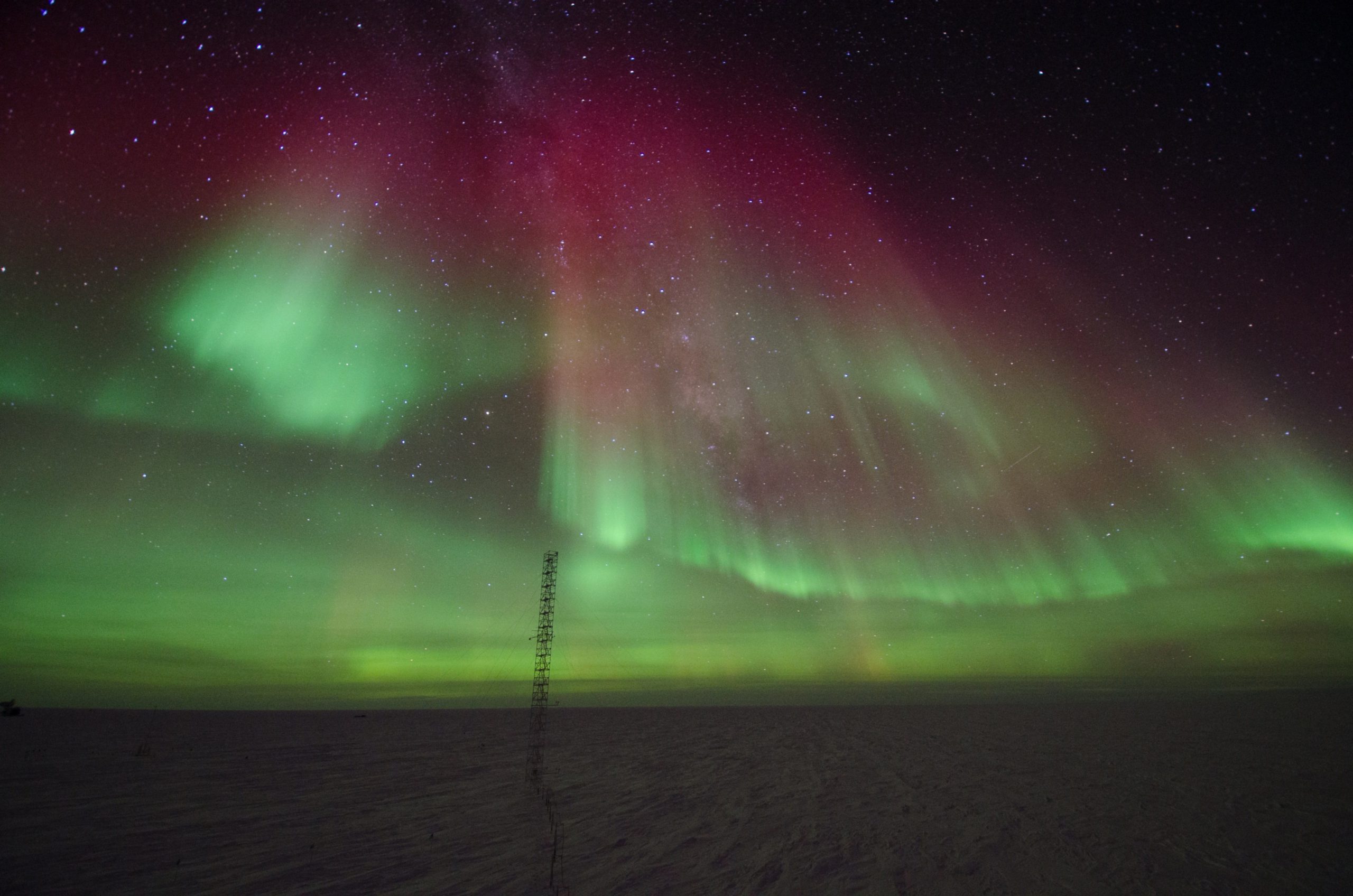
Your ultimate guide to seeing the southern lights in Australia & New Zealand
- 7 minute read
- June 4, 2020
Table of Contents Hide
Tip #1: the winter months provide perfect conditions, tip #2: be at your designated viewing spot by midnight, tip #3: take note of the phases of the moon and plan accordingly, tip #4: the weather forecast is your best friend, stewart island, invercargill , otago peninsula , lake tekapo, mount wellington, tasmania, south arm peninsula, tasmania, cradle mountain–lake st. clair national park, tasmania.
Just under a couple of months ago, the night skies over parts of New Zealand and Australia were lit up by the amazing colors of the aurora australis, better known as the southern lights. From Queenstown to Tasmania, viewers were treated to this rare phenomenon and took to social media to share their snaps . For many people outside of the Oceania region, this may come as a surprise, as auroras are more commonly talked about and photographed in the far north of the world map, spotted over countries like Canada, Norway, and Iceland.
While the aurora borealis may get a lot of attention, we want to share the mystical delights of its lesser–known counterpart in the south. Only visible in the southern hemisphere, the best places to catch a glimpse of the southern lights are in New Zealand and Australia. When, then, should you be jetting off to the lands down under to go on a hunt for auroras? You’ll be glad to know that southern lights can be seen throughout the year. The spectacle takes place at random, when solar particles and atmospheric gases collide to emit the ghostly glow. That said, during these high bouts of sunspot activity, there are times where sky conditions are best to keep a lookout for that lovely glow.
Read on to find out more about the best places to see the southern lights, and the right conditions to look out for if you want to try your luck at viewing the aurora australis!
View this post on Instagram A post shared by Bryan Murphy (@bonvoyagebryan)
Spotting Aurora Australis: When to catch the southern lights in action
Unlike the northern lights, the southern lights aren’t quite as severely affected by seasonal light changes, meaning they can be visible throughout the year. The trick is, dark skies and a clear atmosphere can greatly increase the beauty and visibility of the glow, and as such, the winter months — May to August — are great times to see the aurora australis in all its glory, right until the spring equinox in September.
The best time to see the southern lights at its brightest is when the night sky is as dark as it can get. Midnight is the optimal time, as the sun is on the other side of the planet. Be sure to give yourself plenty of time to get to your viewpoint before midnight arrives to make the most of the hour!
The moon can be incredibly bright and could put a damper on the aurora viewing experience. Plan your excursions for nights that fall between the waning crescent and the waxing crescent, and definitely try to avoid a viewing when the moon is full!
Like any outdoor activity, checking the weather forecast for the night can greatly help you to avoid disappointment. It might be necessary to wait several days or even weeks to find the best conditions and clearest skies. To make things easier, check the Aurora Service website for accurate readings of aurora australis activity levels and hourly forecasts.
View this post on Instagram A post shared by 𝘼𝙙𝙖𝙢 𝙃𝙖𝙩𝙩𝙚𝙧𝙨𝙡𝙚𝙮 PHOTOGRAPHY (@adam_hattersley_photography)
Best places to see the southern lights in New Zealand
Stewart Island has been given the internationally–recognized status of a Dark Sky Sanctuary , meaning the quality of the night sky over this remote part of the world is exceptional. Easily accessible, the island has the perfect nocturnal conditions to make it a true paradise for stargazers and aurora chasers alike.
How to get to Stewart Island by ferry: Ferries depart from the South Island seaport town of Bluff and take approximately 60 minutes to reach Stewart Island. Check the Stewart Island Experience Ferry timetable for more information.
How to get to Stewart Island by plane: Flights depart from Invercargill Airport and take approximately 20 minutes to reach Oban, Stewart Island. Flight times depend on the season — check the Stewart Island Flights timetable for more information.
View this post on Instagram A post shared by NZ Wedding Photographer (@kiwicaptures)
Unable to get to Stewart Island? Invercargill is located close by, on the southern tip of South Island. You might be lucky enough to spot the aurora australis here, but you will need to get away from the city lights in order to catch a glimpse of the phenomenon!
How to get to Invercargill by plane: You can fly directly into Invercargill Airport from Wellington and Christchurch , or catch a connecting flight from Auckland .
How to get to Invercargill by coach: The InterCity bus service departs daily for Invercargill from various locations around the South Island, including from Christchurch , Dunedin , and Te Anau .
View this post on Instagram A post shared by Ian Griffin (@portobellopictures)
While rare, the southern lights have been known to grace the night skies over Dunedin. That said, if you’re going to be in Dunedin, you might as well try your luck over at the adjoining Otago Peninsula. There, you’ll find Hoopers Inlet, two kilometers south of Portobello, known for its great natural beauty and also its reputation as one of the best spots to view the aurora lights.
How to get to Otago Peninsula: The Otago Peninsula is located approximately 15 kilometers from the city of Dunedin and is easily accessible by road. The city’s local bus service covers the Otago Peninsula, with bus 18 making a stop at Portobello. Refer to the Dunedin bus timetable for more information.
Located in the middle of South Island, Lake Tekapo is famous for its clear skies and starry nights. On top of being one of the best places to stargaze, it is also a good spot to look out for the southern lights. Lake Tekapo is surrounded by mountains, so you can set up camp on higher ground to get a better view of the lights!
How to get to Lake Tekapo by coach: The InterCity bus service provides daily trips to Tekapo from Christchurch and Queenstown . The journey from Christchurch takes approximately 3 hours and 45 minutes. The journey from Queenstown takes approximately 4 hours and 15 minutes.
View this post on Instagram A post shared by Jola (@mylife__myadventure)
Highly accessible, Queenstown and its lovely night skies have, on occasion, dazzled its residents with views of the southern lights. With wide, open areas surrounding the town itself, it’s easy to find a place away from the city lights to set up camp for the night.
How to get to Queenstown: You can catch direct flights into Queenstown Airport from Auckland , Christchurch , and Wellington , as well as Sydney , Brisbane , Melbourne , and the Gold Coast in Australia.
Best places to see the southern lights in Australia
View this post on Instagram A post shared by Rovsen Giffard (Felahoglu) (@rovsen.giffard)
Aurora hotspots in Australia are mostly found in Tasmania, thanks to the island state’s southern–most location and its clear skies that are free from major light pollution. Unsurprisingly, Mount Wellington, located close to Hobart on the southeast coastal region, has been known to provide an unobstructed view of the southern lights on a clear night.
How to get to Mount Wellington: Mount Wellington is not far from Hobart , Tasmania’s capital city. The drive from Hobart to the top of Mount Wellington is approximately 21 kilometers and takes about 30 minutes.
View this post on Instagram A post shared by James Garlick (@james.garlick)
Also close to Hobart, the South Arm Peninsula provides a good stretch of flat terrain to get a perfect view of the horizon. If you’re staying for the southern lights, you might as well stay for the beautiful beaches and the relaxing atmosphere.
How to get to South Arm Peninsula: The South Arm Peninsula is easily accessible from Hobart . Various routes along the South Arm Peninsula are covered by the local bus service, with bus 646 departing daily from Hobart City Interchange. Refer to the Metro Tasmania timetable for more information.
View this post on Instagram A post shared by Tim Rogers (@ohmyimagesaustralia)
Considered one of the most beautiful national parks in Australia with its lovely lakes and gorgeous alpine forests, Cradle Mountain–Lake St. Clair National Park makes a great backdrop for an aurora viewing. The park is located in the middle of Tasmania and can be easily accessed from Hobart and Launceston.
How to get to Cradle Mountain–Lake St. Clair National Park: Located in the middle of the island, Cradle Mountain–Lake St. Clair National Park is easily accessible from Tasmania’s two major towns, Hobart and Launceston . If driving by car, the northern entrance of the park is 90 minutes from Launceston, and the southern entrance is 2 hours and 30 minutes from Hobart.
Of course, the night sky hides so much more than just the southern lights and northern lights. For anyone just getting started with astronomy, there’s a world of fascinating planets, stars, galaxies, constellations, and celestial phenomena out there, just out of reach of the naked eye. Check out this beginner’s guide on the top things to see in the night sky with a telescope if you’d love to discover something new!
About TourHero
TourHero is a social travel platform that enables you to travel with like-minded people and fall in love with the journey. We work closely with handpicked local operators to ensure every experience curated is unique and exclusive to your travel group. Come with us on epic adventures and create memories that last a lifetime!
Post written by: Angela Goh
Get exclusive curated content right in your inbox!
- May 28, 2020
Gastronomy Top 10 Korean street food recipes that you can make at home
- 4 minute read
- June 12, 2020
Travel 5 Hidden towns to add to your Iceland travel plans right now
- 9 minute read
You May Also Like
- Destinations
Top 20 Instagrammable temples and ancient sites in Asia
- Jennifer Carnevale
- June 25, 2024
- 8 minute read
Sam Phan Bok: Exploring the weird and wonderful Grand Canyon of Thailand
- December 4, 2020
- 6 minute read
8 Waterfalls you must visit in Nuwara Eliya, Sri Lanka
- December 3, 2020
Best of Phu Quoc: The ultimate sightseeing guide to Vietnam’s largest island
- December 11, 2020
Kakapo to Kea: The unique birds of New Zealand and where to spot them all
- May 21, 2020
5 Glow worm caves you must explore in New Zealand
- March 3, 2021
- Blue Mountains
- Central Coast
- Central West & Orange
- Lord Howe Island
- Hunter & Mid-Coast
- Lake Macquarie & Newcastle
- – The Tweed
- New England & North West
- Outback NSW
- Riverina Murray
- — Albury Wodonga
- Snowy Mountains
- South Coast
- Southern Highlands & Tablelands
- Daylesford & Macedon Ranges
- Geelong & The Bellarine
- Great Ocean Road
- Victoria’s High Country
- Mornington Peninsula
- Phillip Island
- Yarra Valley & Dandenong Ranges
- Mackay Isaac
- Outback Queensland
- Southern Queensland
- Sunshine Coast
- Townsville North Queensland
- Tropical North Queensland
- Whitsundays
- Coral Coast
- Margaret River & South West
- The Kimberley & North West
- Eyre Peninsula
- Fleurieu Peninsula
- Flinders Ranges & Outback
- Kangaroo Island
- Limestone Coast
- Yorke Peninsula
- Katherine & Surrounds
- Alice Springs & The Red Centre
- Arnhem Land
- Hobart & South
- Launceston & North
- North Island
- South Island
- Cook Islands
- New Caledonia
- Philippines
- Switzerland
- United States
- Aboriginal Culture
- Arts & Culture
- Beach Lifestyle
- Eat & Drink
- Nature & Parks
- Adventure & Sports
- Microadventures
- Multi-day Hikes
- Canyoning & Abseiling
- Climbing & Bouldering
- Dog Friendly
- Gravel & Bikepacking
- Kayaking & Paddling
- Mountain Biking
- Skiing & Snowboarding
- Skills & Safety
- Snorkelling
- Trail Running
- Wild Swimming
- Comparisons
- Gear Guides
- Photo Essays
A regular dose of adventure inspiration, trip ideas, latest events and giveaways.

Aurora Australis: Where Can You See the Southern Lights
Amy Fairall
As the Editor, if you read WAE, you've more than likely read something Amy's written. Amy lives on Larrakia land in the NT and is frequently on the hunt for new bodies of freshwater to dunk herself into. She has a preference for adventures slightly off the beaten track, with a penchant for multi-day hikes and a new found love of paddling.
- Author Profile
Learn about We Are Explorers' Editorial Standards
Jess is a Content Editor at We Are Explorers. Her bucket list is long and her weekends are full. She’s an ultralight adventurer but will always sacrifice a few grams to bring a book. Endlessly curious, Jess loves nothing more than discovering new places (real & fictional!), and pushing her limits to the max.
- Editor Profile
For those who haven’t scrolled through Facebook recently, let me tell you, videos of the Southern Lights AKA Aurora Australis are going absolutely off.
In recent days the out-of-this-world colours that vividly light up the southern sky have been putting on a show more spectacular than usual. Aurora Australis is most commonly witnessed in Tasmania and often New Zealand , but there’s been damning visual evidence that the fluorescent greens and magentas have been spotted dancing through the skies of Victoria , South Australia, and even south Western Australia . NSW should be able to see them too – we just need the clouds to clear up!
Usually best seen captured on camera rather than with the naked eye, p eople have been chasing the phenomenon and posting their mind-boggling footage online. But some of the lights have been bright enough to witness without a camera. There are even whispers that the recent light shows aren’t the end of it, and that the solar activity that causes Aurora Australis won’t peak until 2025 !
I’ve done some digging and found clips of the Aurora Australis filmed in a bunch of awesome locations in New Zealand and across southern Australia.
Cue the dramatic music, this is going to be a sight for sore eyes!
What makes Aurora Australis occur?
The colours and lights that are visible during any type of aurora are caused when charged particles (ions) stream from the surface of the sun towards Earth, in what’s known as a solar wind or solar storm.
When this solar wind gets close to Earth, it runs into the Earth’s magnetic field (which protects us!) and is forced around the planet, and further into the solar system.
But! Some of the ions become briefly trapped and travel down the magnetic field lines instead, heading towards both the North and South Poles. The ions interact with gases within the Earth’s atmosphere and create the bright coloured and moving lights we see.
Green and red light is produced by oxygen and blue and purple light is produced by nitrogen.
What’s an electromagnetic storm?
With all the recent aurora activity we now have a new favourite type of storm to discuss – the electromagnetic (also called geomagnetic) kind! But… what does that mean?
Honestly, it just means that aurora activity is amplified. Every time you see an aurora – anywhere in the world – it’s the result of a geomagnetic storm. When there’s a really big one, like what we’ve been observing recently, it means that auroras can be viewed at lower latitudes in places like southern Australia.
Where can you see the Aurora Australis?
Bruny island, tasmania.
Myrtleford, Victoria
Invercargill, New Zealand
Gnowangerup, Western Australia
Bass Coast, Victoria
Wheatbelt Region, Western Australia
Wellington, New Zealand
How do I know when an Aurora will appear?
No one wants to be racing out of bed in the early hours chasing an aurora when there’s zero chance of it happening. Maximise your odds of seeing one by using an app or checking the official Australian aurora forecast .
Auroras are notoriously fickle and sometimes the conditions can be perfect…but nothing happens. The amazing photographs and videos filling our newsfeeds are proof that sometimes those charged particles align just right and put on a spectacular show.
Have you seen a great one recently? Let us know where in the comments!
Aurora Australis FAQs
When can i see aurora australis.
It’s technically possible for the Southern Lights AKA Aurora Australis, to be visible at any time of year. However it’s most commonly seen during winter – around May to August – and also in September during the spring equinox.
Can I see the northern lights in Australia?
The northern lights refer to the Aurora Borealis, which cannot be seen in Australia. Keep your eyes peeled for the Aurora Australis instead. If you’re having trouble remembering which aurora is which, the clue is in the name ‘Aurora Australis’.
How do I see an Aurora Borealis?
The Aurora Borealis is only visible in the northern hemisphere in places including Norway, Sweden, and Iceland. The best months to observe this beautiful display are November through to February.
Where do you find Aurora Australis?
Usually, Aurora Australis is best viewed in Tasmania or New Zealand, however it’s recently been seen in Victoria and even south Western Australia.
Why do they call it the Aurora Australis?
Also known as the Southern Lights, Aurora Australis was named by Captain James Cook. Considering the Northern Lights – Aurora Borealis – were already named, Cook used the same naming convention to name the Southern Lights.
The name ‘Aurora’ comes from the Roman goddess of the dawn – Aurora – and australis is derived from the Latin word for southern.
Can Aurora Australis be seen in Australia?
Yes! Aurora Australis can be seen in Australia, usually best in Tasmania.
Can you see aurora with bare eyes?
It’s possible to see an aurora with your naked eye. However sometimes it’s not as vivid as it appears on a camera.

Is Aurora Australis visible from Melbourne?
Although Aurora Australis may be in the sky near Melbourne , because of the light pollution caused by the city, it’d be near impossible to see it. To see Aurora Australis, you typically need to travel outside of Melbourne to more remote areas, such as Phillip Island , Wilsons Promontory , or Mornington Peninsula .
Can you predict Aurora Australis?
It’s very difficult to predict when an aurora will occur as it depends on solar flares and wind from the sun! However, with longer nights in winter, there’s more opportunity to witness an aurora. You also need the right conditions – low light, which means no moon, and a clear sky, so no clouds.
How long does an aurora last?
An aurora will usually last about 15-30 minutes, but can sometimes last for a few hours.
Is the Aurora Australis rare?
The Aurora Australis isn’t rare in Tasmania, however it’s not as bright and consistent at the Aurora Borealis in the Northern Hemisphere. It’s rare to witness Aurora Australis further north than Tasmania.
How do I photograph the Aurora Australis?
If you’re using an SLR you’ll want to make sure that you have a tripod and switch to manual mode. Use a wide-angle lens with a large aperture (f/2.8 or wider) and set your ISO between 400-1600. Start with a shutter speed of 10-20 seconds.
If you’re using a smartphone it’s a bit trickier to get a good shot, but not impossible! Try to set a longer exposure time and set your phone on a solid surface or tripod. If you can’t adjust your settings manually, consider downloading a night mode app ( NightCap Camera is a good one!), which will allow you more control and ability to optimise your ISO settings.
Feature photo thanks to @skenb on Unsplash
At We Are Explorers we take great pride in presenting content that is fact checked, well-researched, and based on both real world experience and reliable sources. As a B-Corp we uphold high ethical standards and strive to create content that is inclusive, with an an increased focus on underserved communities, Indigenous Australians, and threats to our environment. You can read all about it in our Editorial Standards .
MORE EXPERIENCES

- Travel Guide
Aurora Australis: A Guide to Chasing the Southern Lights

- ~ mins read
While most people have heard of the Northern Lights, few realize that the South has its own magnificent light display. The Southern Lights appear over Australia, New Zealand, Chile, Argentina and Antarctica, producing rainbow skies and bright, shifting ribbons of light. These light displays are rare, and only visible from remote locations. However, with some planning, the right information and a lot of luck, it is possible that you could tick the Southern Lights off your bucket list.
Aurora australis, also referred to as the Southern Lights, occur as a result of fierce solar storms, which send solar winds rushing towards Earth. When the winds reach the Earth’s magnetic field, they trigger reactions with gases such as oxygen and nitrogen and create photons or tiny explosions of light. From these light explosions, thousands of vivid colours can be formed in the sky.
Quick Guide:
- Nadine Zeià ner
WHAT TO EXPECT
The Southern Lights rarely seem colourful to the naked eye. This is because humans struggle to see colours at night. Instead, they might look like a white or grey glow shifting and transforming on the horizon. But this doesn’t mean the colours are not there; with a camera, you can capture their true beauty. The lights look incredible in a photo, appearing as streaks of pale green, blue, yellow and lilac across the sky, or dramatic streams of light on a backdrop of twinkling stars.
WHERE TO SEE THE SOUTHERN LIGHTS
Many places where the Southern Lights can be seen are far-flung and definitely not typical holiday destinations. However, there are a handful of locations a bit closer within reach—in southern Australia, Tasmania and on New Zealand’s South Island. Keep in mind, however, that travelling somewhere with the sole aim of seeing the Aurora Australis can be futile. To avoid disappointment, go to see the destination instead — and perhaps the lights will be a thrilling bonus.
1. The southern coast of Australia
Head to Australia’s wild south coast to see aurora australis. Full of empty, south-facing beaches, photographers have captured auroras from the Gippsland Coast, the Bass Coast, Phillip Island, the Mornington Peninsula and the Bellarine Peninsula. These places all have one thing in common, a crucial clear view towards the ocean. Then, when you are not ‘aurora chasing’, the south coast has plenty going on—especially for hikers, wine lovers and foodies.
2. Tasmania, Australia
The Southern Lights have been spotted all over the island of Tasmania and especially around the capital city Hobart . East of the capital lies a collection of unspoiled islands and peninsulas with quiet, south-facing bays that are ideal for seeing auroras. Bruny Island, Satellite Island, Betsey Island and South Arm are all popular spots. There is no light pollution here at all and it is so undeveloped that you will likely have just penguins for company. The website Aurora Australis Tasmania has a map of locations and more information on spotting auroras in Tasmania.
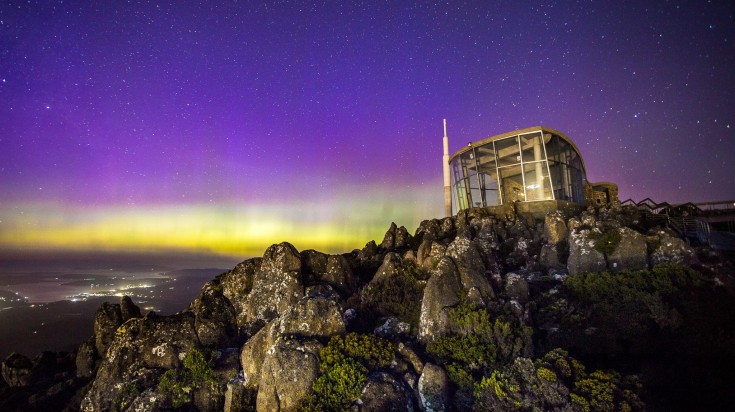
3. South Island, New Zealand
New Zealand is another destination where you can, on occasion, catch a southern light display. Auroras have been photographed on the South Island of New Zealand in places such as Dunedin, Queenstown and Invercargill. East of Dunedin, the rugged Otago Peninsula has several popular viewpoints, including Sandfly Bay, where you’ll share the view with sea lions and seals. In Mackenzie, the Aoraki Mackenzie International Dark Sky Reserve has some of the most perfectly clear skies in the world, as well as the Mount John Observatory , and is accessible by road. On the south coast, Awarua Bay is another spot popular with locals.

4. Stewart Island, New Zealand
Recently designated a Dark Sky Sanctuary , the third largest island of New Zealand, Stewart Island is even closer to the South Pole than South Island. Barely inhabited, it has only 42 street lights and is hoping its outstanding dark skies will attract aurora tourists. When not looking for the lights, there is plenty to do in this exquisite wilderness, including bird watching, fishing, diving and kayaking.
5. Other destinations
There are, of course, other places in the world where you can see the Southern Lights, including South Georgia Island, Macquarie Islan d, the Falkland and distant parts of Argentina such as Ushuaia — but in winter (June to August), most of these destinations are either inaccessible or reserved for serious adventurers. And although you might think that Antarctica would be the best place to see the Southern Lights, in fact, most Antarctic cruise ships do not venture far enough South to catch a glimpse of them.
WHEN TO SEE THE SOUTHERN LIGHTS
The Southern Lights are unpredictable. Created by activity around the sun, they can appear at any time of year. If a display is predicted, certain conditions make the chance of seeing and photographing them more likely. These include:
- As many hours of darkness as possible : The longer it stays dark, the more chance there is of seeing the lights. Winter is the best season, as the days are at their shortest.
- A moonless night : While experienced photographers might be able to work with moonlight, for beginners, a bright moonlit night can obscure an aurora, so the darker the night, the better.
- Clear skies : Low-level clouds will obscure the lights. The best chance of seeing them is on a cloudless night.

5 TIPS FOR SEEING THE SOUTHERN LIGHTS
1. getting a forecast.
Want to find out when this mysterious phenomenon is likely to appear? You can check website forecasts, download apps which will send the information to your phone, check social media or, if you are already at the location in question, ask local residents for advice.
2. Websites
Several websites predict the likelihood of aurora australis appearing and how visible they will be. In Australia, the Bureau of Meteorology issues an aurora watch bulletin. In New Zealand, the University of Otago maintains an aurora prediction website . The website Aurora Servic e provides detailed information on solar activity and auroras at both poles.
There are several apps giving information about solar activity and the likelihood of seeing an aurora. These include Star Walk and My Aurora Forecast and Alerts .
4. Social media
One of the best ways to find out what is going on in the sky is to join a local Facebook group. Run by enthusiasts, these are great places to connect with local aurora chasers for forecasts, photography tips, and more.
5. Photographing the Southern Lights
If you want to return home with a great multi-colour image of the Southern Lights, you will need to get out your camera and practice. You are unlikely to get good shots using a camera phone, but you don't need expensive equipment — a basic DSLR and tripod will be fine. And while you don’t need to be a professional, these hacks and tips will help you get the most out of the experience.
- Switch your camera to manual focus, otherwise, it won’t be able to focus on the lights.
- You need a fast shutter speed (no longer than 30 seconds) so adjust your camera to a large aperture (f4, 3.5 or 2.8) and a high ISO (800–1600 or higher).
- A wide-angle lens will ensure you get as much of the aurora in your shot as possible.
- Take a good tripod for the camera to ensure steady images.
- Choose a remote location and face away from any city or town to avoid light pollution.
- A clear horizon with no buildings or mountains in the way will vastly improve your chances of getting a good shot.
- Stay safe and warm. You will probably be waiting in the cold and dark for quite a long time, so ensure you have warm clothes, a headlamp and spare batteries.
- If possible, scout out your location during the daytime.
The trend for dark sky tourism and the creation of new dark sky reserves and observatories means it is getting easier to see natural phenomena like the aurora australis without having to trek into an icy wilderness. So, whether you are a budding aurora chaser, photographer or just happen to be in the right place at the right time – why not join in and have a go at capturing the beautiful experience for yourself?
Popular Destinations
- Europe Tours
- Everest Base Camp Trek
- Italy Tours
- Spain Tours
- Argentina Tours
- Canada Tours
- Sri Lanka Tours
- Chile Tours
- Antarctica Tours
We use cookies to analyze traffic and give you personalized content and ads. It's an essential part of giving you a great site experience. Click on the 'Accept' button if you agree with our use of tracking and analytical cookies. Please refer to our Cookie Policy for more information.
- Skip to primary navigation
- Skip to main content
- Skip to primary sidebar
- Skip to footer
TravelAwaits
Our mission is to serve the 50+ traveler who's ready to cross a few items off their bucket list.
11 Incredible Places To View The Southern Lights In Australia And New Zealand

- Activities and Interests
- Australia and South Pacific
- Destinations
- New Zealand
- Outdoor Activities
- Southern Lights
Northern lights (aurora borealis) are like, as many have put it, “a celestial ballet of light dancing across the night sky.” But reserve some of your applause for their southern belle cousins, aurora australis, or the southern lights, who put on an equally dazzling performance.
I think of auroras as pole dancers rather than ballerinas, with their wispy red, green, and purplish-blue lights shimming and dipping around the Earth’s geomagnetic Poles.
Near the North Pole, tourists see this performance in Canada, Alaska, Greenland, Norway, and Russia on land stretching deep into the Arctic Circle. On the other side of the globe, the southern lights cluster around the South Pole on Antarctica, meaning aurora australis is usually seen only by penguins and scientists.
While Antarctic penguins have prime real estate to see the southern lights directly over their heads, the southern coast of Australia and New Zealand also offer sightings, as well as being warmer and more hospitable places to holiday.
Unlike the Northern Lights, which are subject to seasonal light changes, it’s possible to see the southern lights year round. Southern auroras arrive on the horizon — their colors are more subtle than their northern counterparts yet achingly beautiful, and their dance is glorious.
Southern lights appear throughout the year but are easier to spot during the fall and winter months in the Southern Hemisphere, from March through September. In addition, auroral activity increases, and therefore, so do sightings during the equinoxes in March and September.
For opportunities to see the southern lights, simply travel as far south as your itinerary permits.

1. Tasmania, Australia
The island state of Tasmania is so far south that Hobart, Tasmania‘s capital, is a launch point for polar expeditions and offers Antarctic attractions .
Seeing the southern lights isn’t a commercialized experience. There aren’t any southern lights tours. It’s possible to see aurora australis from anywhere in Tasmania, and the experience is open to all. Choose a dark night, move away from light pollution, and ensure you have a clear view to the south. Look slightly to the right of the Southern Cross — most locals can point it out to you.
Factors outside your control include solar activity, the phases of the moon, and cloud cover. To maximize your chances, use the Bureau of Meteorology aurora page (updated every 15 mins), the Aurora Forecast app for alerts, and the Aurora Australis Tasmania Alert NOW for real-time sightings. Tasmania has a maximum length and width of about 200 miles so a viewing site might be nearby.
Pro Tip: Eco-travel agencies such as Tasmanian Odyssey help visitors customize holidays to maximize the chance of sightings.

2. Mount Wellington, Hobart
Mount Wellington is a 4,100-foot peak directly behind Hobart. The mountain’s summit offers wide-horizon views from a glass shelter, viewing platforms, and a wheelchair-accessible path. Hobart’s light pollution can weaken aurora sightings but adds an interesting effect to the bottom of a photo. The drive up to the steep summit takes 30 minutes. It can be summer below and snow on the peak. As a consolation prize, even if you don’t see an aurora, the views are amazing . Mount Nelson Lookout is also a suitable viewing site.
Pro Tip: Local aurora chasers prefer non-touristy areas on the South Arm Peninsula , about 25-miles southeast of Hobart. Clifton Beach , Calvert’s Beach , and Goat’s Bluff Lookout are notable spots.

3. Cradle Mountain, Cradle Mountain-Lake St Clair National Park, Tasmania
Cradle Mountain is an area of exceptional natural beauty in the heart of the Tasmanian Wilderness World Heritage Area . The park offers a world-class system of walking tracks , from easy strolls to the legendary Overland Track , a 5- to 6-day hike. The national park is also a spectacular place to see the aurora australis. The star-studded night skies make for amazing night photography, and the series of flat, mirrored lakes become a scenic backdrop for the southern lights. Head to the still waters of Cradle or Dove Lake for a great viewing experience.
Pro Tip: Peppers Cradle Mountain Lodge or the Pumphouse Point are stylish wilderness retreats inside the park. Book well in advance.

4. Bruny Island, Tasmania
Reach Bruny Island via a short drive (and ferry trip) from Hobart. Bruny is the size of Singapore, but with a sparse population. The island offers another of Tasmania’s amazing wilderness experiences. See wildlife, including albino wallabies, quolls , pademelons , fairy penguins, sea eagles, and albatross. There are many beaches and a rural vibe. For views of the southern lights, climb the stairs at The Neck and point your camera southward. This camera pointing is key, as cameras can pick up sightings of the southern lights before the naked eye. Bruny also offers an extensive food scene — including berries and whiskey wine. Bruny Island Cheese Co and the Bruny Island Chocolate Factory are must-visits.
Pro Tip: Glamping or free camping available. Four walls might be better in winter. Book a Vbro .

5. Cape Schanck, Mornington Peninsula, Victoria
The Australian state of Victoria is separated from Tasmania by Bass Strait. There are many spots along Victoria’s 1,200-mile coastline with dark skies and little light pollution. Known as Melbourne’s playground , the Mornington Peninsula offers wineries, country drives, hot springs , beaches, and galleries. On the southernmost tip, Cape Schanck is a popular spot to photograph auroras. Rug up and chat to locals about all things photography. Visit Cape Schanck Lighthouse earlier in the day to take in the Bushrangers Bay Nature Walk , or climb up to Pulpit Rock at the tip of the cape.
Pro Tip: For the magnificent views of the rocky coastline and Bass Strait, head to the Blowhole Lookout , between Flinders and Cape Schanck. Flinders is another good spot for southern lights photography.
6. Phillip Island, Gippsland, Victoria
About two hours from Melbourne lies Phillip Island, another spot for chasing auroras. A popular holiday destination, you’ll need to move away from the crowds to the southern areas where there are lower levels of light pollution. These ruggedly beautiful areas include Churchill Island Marine National Park , Nobbies Centre , and Phillip Island Nature Parks . By day, explore the Bass Strait beaches and visit a koala conservation center. Phillip Island is popular with overseas tourists because of the famous penguin parade, a natural phenomenon made increasingly touristy over the years. As a local, perhaps I have become somewhat jaded about the event. See our story Meet Australia’s Fairy Penguins for a more enthusiastic response.
7. Wilsons Promontory, Gippsland, Victoria
Wilsons Promontory National Park is a standout southern lights observation spot because of its southerly location. A three-hour drive from Melbourne, the “Prom,” as we call it, is for those who love natural adventures such as camping , beaches, hiking, stargazing , and auroras. The pitch-black skies make for the perfect spot. The park caters to avid hikers and those with reduced mobility ,offering step-free walks and fully accessible cabins.
Pro Tip: It’s best to stay overnight rather than try a day trip. Book accommodations well in advance . Going to the Prom is almost a right of passage for most Victorians, so it gets busy in peak season.
8. The Great Ocean Road, Victoria
The famous Great Ocean Road is punctuated by medium-sized towns such as Lorne and Apollo Bay and smaller coastal hamlets. To see auroras, stay in one of the smaller towns where there’s less light pollution. Anglesea is a good choice as it has the undeveloped Anglesea Heath on one side and Port Addis Marine National Park on the other. Aireys Inlet further southwest has limited light pollution. Iconic attractions along the Great Ocean Road, such as the 12 Apostles, are wild, windswept places with viewing platforms. It’s quite possible to take a photo of an aurora over one of these attractions.

9. Lake Tekapo, Mackenzie Basin, New Zealand
New Zealand’s south island scenery will take your breath away in the daytime. But much also happens under the canopy of darkness. The small town of Lake Tekapo is New Zealand’s center for astro tourism. Significantly, the town lies under the Aoraki Mackenzie International Dark Sky Reserve , the largest dark reserve in the Southern Hemisphere. The Mt. John Observatory offers visitors access to powerful telescopes. Tours include the two-hour Tekapo Star Gazing experience to soak up aurora sightings from a steamy hot pool in Tekapo Springs.
Pro Tip: Queenstown, a major tourist hub and a center for adventure tourism in NZ has a Facebook group dedicated to local aurora sightings. This area has more than its fair share of sightings.
10. Otago Peninsula, Dunedin, New Zealand
The Otago Peninsula is a long finger of land pointing out near Dunedin . During the day, it’s an incredible place to see wildlife in their natural habitat, including sea lions, penguins, and albatross. At night, it’s a tranquil place for stargazing and watching for auroras. Aurora shots are often framed by hills and bodies of water, causing reflections that are particularly striking for keen photographers. There’s an Aurora Alert webpage for the area. Dr. Ian Griffin , a local expert, recommends Hoopers and Papanui Inlet on the Otago Peninsula as some of the best viewing spots.
Pro Tip: Stay on the Otago Peninsula to maximize your chances of seeing the southern lights. I can recommend Lanarch Castle , New Zealand’s only castle accommodations.
11. Stewart Island/Rakiura, Tasmania
Stewart Island/Rakiura is the southernmost Dark Sky Sanctuary in the world, reachable via a 20-minute flight or a one-hour ferry ride from Invercargill. Rakiura Island National Park encompasses 85 percent of Stewart Island, and visitors come for nature, hiking, elusive kiwi sightings, stargazing, and aurora sightings. Rakiura means “the land of the glowing skies,” a promising sign! On a good auroral night, there are even sightings from a lookout near the center of Oban, the main town. Twinkle Dark Sky Tours offers equipment for viewing the solar system and the larger cosmos to increase your chances.
Pro Tip: Seeing the southern lights directly overhead isn’t just for penguins. Board a commercial aurora-chasing flight that loops toward Antarctica. There are equinox departures from Christchurch in New Zealand and Melbourne in Australia . In addition, Chimu Adventures offers flights departing from most Australian capital cities.
Related Reading:
- Meet The 12 Apostles, The Highlight Of Australia’s Gorgeous Coastal Road Trip
- Australia’s 5 Most Iconic National Parks
- The 10 Most Unusual Places You Can Stay The Night In Australia
- Antarctica Bucket List Trip: What To Do And Where To Go

Nadine Cresswell-Myatt of Red Bag Will Travel took her first plane trip at age eight. This would not be so unusual except she was flying solo and had never seen a plane before: what were her parents thinking? This adventure set her course for life. For over 25 years, she has crafted stories about her travel adventures for newspapers, magazines, and online travel sites, as well as training others how to do the same. You can follow her international travel on Instagram or read about her Australian jaunts at WeekendNotes . Yes, she’s an Aussie, but with children and grandchildren around the globe and her ability to travel with only a red carry-on bag, you might just find her popping up anywhere. And she still travels solo.
Aurora Tracks See Northern Lights

How to See the Aurora Australis / Aurora Borealis ANTARCTICA

Intrigued by the icy continent of Antarctica? In this guide, we discuss the ins-and-outs of visiting and seeing the aurora borealis Antarctica.
Let’s face it: Antarctica is not your everyday travel destination. It is difficult to access, dangerously cold, and definitely not for the faint of heart. Each year, only handfuls of people ever see the frozen southern continent, and it remains possibly the most untouched and mysterious location in the world.
For those willing to take on the ultimate adventure, Antarctica is an interesting choice. It’s also the only location in the world where the aurora can be seen reliably, being the only land within the southern auroral zone. In this guide we discuss whether it is possible to see aurora borealis Antarctica, when to see them, and how to get there.
Can You See Aurora Borealis Antarctica?
You cannot see aurora borealis in Antarctica, but you CAN see the aurora australis.
The northern lights are considered by many to be the most awe-inspiring natural phenomenon on the planet. For millennia, mankind has stared up to the heavens and observed the auroras, forever forming the myths and legends of old. But you can only find the northern lights at the North Pole. At the South Pole, you will find the aurora australis (southern lights) instead.
- Northern Lights (Aurora Borealis) = North Pole = Arctic
- Southern Lights (Aurora Australis) = South Pole = Antarctica
The greatest difference between the two is that the Northern lights are more accessible due to the greater landmass found within the northern auroral oval. By contrast, the only land within the southern auroral oval, is in Antarctica.
When Can You See Antarctica Southern Lights?
The southern lights over Antarctica exist in perpetuity. They are always there, 24 hours a day, 365 days per year.
During the day, the southern lights cannot be seen from the surface of the planet, due to interference by the sun’s light. Likewise, in the middle of summer there is almost endless daylight, like the midnight sun in the north pole.
As a result, the best time to view the aurora australis is during the wintertime when the nights go on forever. However, Antarctica is not hospitable to travelers in this season. During the wintertime, the temperatures can drop down to a negative 120° F (negative 84° C).
As a result, the best time for viewing the Antarctica southern lights is in March.
How Can You Visit Antarctica Southern Lights?
To be honest, there are very few ways to view Antarctica southern lights. Since there are no roads to drive on, access is limited to either air or sea.
One of the most popular and affordable ways to view the aurora australis regardless of the time of year is by air. There are a number of different tours that offer flights in and around Antarctica for the purpose of viewing the southern lights.
In Australia, Chimu Adventures offers a 16-hour tour aboard a 787 Dreamliner. In New Zealand on the other hand, Viva Expeditions also offer a 10-hour trip aboard a similar Dreamliner. Both providers fly out over the South Sea, with a guaranteed viewing of the elusive lights.
The second most popular way of viewing the southern lights is also the most expensive. There are several companies that provide cruises out to the Antarctica Peninsula, which provide ample opportunities to view the southern lights from the ground.
However, due to weather and solar conditions, there is no guarantee that a traveler will see the lights. Nevertheless, when traveling by sea there are plenty of other things to keep travelers busy, including hikes, kayaking, and a wide variety of different sightseeing opportunities.
Tours to See Antarctica Southern Lights
Below are the tours and cruises currently taking travelers to Antarctica, offering a potential glimpse of the elusive southern lights. As mentioned above, Antarctica is very difficult to access, thereby offering very few travel options. In many cases, they are also very expensive, making these tours prohibitive to many travelers. Regardless, here is a selection of tour options for the curious and adventurous…
South Shetland Islands and Antarctic Peninsula
- Where: Ushuaia, Argentina
- Tour Provider: Epic Polar https://www.epicpolar.com/
- More Information: https://www.epicpolar.com/epictemplate.php?rno=454
- Duration: 10 Days / 9 Nights
- Price: Starting at $5,590
Enjoy a 10-day expedition to one of the most remote destinations on the planet and experience all that Antarctica has to offer.
Although there are a number of different tour providers, offering expeditions to Antarctica by sea, these Antarctica cruises can be quite expensive. This popular 10-day voyage to Antarctica is one of the more affordable choices available today. The smaller Ocean Atlantic has a capacity for just under 200 travelers and makes its way across the Drake passage towards the South Shetland Islands before continuing on to the Antarctica Peninsula.
Tour Highlights
Like many of the more popular cruises to Antarctica, this popular adventure departs from Ushuaia, Argentina. Heading out to see via the Drake passage, the cruise will head out towards the South Shetland Islands, where you will have the opportunity to get up close and personal with Penguins via a zodiac. From there, the cruise will head out to Antarctica where it will pass the Gerlache Strait. Here you will see cliffs of ice rising more than 3,000 feet above the water. Depending on the weather conditions, the crews may return to Ushuaia, or may also go to Tierra del Fuego.
What’s Included
- 10 Days Accommodations
- Hot Tea and Coffee 24 Hours a Day
- Zodiac Landings
- Loaning of Expedition Parka
- Loaning of Rubber Boots
- Professional Guides
- Expert Lecturers
- English-Speaking Team
- Taxes and Surcharges
- Photo Workshop
- Welcome and Farewell Gathering
- Digital Journey Log
Why It’s Popular
This tour is without a question one most affordable ways to spend 10 days exploring the Arctic. Not only will you be able to view the dramatic coastlines from the safety of the ship, but you will also be able to join landing parties via zodiac. With less than 200 travelers aboard each cruise, this tour provides one of the most personalized experiences imaginable.
Polar Circle Air Cruise
- Where: Punta Arenas, Chile
- Tour Provider: Wild Earth https://www.wildearth-travel.com/
- More Information: https://www.wildearth-travel.com/trip/polar-circle-air-cruise/
- Price: Starting at $15,500
Spend more time exploring the Antarctica wilderness by flying directly to the continent from beautiful Punta Arenas, Chile
While many other tours depart by boat from Ushuaia, Argentina, a lot of time is spent traveling from South America to the shores of Antarctica. When you fly into Antarctica instead, you will be able to save travel time, which can be better spent experiencing all that the continent has to offer you. This air-cruise trip will take you down 66 degrees south of the equator, where you will be able to experience the Antarctica wilderness firsthand.
During each trip, the expedition team will make every attempt to reach the polar circle. Situated around 66 degrees south of the equator, the polar circle is further than most explorers of the past had ever reached. You will spend most of your time outdoors exploring all that the continent has to offer via kayak, hiking, or even snowshoeing. Expert polar guides will help you every step of the way as you make your way further south than you ever thought possible. Get up close and personal with nature as you push yourself further than the great explorers of days gone by.
- All Meals Aboard Ship
- Hot Coffee and Tea throughout Voyage
- Complimentary Beverages Aboard Ship
- Includes Flight from Punta Arenas to King George Island
- Transfer to and from Hotel
- Zodiac Excursions
- Evening Entertainment
When it comes to a truly adventurous experience in the rugged Antarctica wilderness, nothing beats the Polar Circle Air Cruise. By flying into King George island, you will have more time to spend exploring the frigid continent. From there, you will have 10 days with an expert expedition team as you push your way ever closer to the polar circle.
Antarctic Explorer Express
- Tour Provider: Aurora Expeditions https://www.auroraexpeditions.com.au/
- More Information: https://www.auroraexpeditions.com.au/expedition/antarctic-explorer-express/
- Duration: 9 Days / 8 Nights
- Price: Starting at $9,375
Save time by flying from Ushuaia across the Drake passage to King George Island, and spend more time experiencing all that Antarctica has to offer.
You will have 9 beautiful days to explore one of the most untamed regions on the planet. Once you arrive at King George Island, the adventure begins almost immediately. From there, you will have the opportunity to take a short trip across to the Antarctica Peninsula where you will be able to enjoy amazing excursions on a zodiac as you explore the waters that are home to the largest mammals on the planet.
Throughout your trip to Antarctica, you will have plenty of opportunities to get acquainted with the fledging penguin chicks and other wildlife that inhabit the secluded bays and coves that dot the coastlines of Antarctica. With the help of a zodiac, you will be able to get up close and personal with some of the most spectacular sites imaginable. Not only will you be able to see penguins and seals, but even whales.
- Airport Transfers
- Hotel Accommodations in Ushuaia
- Charter Flight to King George Island And Back
- Hotel Accommodations and Punta Arenas
- Accommodations Aboard Ship
- Full Board Aboard a Ship
- Complimentary Beverages
- Loaning Expedition Parka
- Loaning Waterproof Boots
- Access to Onboard Medical
- Educational Lectures
- Port Surcharges and Fees
Explore all that Antarctica has to offer, in less time than other traditional cruises to the continent when you fly across the Drake Passage and land on King George island instead. You will have a total of 9 days to enjoy as much of the polar wilderness has to offer including seals, penguins, and whales. Get an up close and personal experience of the frigid continent.
Southern Lights by Flight
- Where: Melbourne, Sydney, Brisbane, or Adelaide, Australia
- Tour Provider: Chimu Adventures https://www.chimuadventures.com/
- More Information: https://www.chimuadventures.com/en/southern-lights-flight
- Duration: 16 Hours
- Price: Starting at $1,295
When it comes to viewing the southern lights over Antarctica, no other expedition can guarantee that you will see the aurora australis like Chimu Adventures can.
Undoubtedly the most popular way of viewing the southern lights is by taking the 16-hour flight from Australia out over the Southern Sea, where you will be guaranteed to see the auroras for hours on end. High above the clouds, where there is no light pollution to obstruct your view, you will get your first glimpses of the southern lights less than 3 hours after takeoff. Fly in comfort aboard a 787 Dreamliner, as you climb to cruising altitude in search of the elusive lights.
With the help of expert astronomers and professional photographers, you will have an experience like no other. High above the Southern Sea, the glowing lights of the aurora australis will fill the inside of the cabin as you cruise along the shores of Antarctica. Throughout the flight, a team of expert astronomers will provide plenty of information about the southern lights and constellations in the night sky. There will also be a team of professional photographers who can assist you in taking the best photos imaginable.
- Choice of Seats
- 2 Full-Service Meals
- Full Bar and Soft Drinks
- In-Flight Entertainment System
- Knowledgeable Experts
The only possible downside to this very popular Antarctica southern lights flight is that they are constantly selling out. You will need to plan months in advance if you want to take a flight over the polar circle to view the aurora australis. At just over $1,200, this flight is the most affordable way to view the dancing lights. No other tour to Antarctica can guarantee that you will be able to see the southern lights, let alone, be able to see them for hours on end.
Final Thoughts on Aurora Borealis Antarctica
This brings to a close our travel guide to seeing the aurora in Antarctica. Although it is not possible to see the aurora borealis Antarctica, it is possible to see the aurora australis instead. The aurora australis, as we discuss in our article on how to see the aurora australis here , is basically the same as the northern lights but on the other side of the world.
One thing to note with regard to seeing the aurora australis / aurora borealis in Antarctica is that it is no easy feat. It is very difficult to access, as well as expensive, and your ability to access the frozen continent is dependent on the flights and cruises that go there. While it is possible to theorize on the best times of year to see the Antarctica southern lights, the reality is that you will be beholden to the flights and cruise lines schedules.
If you’re up for the adventure, a visit to Antarctica is unlike any other travel experience you will ever have, offering so much more than just a glimpse of the aurora.
Happy travels!
Related posts:
When & where can you see the southern lights aurora, how to see the southern lights new zealand, how to see the southern lights argentina & chile, how to see the southern lights tasmania australia, related posts.

Wondering how to see the Southern Lights Argentina & Chile? In this guide, we explain how, when and where you can see the southern lights…

You’ve heard of Northern Lights, but what about Southern Lights? In this complete guide to the Aurora Australis we answer your questions, including what are…
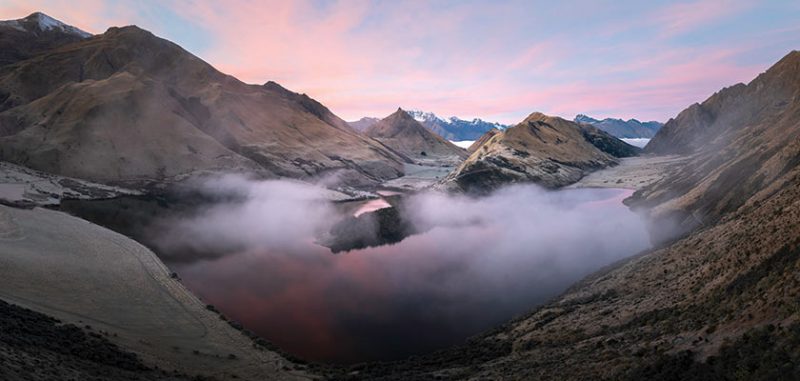
Want to see Southern Lights New Zealand? In this comprehensive guide, we discuss where and when to see the aurora australis in New Zealand, plus…
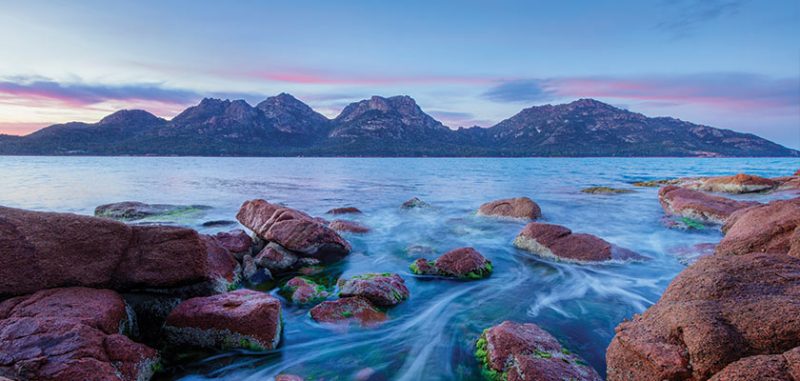
Planning to see the Southern Lights Tasmania, Australia? In this comprehensive guide, we explain where and when you can see the aurora australis in Tasmania,…
- Retail stores
- Fuel prices
- Help & support
Where and how to see the Aurora Australis in Melbourne and Victoria

Posted May 01, 2024
With a bit of planning, you can see the spectacular Aurora Australis and Southern Lights even in skies above Melbourne.
Seeing the Aurora Borealis is a bucket-list item for many Australians, with Finland, Norway and Alaska among the top places to see the Northern Lights . But that means saving up for a trip, travelling upwards of 15,000km on a long-haul flight, and bracing yourself for extreme cold, with autumn, winter, and spring being the best times to see the Northern Lights.
Luckily, there’s an alternative. The southern hemisphere has its own version of the Aurora Borealis called the Aurora Australis, and while it’s less famous than its northern twin, it’s just as magnificent to behold.
Victoria is one of the best-placed locations to witness the Aurora Australis, with keen stargazers able to spot the Southern Lights even within Melbourne. Astronomers also predict that late 2024 and early 2025 will potentially be a peak period for auroras, because of the nature of the sun's cycle.
What is an aurora?
Although auroras are only visible at night, they’re actually caused by a celestial body visible only during the day - the sun.
“The aurorae are all about the sun, and what the sun is doing,” says Russell Cockman, a member of the Astronomical Society of Victoria and former Solar Section Director.
Cockman explains that when you see an aurora, what you’re actually seeing is ‘solar wind’ - masses of charged particles (or ions) that are constantly emitted from the sun.
“Basically, the Earth is constantly being bathed in the solar wind, and we don't even notice it.”
This solar wind can vary in intensity just like winds on Earth; often it’s a gentle breeze but occasionally it’s stronger, like a gale made up of countless charged particles.
When these particles reach Earth, they’re funnelled towards the north and south poles by the planet’s magnetic field. Here, they can end up in Earth’s upper atmosphere, around 300-400km above sea level.
“The energy of these particles, when they hit the molecules and atoms in the Earth's upper atmosphere, can cause those molecules to become ‘excited’,” says Cockman. “They will then give off light of various colours, reds and greens and perhaps some blues and violets.”
“On the ground, we see those displays of light as the aurorae.”
What’s an antipodean aurora?
The Aurora Australis is the southern hemisphere’s answer to the famed Aurora Borealis, and it can be spotted throughout Victoria, but usually in the far south.
However, during periods of strong solar activity, it’s possible to see the Aurora Australis across southern Australia (including Victoria) and as far north as Canberra, Sydney and even southern Queensland.
In May 2024, thousands of Melburians and Victorians were treated to a dazzling display of stunning pink and green hues, which the Bureau of Meteorology attributed to the strongest geomagnetic storm in more than 20 years.
The reason it’s often harder to spot the Aurora Australis comes down to geography. “The Aurora Borealis is better known because there’s more landmass in the northern hemisphere in the latitudes where the aurora can be observed from,” Cockman says.
“Whereas our southern hemisphere is mainly water.”

Aurora hunters have seen the Southern Lights in many parts of Victoria, including south east of Melbourne, in Tooradin, where this photo was taken in 2023. Photo: Russell Cockman
How to spot the Aurora Australis in Melbourne and Victoria
It’s possible to spot the Aurora Australis by luck, but your chances are vastly improved with a little preparation.
Best locations around Melbourne and Victoria
The further south you are, the more likely you’ll glimpse the Aurora Australis. But it’s just as important to have minimal light pollution, as well as an unobscured view of the southern horizon.
Within Melbourne, Cockman recommends Rickett’s Point in Beaumaris (“Probably the best site in Melbourne to have a look for the Aurora Australis”) because of its clear, south-facing view and lack of light pollution.
Further afield in Victoria, he also notes Portsea, Queenscliff and Cape Schanck as good aurora-spotting options, as well as anywhere on the state’s southern coastline.
Peak period for auroras relates to sun cycle
Much like the Earth has seasons, the sun also goes through a cycle of sorts. The difference is that the solar cycle takes around 11 years in total and measures the number of sunspots on the sun’s surface.
The period that has the peak number of sunspots is called ‘solar maximum’ and features increased levels of ions being ejected out into space and towards the Earth – where they can create auroras.
“We're heading towards the solar maximum around perhaps the end of 2024, early 2025,” says Cockman, meaning we’re potentially coming into a peak period for auroras.
Auroras can be seen year-round, but they often increase around the annual spring and autumn equinoxes.
“That is simply due to the fact that the Earth's magnetic field is better aligned with the solar wind during those times of the year,” Cockman says.

If you think an aurora is occurring but can't quite see it, try taking a photo to see the colours better. Photo: Russell Cockman
Signs of an aurora and why it's worth taking a photo
If asked to picture an aurora, you might think of a starry night sky with undulating waves of green, red, pink, blue and purple.
While that’s an accurate representation, auroras can also look a lot more subdued if there’s only a small amount of solar wind.
“If it's a moderate display, you may expect to see a sort of a whitish band fairly low down to the south... and you might see some beams of light coming up from the horizon into the sky. If it’s a particularly good display you may start to see some colours.”
If you think you’ve spotted an aurora but can’t quite see the colours, Cockman recommends taking a photograph. “The colours will come out very easily in a digital photo of the display, (with) better colours than what the eye can see.”
You may need to enhance the hues and saturation in a photo-editing program such as Adobe Photoshop, to get a truly spectacular image.
Check the space weather forecast
Solar wind is a type of ‘space weather’. Just like regular weather, you can look up the space weather forecast on the Australian Bureau of Meteorology to see how much solar activity is predicted, helping you determine if it’s a good night to go aurora hunting.
You’ll also want to check the regular weather forecast, as it’s more difficult to see an aurora in heavily clouded skies.
Consider a stargazing road trip
If you're interested in travelling further afield for a spot of stargazing or for a better chance of seeing the Aurora Australis in the night sky, make sure you're prepared. Before you take off, ensure your car is safe by completing these important safety checks , and have a car safety kit on hand in case of an emergency.
Being road trip happy is the best. Sign up to Emergency Roadside Assistance before you leave →
Related reading

The best winter hikes near Melbourne

The best waterfalls to explore in Melbourne and Victoria

Where to find the best natural hot springs in Victoria
This site will not function correctly without JavaScript enabled. Please enable JavaScript in your browser.
We use cookies and other technologies to understand and improve your browsing experience. By using our site, you agree to us collecting this information and to our Privacy Charter .
Soft Serve News - Dark Mode
(for better nighttime southern lights viewing, this may help your eyes stay adjusted to the dark when using a cell phone outside.), aurora australis (southern lights) forecast for tuesday, august 20, 2024.
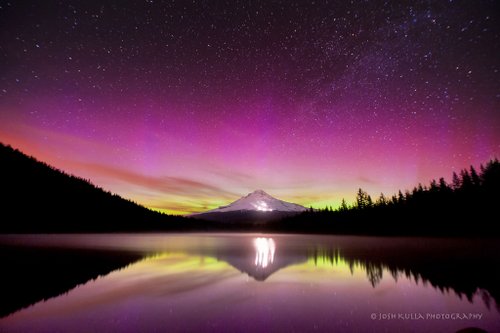
Latest Forecast = in 12 minutes, the Aurora will be Quiet
When and where are the southern lights tonight in australia and new zealand, here's everything you need to know. . ., the soft serve news aurora prediction program estimates that . . ..

Want free access to the Aurora three day forecast?
email me the link .
Aurora is returning to Australia for an otherworldly 2025 tour
- X (formerly Twitter)
Late summer is set to bless us all with some stunning visions of the Aurora over four key nights. No, not Aurora Australis but the Norwegian alt-pop fave, Aurora .
She's returning to our shores with her fourth album What Happened To The Heart? locked and loaded for a run of gigs at the start of February. Be ready for sublime performances of her shimmering, intricate live show in Walyalup/Fremantle, Eora/Sydney, Naarm/Melbourne and Meanjin Brisbane.
Aurora's distinctive vocals and sometimes ethereal, sometimes beat-heavy alt-pop is a sight to behold, and creates an enrapturing live show that must be experienced at least once in our time on this planet.
Considering her stunning Like A Version performance of Massive Attack 's 'Teardrop' clocked in at #54 of the Hottest 100 of Like A Version, it's safe to say these shows are going to sell quickly.
Tickets for Aurora's down under leg of her What Happened To The Earth? tour are on sale from 11am local time on Friday 16 August, with presales kicking off the say before on August 15. Check out the tour's website for more info.
Absorb all the important dates and details below and get ready for an otherworldly experience with Aurora.
Aurora What Happened To The Earth? Part 4 Tour
- Thursday 6 February - Fremantle Prison, Whadjuk Noongar Lands, Fremantle WA
- Saturday 8 February - Hordern Pavilion, Gadigal Lands, Sydney NSW
- Tuesday 11 February - MCA, Naarm, Melbourne Vic
- Thursday 13 February - Fortitude Music Hall, Turrbal Lands, Brisbane Qld
AURORA covers Massive Attack 'Teardrop' for Like A Version [2017]
Aurora really just gave birth to an indie pop album
Castles, carrots, TikTok fame, and new music: AURORA always gives the best interviews
Timelapse video shows northern lights glittering from the top of New Hampshire mountain

Skies over the U.S. were once again treated to views of the aurora borealis, also known as the northern lights
The Mount Washington Observatory of New Hampshire captured a timelapse of the phenomena in the wee hours of Monday morning, catching the greenish-blue colors that blanketed the state's sky.
"Time-lapse of the aurora as seen from the summit earlier this morning," reads a post shared by the observatory . "The lights on the right side correspond to Berlin, N.H. and the lights on the left side correspond to Lancaster, N.H. The center of the video corresponds to roughly due north."
Auroras of different colors appeared over other states, as well, with some images from Ithaca in upstate New York showcasing a more pinkish-orange pallet.
The National Oceanic and Atmospheric Administration (NOAA) predicted late last week that coronal mass ejections – clouds of plasma and charged particles – making their way toward Earth would drive a geomagnetic storm that could make the auroras visible from northern and upper Midwest states, from New York to Idaho.
NOAA had been tracking three coronal mass ejections last week, two that erupted from the sun on Wednesday and one Thursday from a solar flare. All were expected to arrive over the weekend, according to NOAA Space Weather Prediction Center's forecast discussion , coinciding with the Perseid meteor shower.
The NOAA forecast model has predicted that the lights could again be viewable in multiple states on Monday night.
What are the northern lights?
The northern lights are a luminous glow seen around the magnetic poles of the northern and southern hemispheres, according to the University of Alaska Fairbanks Geophysical Institute. Known for creating ribbons of colorful light in the night sky, the aurora borealis are polar lights, or aurora polaris, that appear in the northern hemisphere.
The southern hemisphere has its own polar lights known as the southern lights, or aurora australis, which create their own dazzling display.
Put simply, auroras are a result of the sun interacting with the Earth’s atmosphere. A collision between electrically charged particles from the sun and gases in Earth’s atmosphere produces a series of minuscule flashes that appear like moving lights in the sky.
The charged particles are pulled toward the North and South poles due to Earth’s magnetic field.
While that magnetic field usually protects the earth from solar winds, the winds can occasionally get strong enough to bypass the field, allowing particles and gases in the magnetosphere to interact and generate the colorful displays, according to the Geophysical Institute and the Canadian Space Agency.
Contributing: Eric Lagatta, USA TODAY
- Travel recommendations
- Travel in Canada
- The taste of travel
- Tips & tricks
- Travel experiences

The best places to see the Northern Lights (in all their glory)

Time to start practicing your best 😮 face: aurora activity is about to peak. From September 2024 to March 2025, the world will see brighter and more frequent sightings of the Northern Lights. And it’s all because of something called the solar maximum—or when solar activity is most active. Just in time, we pulled together the top destinations to catch Earth’s sickest light show. So you can be sure you have the best seat in the house.
While the auroras are certainly remarkable, there’s a scientific reason they appear. The phenomena occur when charged particles from the sun enter Earth’s atmosphere and interact with the planet’s magnetic field, which redirects them to the North and South Poles. (Note: The auroras in the southern hemisphere are aptly called the Southern Lights, or aurora australis.)
More northern locations like here in Canada—as well as places like Norway and Iceland—offer increased chances of seeing the aurora borealis. This year, as we enter a solar maximum, the list of the best places to see the Northern Lights has expanded even further.
But when do I book?
The best time to see the Northern Lights will be between the fall equinox on 22 September, 2024 and the spring equinox on 20 March, 2025 . Several destinations across North America and Europe will serve as excellent aurora viewing points—more on those below—and you’ll need to keep a few things in mind as you book your travels. For starters, try to avoid dates where a full (or nearly full) moon will be present; the light can make it difficult to see the weaker light displays. You’ll also want to be prepared for late nights, as peak viewing is usually between 10 pm and 2 am local time .
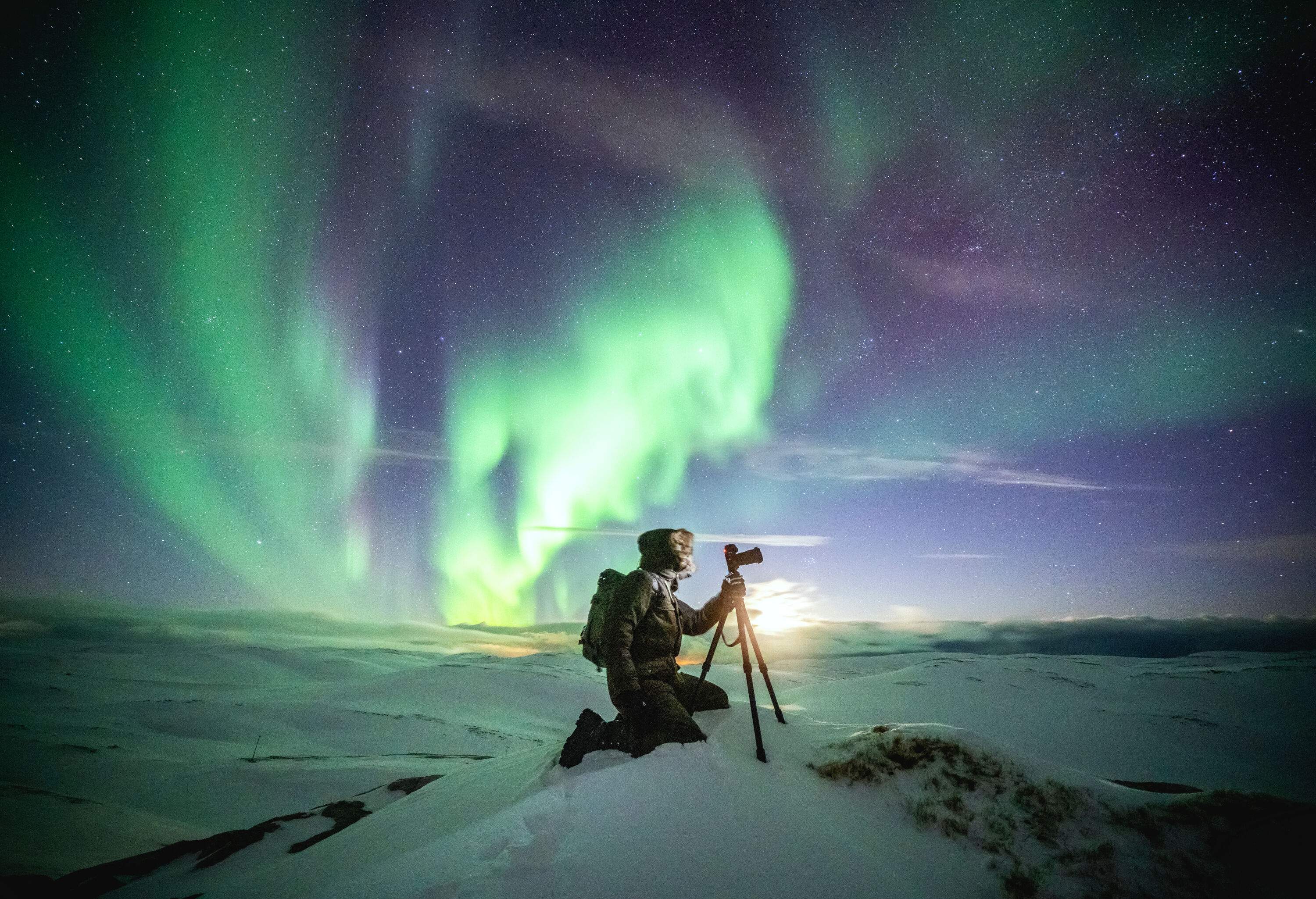
Where can I score a deal?
While the cost of flights to places where you can see the auroras will vary by destination, it’s possible to find tickets on the lower end of the price spectrum —especially if you book early. KAYAK was also able to identify the best price deals for flights to popular places to see the Northern Lights in 2024 and 2025 —from Alaska and Montana to Reykjavík and the Shetland Islands.
North American deal destinations to see the Northern Lights.
- Glacier National Park , Montana: 10% decrease in airfare YoY
- Fairbanks, Alaska : 9% decrease in airfare YoY
- Edmonton, Alberta, Canada : 6% decrease in airfare YoY
European deal destinations to see the Northern Lights.
- Tromsø, Norway : 22% decrease in airfare YoY
- Shetland Islands, Scotland : 9% decrease in airfare YoY
- Reykjavík, Iceland : 9% decrease in airfare YoY
Top 5 best places to see the Northern Lights in North America.
Fairbanks, alaska.
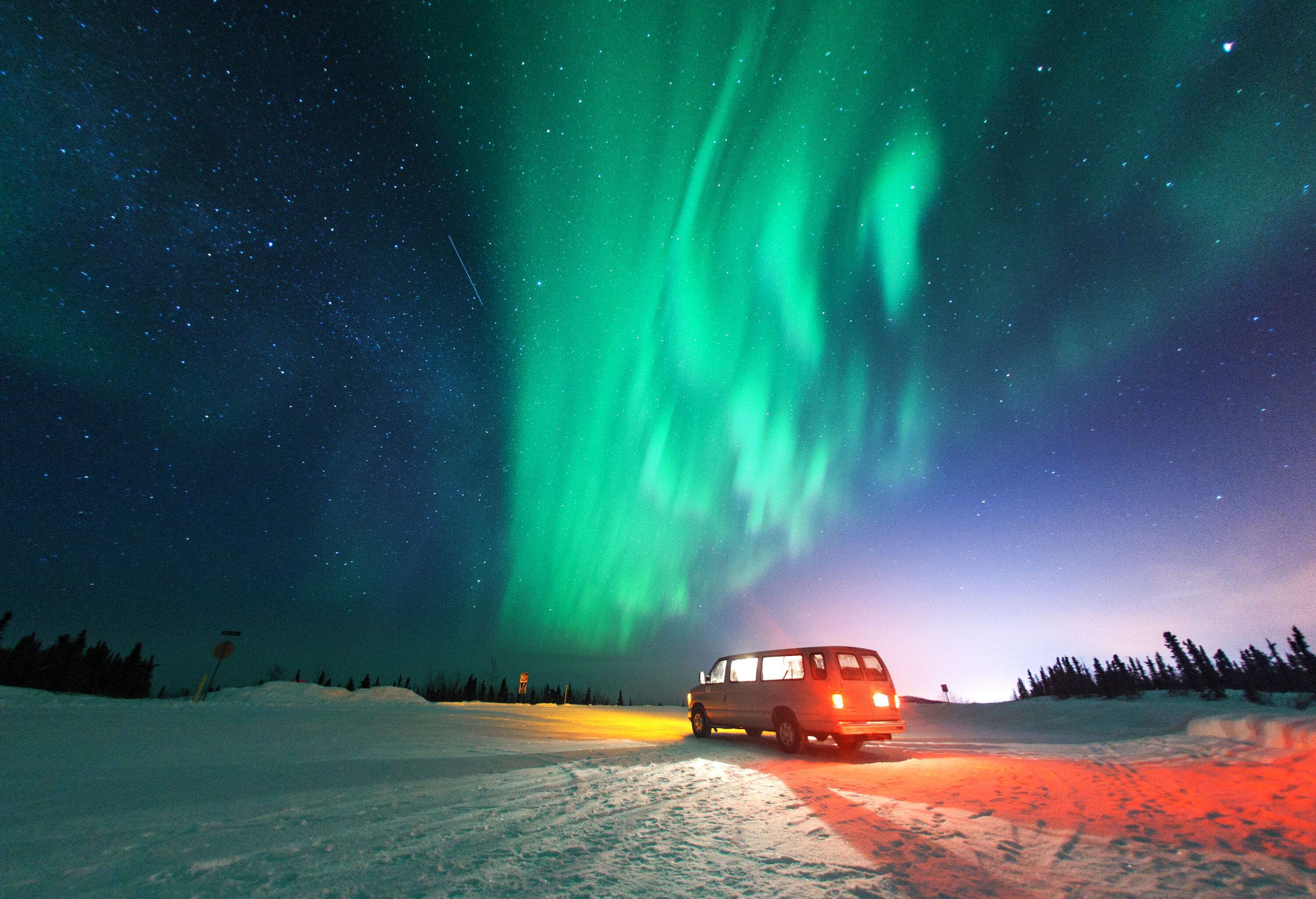
Average flight price to Fairbanks : $680
When it comes to the best places to see the Northern Lights, Fairbanks, Alaska has made a permanent mark on the map. Along with ideal viewing conditions—cold, dark nights and a location directly underneath the aurora oval—Fairbanks boasts ice fishing, dog sledding and more, making it the perfect winter escape. No wonder searches are up 30% this year.
Find a flight to Fairbanks
Glacier National Park, Montana
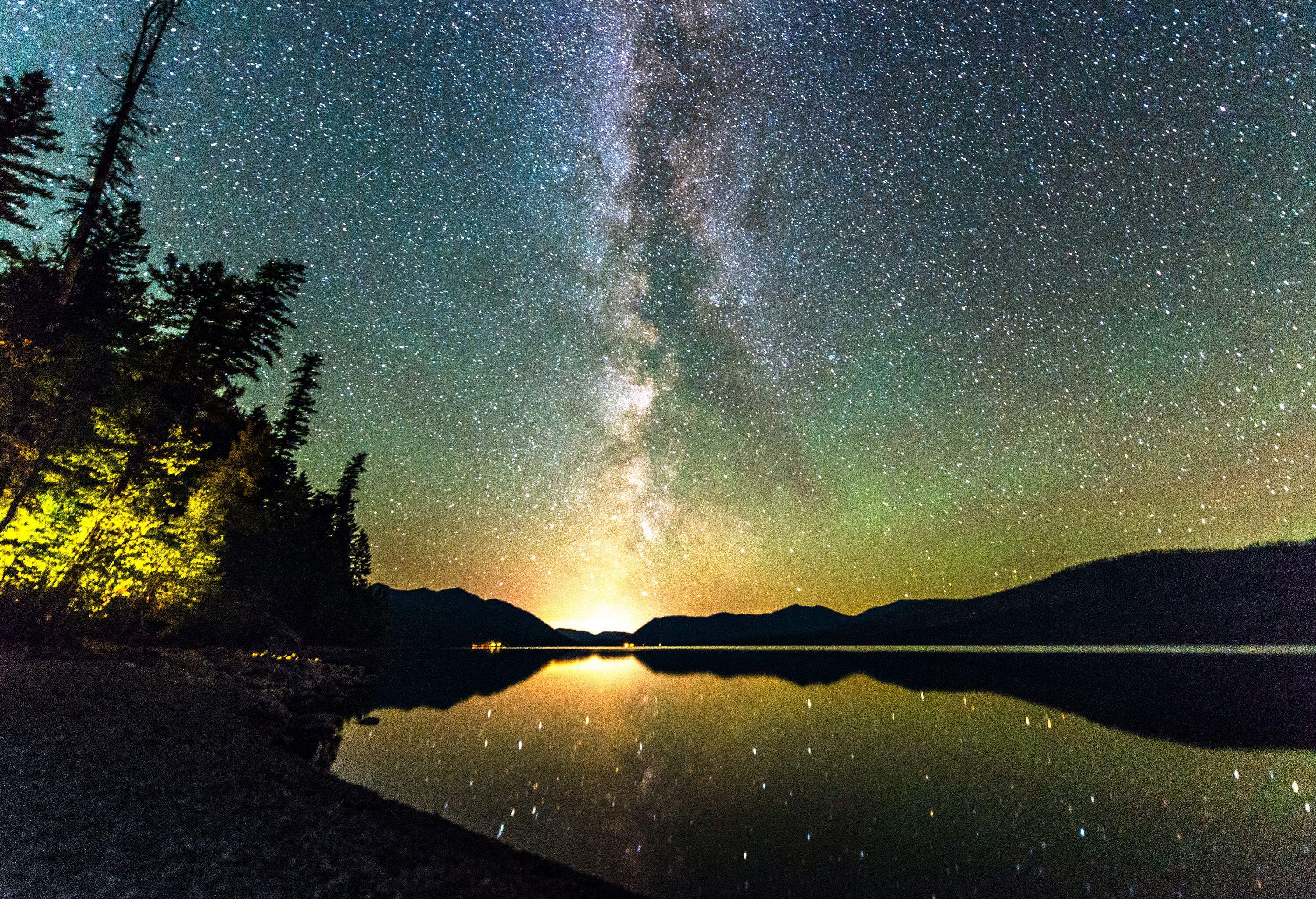
Average flight price to Kalispell : $583
With its remote location in northwest Montana and lack of light pollution, Glacier National Park is one of the top places to see the aurora borealis in North America. For prime light show conditions, plan to visit when the Kp-index (measurement of the strength of geomagnetic activity) is high and head to the best viewing spots—Looking Glass Road, Lake McDonald and Bowman or Kintla Lake (the best watchpoints).
Find a flight to Kalispell
Headlands International Dark Sky Park, Michigan
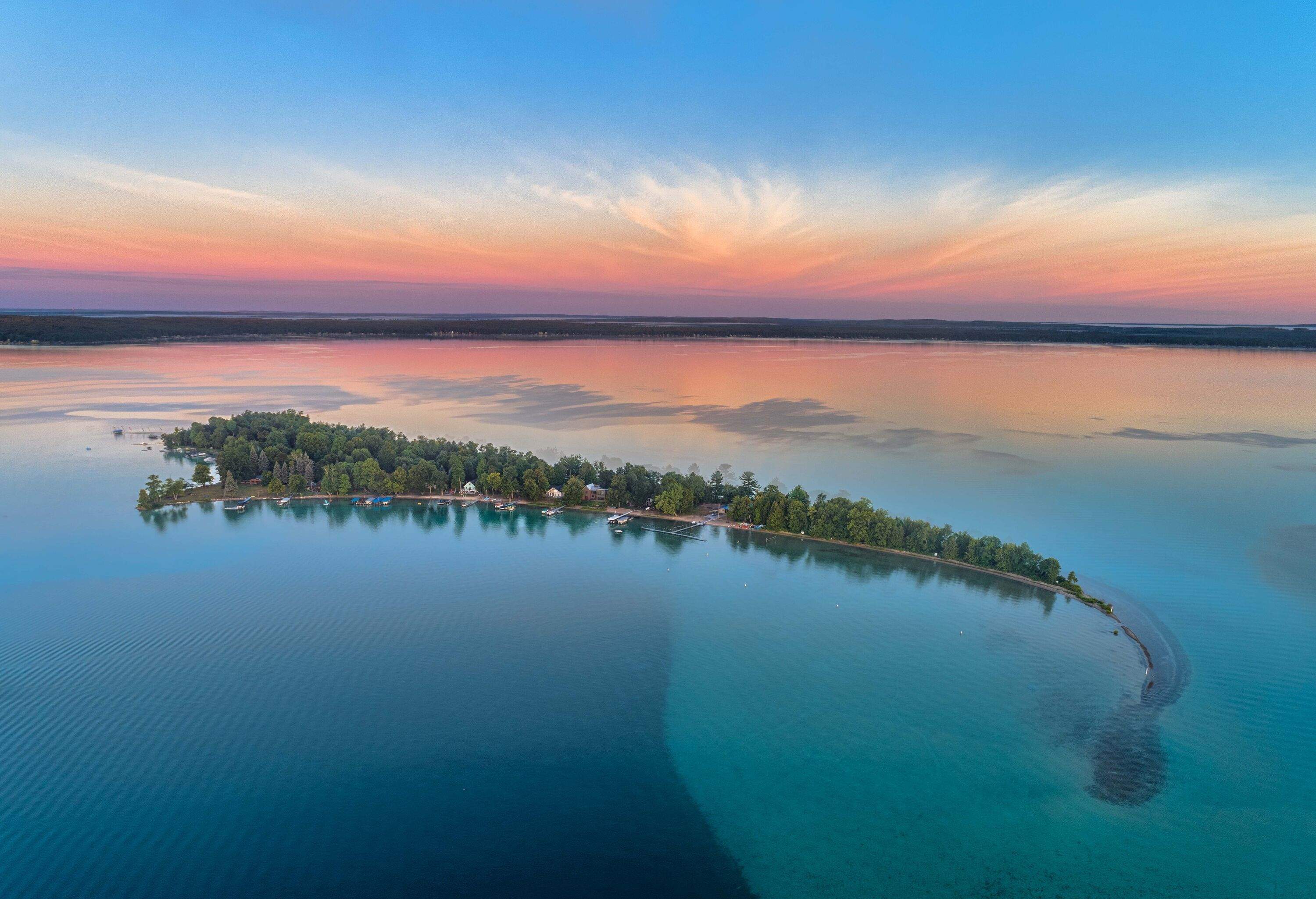
Average flight price to Pellston : $671
This dark sky park in Mackinaw City, Michigan is a dream for Northern Lights enthusiasts. Not only are there 550 acres of woodlands and over three kilometres of undeveloped Lake Michigan shoreline to explore, but also the light pollution is nearly non-existent. The park does note, however, that it’s possible for skywatchers to miss activity lower on the horizon, as it can be blocked by trees.
Find a flight to Pellston
Voyageurs National Park, Minnesota
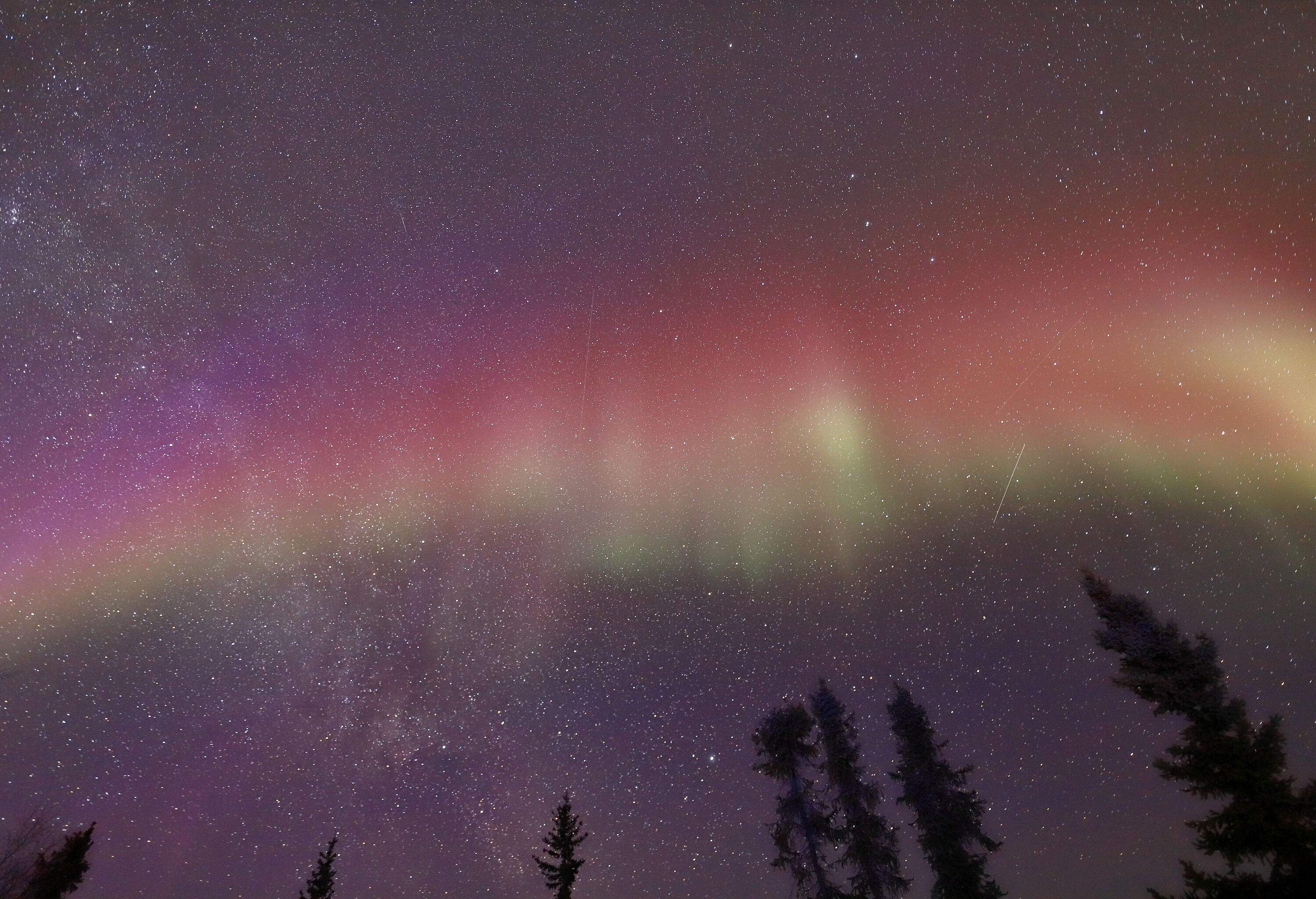
Average flight price to Duluth : $422
A dark, clear sky and prime viewing space are all you need for a perfect night of aurora-gazing at Voyageurs. Set up camp in the upper parking lot of the Rainy Lake Visitor Center or head to the Meadwood Road Day Use Area—our sources say those are the best lookout points.
Find a flight to Duluth
Yellowknife, Canada
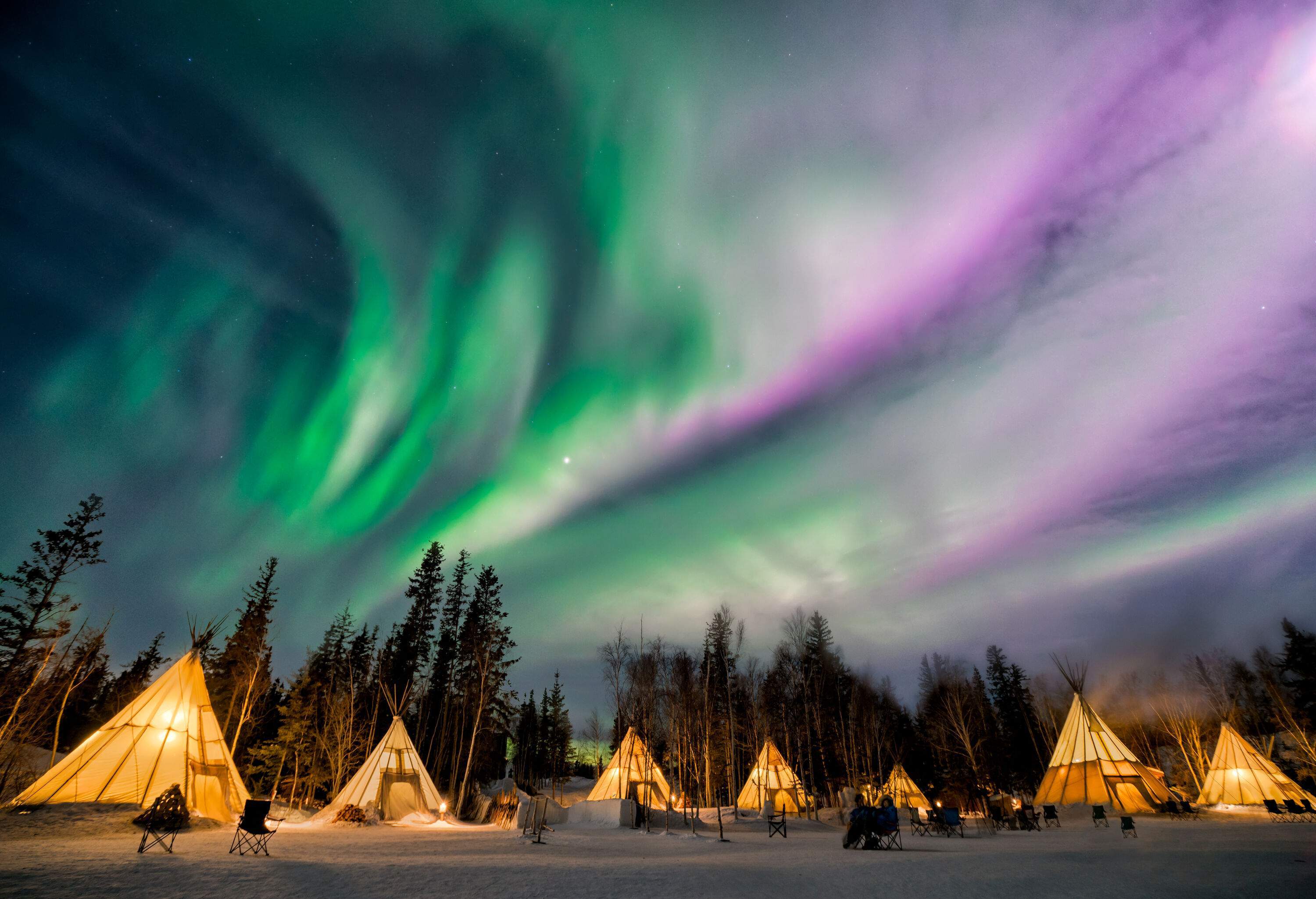
Average flight price to Yellowknife : $757
Our own Yellowknife, Canada—otherwise known as the “Northern Lights Capital of North America”—sees the aurora borealis more than 200 nights a year. For the best experience, we recommend booking a guide. North Star Adventures , an Indigenous-owned company, offers multi-day tours throughout the year. Bear in mind the intense cold of our Canadian winters if you plan to visit in the colder months. Bundling up is a must. 🥶
Find a flight to Yellowknife
Where to see the Northern Lights in Europe: top 5 best places.
Shetland islands, scotland.
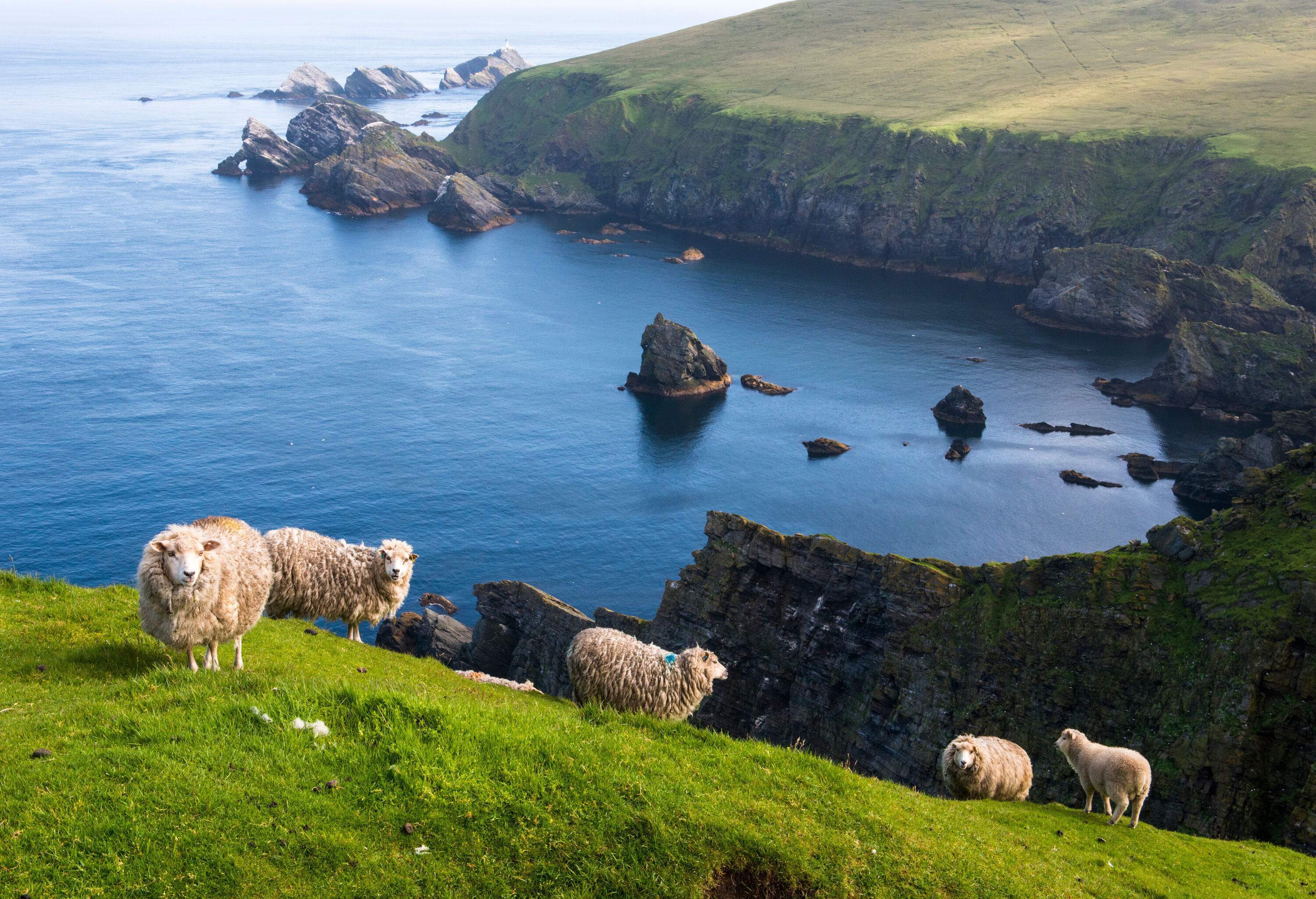
Average flight price to Edinburgh : $900
The “Mirrie Dancers,” as the Northern Lights are called in Scotland, are known to make an appearance above the Shetland Islands, an archipelago that is the northernmost region of the United Kingdom. For an epic aurora adventure, plan your trip between October and March, steer clear of artificial light and bring your warmest layers.
Find a flight to Edinburgh
Reykjavík, Iceland
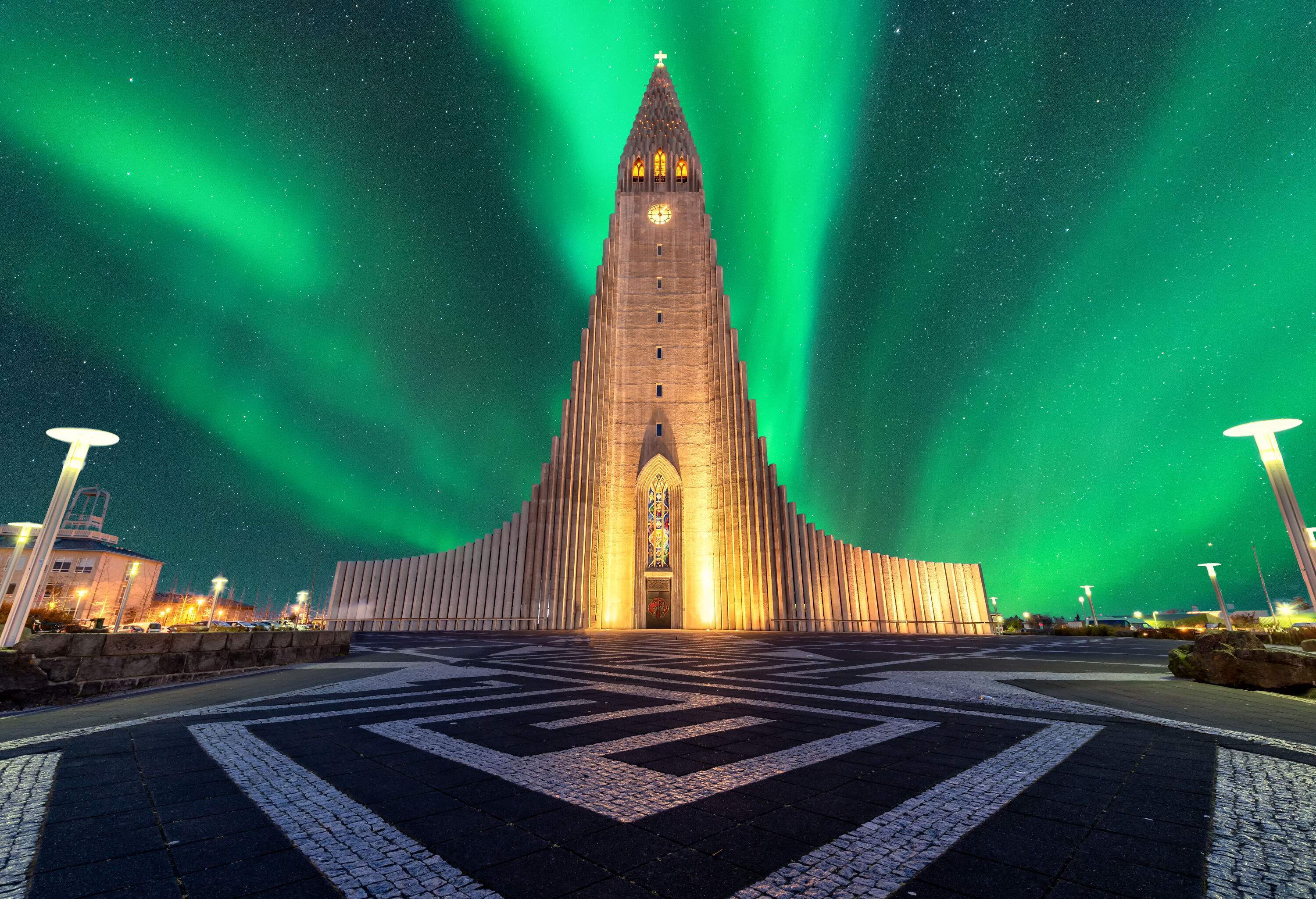
Average flight price to Reykjavík : $660
Reykjavik is one of the most accessible European cities for aurora-chasers coming from the East Coast. It’s also home to Aurora Reykjavik , Iceland's first and only Northern Lights Centre. Here, travellers can explore the museum or book guided aurora-focused tours with local experts. Think of it as a good jumping-off point for the rest of your Iceland trip—especially if you’re headed to more remote parts of the country.
Find a flight to Reykjavík
Abisko National Park, Sweden
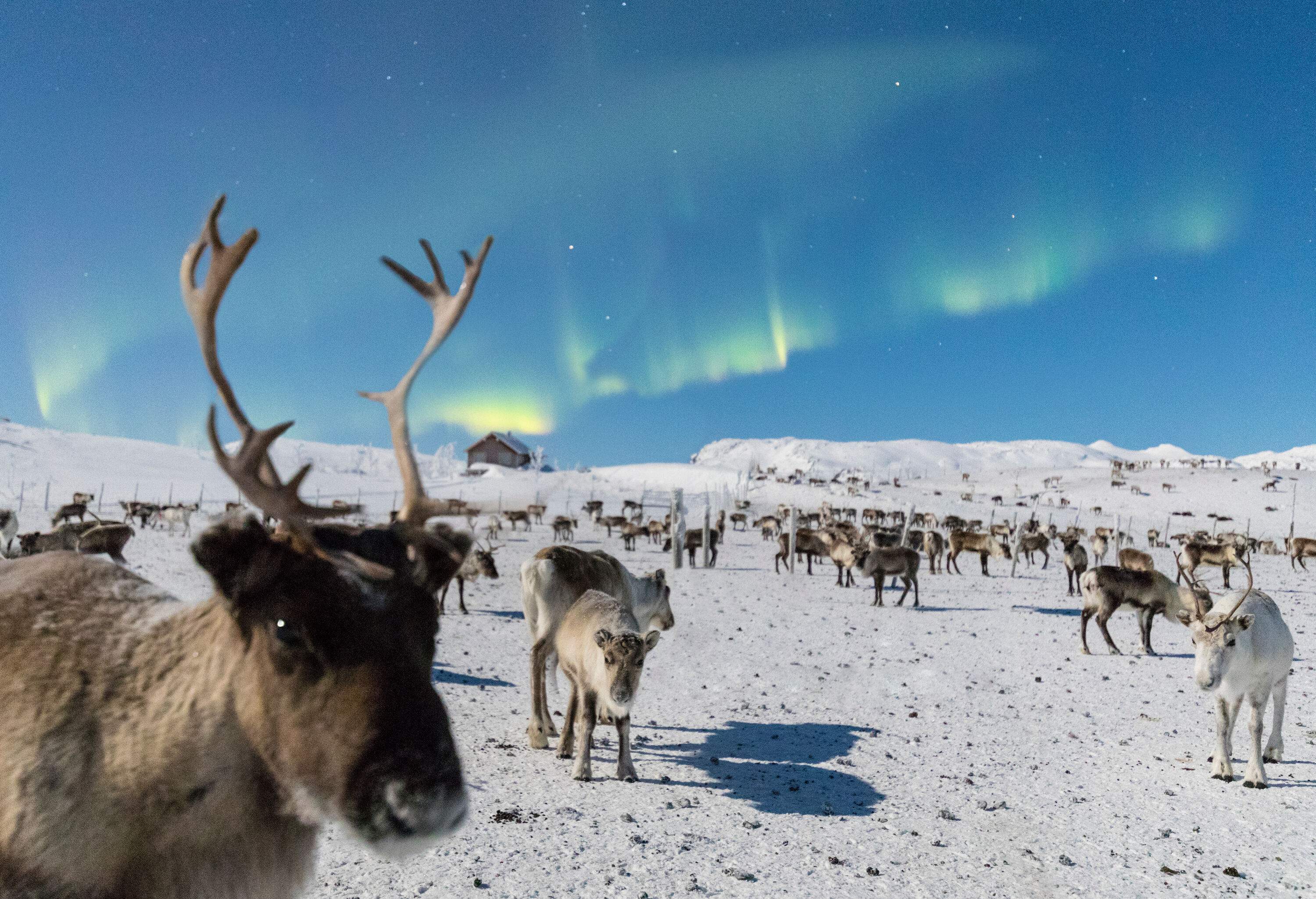
Average flight price to Trømso : $822
Sweden in the winter is magical for many reasons, but its bright green auroras top the list. For the best views, you’ll want to visit Swedish Lapland—particularly, Abisko National Park. It’s here where travellers can see the light shows from the outdoor terrace and lookout tower at Aurora Sky Station , known as the “best place on earth to experience the northern lights.”
Find a flight to Trømso
Lapland, Finland
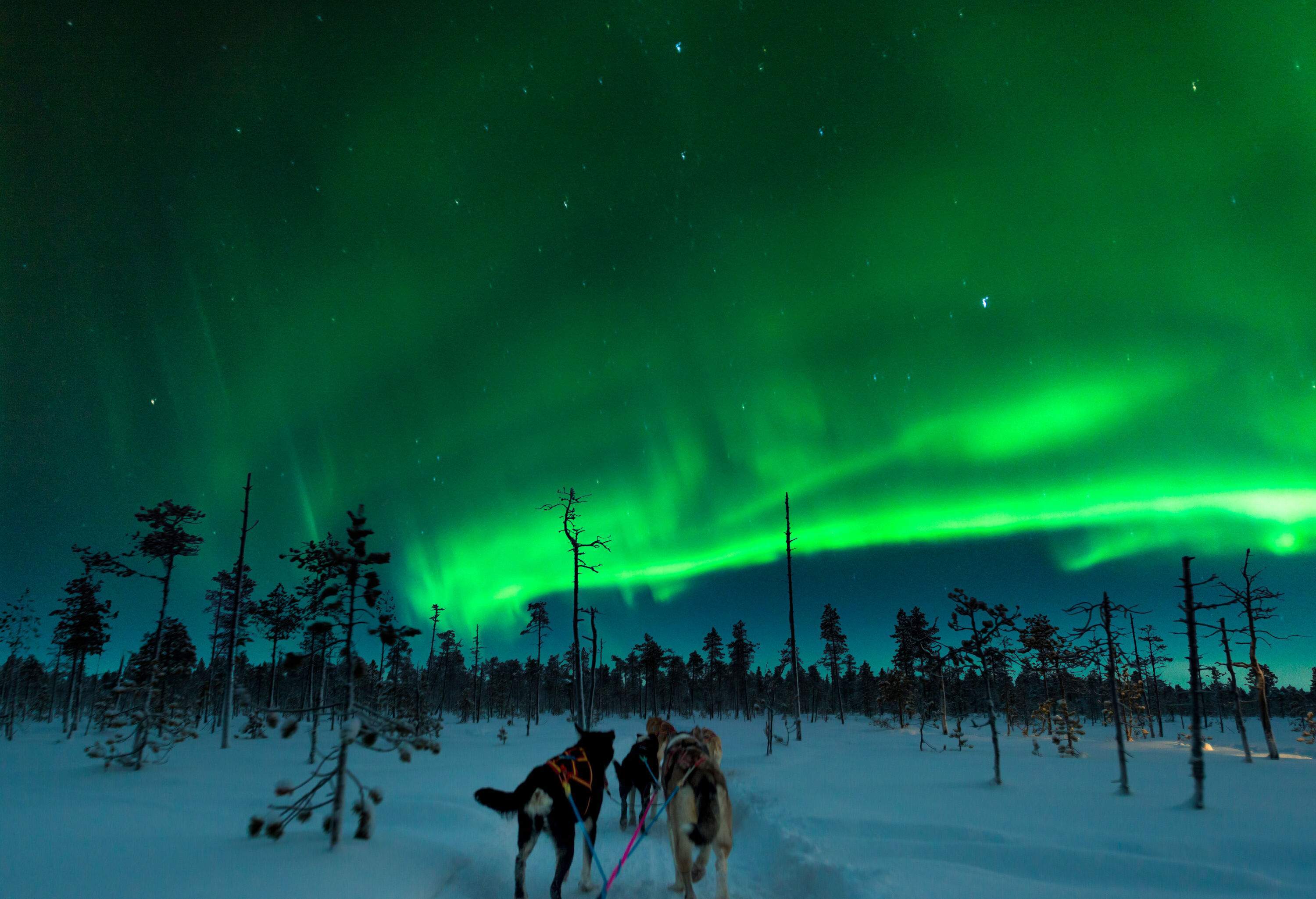
Average flight price to Lapland : $1192
Like its tundras, Lapland’s auroras are expansive. Running between August and April, the phenomenon appears around 200 nights a year. For the ultimate Finnish Lapland experience, book an extended stay at the Arctic Treehouse Hotel and spend your nights admiring the lights from the comfort (and warmth) of a cozy bed.
Find a flight to Lapland
Tromsø, Norway
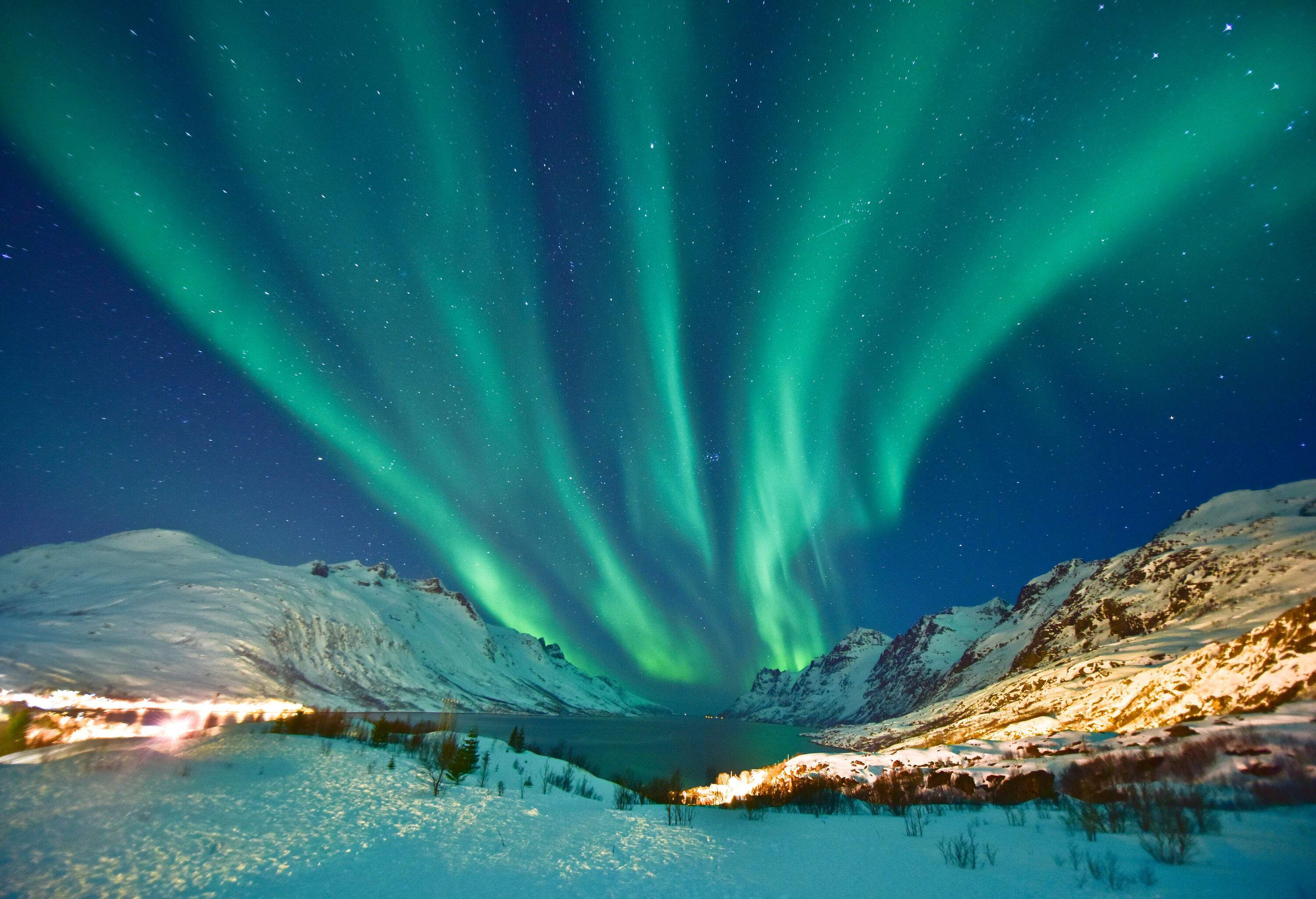
Average flight price to Trømso : $822 (22% cheaper this year)
A visit to Norway wouldn’t be complete without a stop in Tromsø, the top trending Northern Lights destination for the 2024/2025 season. With a whopping 126% spike in searches, this city is a must-visit for its central location in the auroral oval and variety of Northern Lights tours and activities.
What else to know about seeing the Northern Lights in 2024 and 2025.
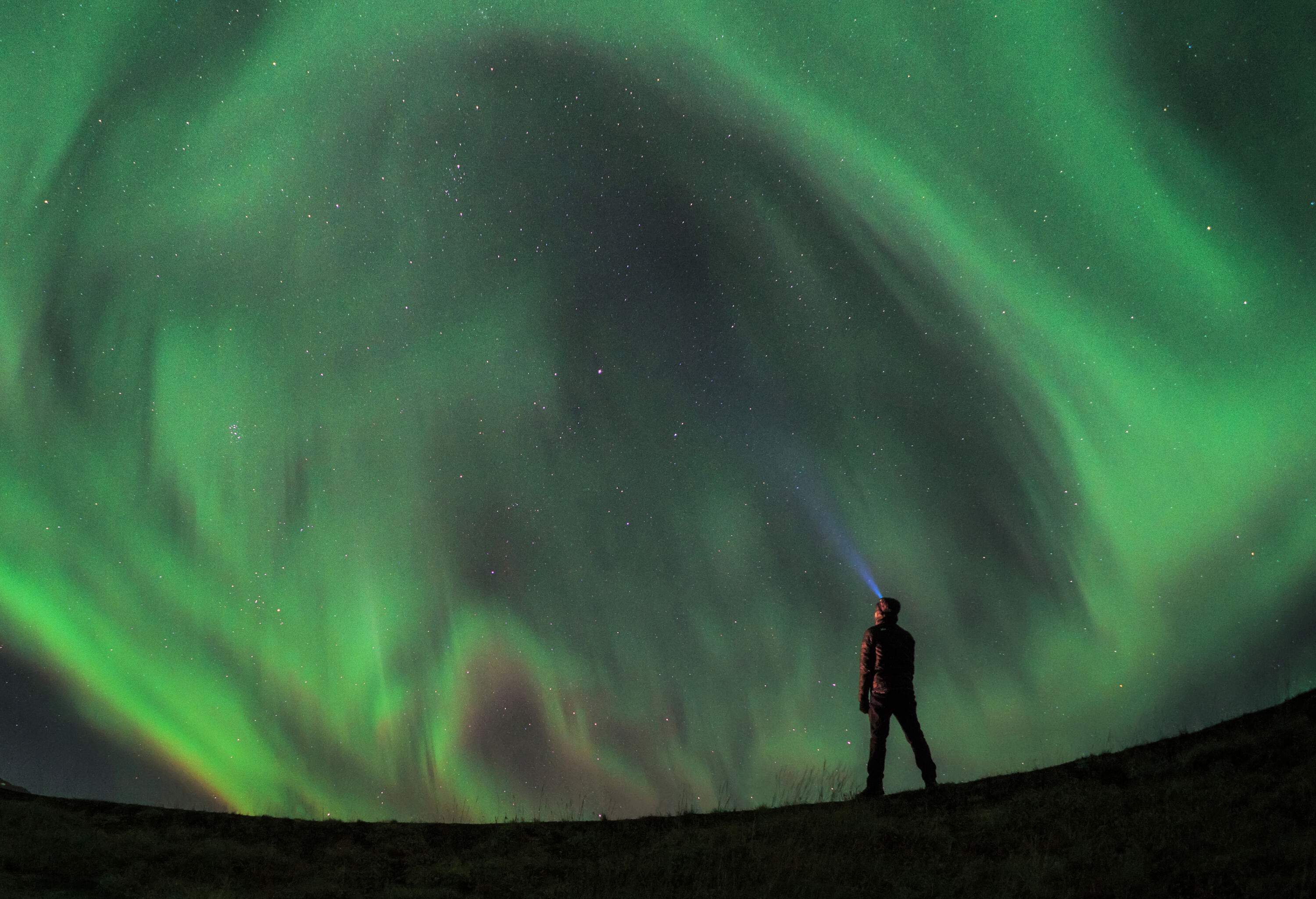
Time your travel to a T.
Prime aurora-viewing season falls between 22 September, 2024 and 20 March, 2025. Aim to arrive during a new moon, when the night sky is darkest. 10 pm to 2 am are your magic hours (aka when to post up).
How do you predict an aurora sighting?
The Kp-index is the best way to predict an aurora sighting. It measures the strength of the Earth's magnetic field, ranging from 0 (low activity) to 9 (a strong geomagnetic storm). The higher the index, the more likely the lights will be visible.
What’s the best way to take photos of the Northern Lights?
You can either use a smartphone or a professional-grade camera to take photos of the Northern Lights. Just be sure to research the camera’s capabilities and settings before the main event. For instance, some cameras may have difficulty focusing, so you’ll need to adjust it manually.
Are there any apps that will track the Northern Lights?
Easily access the Kp-index, top viewpoints, live feeds, hourly forecasts and more with a Northern Lights tracker app. We recommend My Aurora Forecast .
Methodology : KAYAK considered destinations known to be popular Northern Lights viewing areas with the greatest year over year decrease in airfare and the lowest average airfare for searches between 15 January and 14 July, 2024 for travel between 1 September, 2024 and 31 March, 2025. For year over year comparison, KAYAK considered searches between 15 January and 14 July, 2023 for travel between 1 September, 2023 and 31 March, 2024. All flights considered are for round-trip, economy itineraries. Prices and savings are on average and are subject to change.
About the author

Explore more articles


Australia Recommends 2024

Travel Inspiration

G'day, the short film

Discover your Australia

Travel videos

Deals and offers

Australian Capital Territory

New South Wales

Northern Territory

South Australia

Western Australia

External Territories

The Whitsundays

Mornington Peninsula

Port Douglas

Ningaloo Reef

Airlie Beach

Kangaroo Island

Rottnest Island

Hamilton Island

Lord Howe Island

Tiwi Islands

Phillip Island

Bruny Island

Margaret River

Barossa Valley

The Grampians

Hunter Valley

Yarra Valley

McLaren Vale

Glass House Mountains

Alice Springs

Uluru and Kata Tjuta

The Kimberley

Flinders Ranges

Kakadu National Park

Eyre Peninsula

Karijini National Park

Great Barrier Reef

Blue Mountains

Daintree Rainforest

Great Ocean Road

Purnululu National Park

Cradle Mountain-Lake St Clair National Park

Litchfield National Park

Aboriginal experiences

Arts and culture

Festivals and events

Food and drink

Adventure and sports

Walks and hikes

Road trips and drives

Beaches and islands

Nature and national parks

Eco-friendly travel

Health and wellness

Family travel

Family destinations

Family road trips

Backpacking

Work and holiday

Beginner's guide

Accessible travel

Planning tips

Trip planner

Australian budget guide

Itinerary planner

Find a travel agent

Find accommodation

Find transport

Visitor information centres
Deals and travel packages

Visa and entry requirements FAQ

COVID-19 travel and entry advice

Customs and biosecurity

Working Holiday Maker visas

Facts about Australia

Experiences that will make you feel like an Aussie

People and culture

Health and safety FAQ

Cities, states & territories

Iconic places and attractions

When is the best time to visit Australia?

Seasonal travel

Events and festivals

School holidays

Public holidays
How to get to Australia's most iconic cities

How long do I need for my trip to Australia?

How to travel around Australia

Guide to driving in Australia

How to hire a car or campervan

How to plan a family road trip

How to plan an outback road trip

Aurora Australis, Cradle Mountain, Tasmania © Pierre Destribats
Where to see the southern lights
- Share Share on Facebook Share on Messenger Share on Twitter Share on WhatsApp Copy Link
A night sky adorned with dancing lights is just one of many highlights you will find in Tasmania.
By Georgia Rickard and Carly Spek

Tasmania's Bruny Island is adored for its abundance of wildlife and sophisticated food scene. Despite being just 30 minutes by car from Hobart , the island feels refreshingly rural and is free from light pollution. For the best views of the Southern Lights, climb the stairs at The Neck and point your camera southwards. Whether or not you’re lucky enough to spot the Southern Lights, the views of the island, ocean and vast, starry sky are truly unforgettable.

Guide to Bruny Island
Cruise to seal colonies, explore cliff-top trails and sample gourmet produce on Tasmania's wild Bruny Island.
Read time • 4min

A picturesque islet named for its excellent stargazing – it’s hard to imagine a better location than Satellite Island to spot the Southern Lights. Once an industrial salmon farm, the 34-hectare (84-acre) isle was repurposed into a private luxury stay, complete with kitchen gardens, 24-hour on-call concierge and an adorable herd of sheep. Rent the entire island with up to eight guests.

Satellite Island
http://satelliteisland.com.au/

A series of flat, mirrored lakes in Cradle Mountain-Lake St Clair National Park give way to unobstructed views of the dancing Southern Lights. Head to the still waters of Cradle or Dove Lake and settle in for a spectacular show. With 60-million-year-old myrtle forests and spectacular alpine wilderness, you’re guaranteed incredible views even on a night without the famous natural lights. Stay within the park at chic Cradle Mountain Lodge for easy access to this breathtaking wilderness.

Guide to Cradle Mountain-Lake St Clair National Park
Tasmania’s majestic mountains make for the perfect wilderness adventure.

In one of the most remote corners of the Tasmanian Wilderness World Heritage Area, you’ll find Bathurst Harbour – and Par Avion Southwest Wilderness Camp . This exclusive retreat is about 100km (62mi) from the nearest town and is only accessible by plane and then boat. Take a seat on the camp’s private beach and stare up at the night sky.

The “Land of a Thousand Lakes” in Tasmania’s Central Highlands is characterised by flat, expansive plains and lakes carved out by glacial movement over millions of years. Its unobstructed horizon views make this an ideal area for viewing the Southern Lights, especially when you can retreat to the Thousand Lakes Lodge for a glass of Tassie wine afterwards.
More articles like this

Acknowledgement of Country

We acknowledge the Traditional Aboriginal and Torres Strait Islander Owners of the land, sea and waters of the Australian continent, and recognise their custodianship of culture and Country for over 60,000 years.
- International (English)
- New Zealand (English)
- United States (English)
- Canada (English)
- India (English)
- Malaysia (English)
- Singapore (English)
- Indonesia (Bahasa Indonesia)
- Deutschland (Deutsch)
- France (Français)
- Italia (Italiano)
- 中国大陆 (简体中文)
*Product Disclaimer: Tourism Australia is not the owner, operator, advertiser or promoter of the listed products and services. Information on listed products and services, including Covid-safe accreditations, are provided by the third-party operator on their website or as published on Australian Tourism Data Warehouse where applicable. Rates are indicative based on the minimum and maximum available prices of products and services. Please visit the operator’s website for further information. All prices quoted are in Australian dollars (AUD). Tourism Australia makes no representations whatsoever about any other websites which you may access through its websites such as australia.com. Some websites which are linked to the Tourism Australia website are independent from Tourism Australia and are not under the control of Tourism Australia. Tourism Australia does not endorse or accept any responsibility for the use of websites which are owned or operated by third parties and makes no representation or warranty in relation to the standard, class or fitness for purpose of any services, nor does it endorse or in any respect warrant any products or services by virtue of any information, material or content linked from or to this site.

Grand Canyon to Mount Everest: 7 Natural wonders of the World
Discover Earth's wonders! From the majestic Grand Canyon and vibrant Great Barrier Reef to the lush Amazon Rainforest and mesmerizing Northern Lights. Experience nature's marvels like Mount Everest, Victoria Falls, the emerging Parícutin volcano, and the breathtaking Aurora Borealis and Aurora Australis. Join us on a journey to explore the planet's awe-inspiring natural treasures
Embark on a journey to Earth's wonders – from the iconic Grand Canyon to the vibrant Great Barrier Reef. Nature's marvels await exploration
Carved by the Colorado River over millions of years, the Grand Canyon is a vast and awe-inspiring canyon in Arizona
Located off the coast of Queensland, the Great Barrier Reef is the largest coral reef system in the world. It's renowned for its vibrant coral formations
Often referred to as the "Lungs of the Earth," the Amazon Rainforest is the largest rainforest on the planet. It is home to an incredibly diverse array of species
Straddling the border between Zambia and Zimbabwe, Victoria Falls is one of the world's largest and most famous waterfalls
As highest peak in the world, Mount Everest stands at 8,848 meters above sea level. Its challenging ascent and stunning vistas from the summit make it a legendary natural wonder
The Northern Lights (Aurora Borealis) and Southern Lights (Aurora Australis) are natural light displays in the polar regions
Parícutin is a volcano in Mexico that unexpectedly emerged in 1943, transforming the landscape. Its unique formation and the way it altered the surrounding area

- Today's news
- Reviews and deals
- Climate change
- 2024 election
- Newsletters
- Fall allergies
- Health news
- Mental health
- Sexual health
- Family health
- So mini ways
- Unapologetically
- Buying guides
Entertainment
- How to Watch
- My watchlist
- Stock market
- Biden economy
- Personal finance
- Stocks: most active
- Stocks: gainers
- Stocks: losers
- Trending tickers
- World indices
- US Treasury bonds
- Top mutual funds
- Highest open interest
- Highest implied volatility
- Currency converter
- Basic materials
- Communication services
- Consumer cyclical
- Consumer defensive
- Financial services
- Industrials
- Real estate
- Mutual funds
- Credit cards
- Balance transfer cards
- Cash back cards
- Rewards cards
- Travel cards
- Online checking
- High-yield savings
- Money market
- Home equity loan
- Personal loans
- Student loans
- Options pit
- Fantasy football
- Pro Pick 'Em
- College Pick 'Em
- Fantasy baseball
- Fantasy hockey
- Fantasy basketball
- Download the app
- Daily fantasy
- Scores and schedules
- GameChannel
- World Baseball Classic
- Premier League
- CONCACAF League
- Champions League
- Motorsports
- Horse racing
New on Yahoo
- Privacy Dashboard
'Once-in-a-lifetime' photo: Perseid meteors, northern lights and rare glowing arc shine over 11th-century castle
When you buy through links on our articles, Future and its syndication partners may earn a commission.
When photographer Josh Dury set out to photograph the peak of the Perseid meteor shower overnight on Aug. 12 and Aug. 13, little did he know he'd be treated to a truly special cosmic display.
The breathtaking image Dury captured shows not only Perseid meteors raining down through the sky but also northern lights and a rare atmospheric glow known as an SAR arc alongside the Andromeda and Triangulum galaxies.
"To think that so much is going on in the astronomical scene that evening with the Andromeda and Triangulum galaxies also visible, makes this definitely a once-in-a-lifetime photograph," Dury told Space.com in an email.
Dury chose 11th Century Corfe Castle as the setting for his image as he'd photographed from the location on May 10 during the epic G5 geomagnetic storm and captured some incredible scenes.
And with strong G3 conditions forecast during the peak of the Perseid meteor shower, Dury set out to try his luck again.
Suffice it to say it was another storming success.
"When taking the photograph, I had no anticipation that the Northern Lights would be visible. I gave it a go," Dury told Space.com. "Over 3 1/2 hours, I was able to catch 50 sub-exposures of the Perseid meteor shower emanating from the radiant," Dury continued.
Then the sky erupted in a cacophony of color.
"To my surprise, however, my phone began to go off with notifications for potential aurora. Moments later on camera, I was able to photograph the northern lights as the meteor shower was taking place," Dury explained.
And if that wasn't enough, another hidden gem revealed itself to Dury when he was looking through his raw images of the majestic scene.
"If this already wasn't a surprise, I was somewhat shocked to find in my rushes that I had photographed the stable red arc (SAR). This was only visible by camera," Dury exclaimed.
But that wasn't it! The highly detailed image also contains popular skywatching targets such as the Andromeda Galaxy (M31) and the harder-to-spot Triangulum Galaxy (M33).
Phenomena explained
Perseid meteor shower.
The Perseid meteor shower is an annual shower that occurs between mid-July to late August. Perseids occur when Earth travels through debris — bits of ice and rock — left behind from Comet Swift-Tuttle , which last past Earth in 1992. When the debris enters Earth's atmosphere it burns up in bright bursts of light. These Perseid "shooting stars"' appear to radiate from the constellation Perseus from which the shower receives its name. The Perseid meteor shower peaks around Aug. 11 to Aug. 12 when Earth passes through the densest part of the debris.
Northern lights (aurora borealis)
The northern lights (aurora borealis) also known as the southern lights and aurora australis in the Southern Hemisphere are a colorful show that displays our protective magnetic field at work.
When energetic particles from the sun slam into Earth's magnetosphere (area of space dominated by Earth's magnetic field ), our planet's magnetic field redirects the particles toward the poles when they interact with our atmosphere, depositing energy and causing the atmosphere to fluoresce.
The strange deep red band of light is called a Stable Auroral Red (SAR) arc, which is a bit misleading in that is neither aurora nor stable according to SpaceWeather.com . SAR arcs were only discovered in 1956 and have fascinated scientists ever since.
Found around 280 miles (450 kilometers) at altitude and typically accompanying strong (at least G3 level) geomagnetic storms, SAR arcs occur when heat energy leaks into the subauroral upper atmosphere from Earth's ring current system. The ring current is a large electrical current carried by energetic ions (charged particles) that encircle Earth . SARs glow a deep red due to atomic oxygen in the upper atmosphere . The human eye is fairly insensitive to light at this wavelength and so SARs are usually too faint to see. This explains why Dury didn't even notice it was there until he came to process his images.
SAR arcs share some similarities with another subauroral optical phenomenon known as STEVE (Strong Thermal Emission Velocity Enhancement) which was discovered around 2016. There have even been reports of a SAR arc morphing into STEVE .
Editor's note: If you capture a stunning photo or video of the night sky and want to share them with Space.com for a possible story, send images, comments on the view and your location, as well as use permissions to [email protected].
Recommended Stories
The 2024 perseid meteor shower and northern lights overlapped in a rare cosmic display. see photos of the dazzling event..
A rare display of the Perseid meteor shower and the northern lights dazzled sky watchers around the world.
Catch the Perseid meteor shower at its peak late tonight into tomorrow
Late Sunday night into the pre-dawn hours of Monday will be the best time to see the Perseids.
Perseid meteor shower 2024: Where and what time tonight you can view brightest, most colorful shower of the whole year
Tonight's Perseid meteor shower will be the brightest cosmic display of the year. Here’s how to see it from your backyard.
Photos: Protesters gather outside the DNC
Pro-Palestinian demonstrators protested outside the DNC in Chicago on Monday.
Carlos Eduardo Espina, Deja Foxx, Nabela Noor among social media influencers speaking at the 2024 DNC
Access for content creators means new players can get involved at the Democratic National Convention.
'Boy Meets World' actress Danielle Fishel has breast cancer. She caught it so early it's at stage 0.
The Boy Meets World Star has a form of breast cancer that experts say is almost always curable.
Demand for AI is driving data center water consumption sky high
The AI boom is fueling the demand for data centers and, in turn, driving up water consumption. Microsoft, a major data center operator, says 42% of the water it consumed in 2023 came from "areas with water stress." Google, which has among the largest data center footprints, said this year that 15% of its freshwater withdrawals came from areas with "high water scarcity."
The Waymo robotaxi honking problem has been resolved for real this time
The great nightly Waymo honk-a-thon — in which the company's robotaxis erupted into a chorus of honking at night's end in a San Francisco parking lot— was resolved, then not. The backstory: Software engineer Sophia Tung set up a livestream of the parking lot that captured the robotaxis streaming in to park — and honk — for up to an hour around 4 a.m. Waymo issued a software patch to ensure the robotaxis — often in close quarters — would not honk at each other.
United States announces team for 2024 Paralympics, with 225 members heading to Paris
Team USA will include 141 returning Paralympians, including swimmer Jessica Long, sprinter Hunter Woodhall and multi-sport Paralympian Oksana Masters.
What margins? AI's business model is changing fast, says Cohere founder
Aidan Gomez, CEO of competing AI provider Cohere, says that selling access to models is quickly becoming a "zero margin business" in a podcast appearance on Monday. "If you’re only selling models, for the next little while, it’s gonna be a really tricky game," said Gomez in an interview with 20VC's Harry Stebbings.
11 insanely comfy throw-on-and-go dresses that don't look frumpy — from $17
The only thing better than an airy, lightweight frock is one that's affordable — take a peek at our fave maxis, minis and midis.
Diane Keaton has launched a stunning home decor line — pieces start at just $12
The stylish star went big on black and white for her collection of dishes, decor and more with housewares brand Hudson Grace.
Get the best-selling car sun shade on Amazon for 17% off today
Need an affordable way to keep your car interior cool in the summer heat? This EcoNour sun shade can help and it's available at a discount today.
I'm a pro baker: These are kitchen tools I'd never buy (and what to use instead)
Does anyone need a dedicated banana slicer? Spare me. Oh, and pizza scissors? Fun band name, unnecessary gadget.
Could Trump's AI-generated Taylor Swift endorsement be illegal?
On Sunday, former President Donald Trump posted a collection of memes on Truth Social -- the platform owned by his media company -- that make it seem like Taylor Swift and her fans are coming out in support of his candidacy. "One of the things I'm seeing a lot of in my practice right now is the rise of AI impersonators across the board for endorsements," Noah Downs, an IP and entertainment lawyer, told TechCrunch, with the condition that his comments are not legal advice. In one of the images Trump posted, hordes of young women wear matching "Swifties for Trump" t-shirts.
Swarmbotics founders grew 'obsessed with robot swarms' and now plan to bring them to the battlefield
Few truly autonomous systems are deployed on the battlefield, but one startup is looking to change that with robotic systems that use cooperative behavior to boost troops’ intelligence and tactical advantage. Swarm robotics have been the stuff of science fiction, but Swarmbotics AI is emerging from stealth today to bring this vision to reality.
Apple’s ninth-generation iPad hits an all-time low of $199
If you’re looking for an iPad that’s more affordable than cutting-edge, Amazon has the 2021 base model for only $199. This ninth-generation edition could be great for kids, seniors or anyone content with a perfectly solid tablet that forgoes the latest and greatest hardware.
Dodgers' Shohei Ohtani is nearing his first 40-40 season. When could he accomplish the feat?
Shohei Ohtani is on the verge of becoming the sixth player in MLB history to tally 40 home runs and 40 stolen bases in a season.
This knit jacket is better than J.Crew's coatigan, fans say — it's over 50% off
Why wait for chilly weather? This $34 polished layer will keep you toasty when the A/C is blasting.
No counter space? This brilliant $9 drying rack fits in the corner of your sink
Some reviewers even put this triangular doodad in their tub to hold bath stuff.

IMAGES
COMMENTS
Tasmania's answer to the Aurora Borealis is its own version of the Northern Lights: the mysterious and mesmerising Aurora Australis. ... The Premier Travel team helps guide guests towards the most favourable conditions. In the event that the aurora remains elusive, guests still enjoy a fascinating stargazing experience using three powerful ...
However, if you do have the opportunity to travel outside the city while visiting Melbourne, take advantage of the opportunity to view the aurora at the following places. Cape Schanck. Take an 85-minute drive to view the aurora australis from Cape Schanck at the southernmost tip of the Mornington Peninsula.
The aurora australis is the southern cousin to the northern lights. ... Travel Correspondent. July 29, 2017. Aurora Australis seen over Lake Dunstan, New Zealand. NCHANT/iStock.
The island state of Tasmania is the best place from which to view aurora australis in Australia. Those in New Zealand should head towards the South Island. Antarctica is the quintessential viewing position for the Southern Lights, while the phenomenon can sometimes be viewed on cruises to South Georgia Island between March and September.
The Aurora Australis, otherwise known as the Southern Lights, is the lesser known counterpart to its famous alternative, the Northern Lights. ... Due to very an experienced and knowledgeable travel planner Traci. Bruce Christie . 2023-11-29. Thanks to Cheryle we had a wonderful 4 1/2 days in Tasmania. Everything went to plan beautifully, and ...
Aurora australis on Stewart Island, New Zealand. Image: Nicola M Mora/Getty Images. Located about 20 miles off the coast of New Zealand's South Island, Stewart Island is known in Māori as Rakiura or "the land of glowing skies"—and it's not hard to see why. About 85 percent of its 675 square miles is set aside as Rakiura National Park ...
Today her Facebook group, Aurora Australis Tasmania, has more than 300,000 members, but the fact that Tasmania might be the best vantage spot in the world to view the southern lights remains largely unknown. "Australians are so privileged to be able to see the southern lights," Margaret said, and astronomers predict that in 2024/2025 solar ...
Its unobstructed horizon views make this an ideal area for viewing the Southern Lights, especially when you can retreat to the Thousand Lakes Lodge for a glass of Tassie wine afterwards. Tasmania is home to many of the best places to see the Aurora Australis. Here's your guide to the best vantage points for chasing the Southern Lights in ...
You don't need to travel to the South Pole to get a perfect photo of the green and pink lights of the aurora australis — there's incredible vantage points right here in our own backyard.
1: Tasmania, Australia. The island of Tasmania is a standout for Southern Lights viewing. Based in Australia's southernmost region, Tasmania's geographical positioning and modest light pollution make it a prime spot. Mount Wellington, a peak on the outskirts of Hobart, is a great lookout point in particular.
According to the website SpaceAcademy.net the aurora australis can be seen in Tasmania when the K index is 7, which indicates a fairly intense geomagnetic storm. So, when planning your travel to Tasmania to see the aurora australis, keep this in mind as you read through this article or other websites that talk about visiting the southern lights.
February 26th, 2018 / Burnham Arlidge. The Southern Lights, commonly known as the Aurora Australis, is one of the world's greatest wonders. Travellers come from across the globe to witness the spectacular natural light display in the high-altitude Antarctic region. The Southern lights are much more elusive than their Northern Hemisphere ...
Spotting Aurora Australis: When to catch the southern lights in action. Tip #1: The winter months provide perfect conditions. Tip #2: Be at your designated viewing spot by midnight. Tip #3: Take note of the phases of the moon and plan accordingly. Tip #4: The weather forecast is your best friend.
Although Aurora Australis may be in the sky near Melbourne, because of the light pollution caused by the city, it'd be near impossible to see it. To see Aurora Australis, you typically need to travel outside of Melbourne to more remote areas, such as Phillip Island, Wilsons Promontory, or Mornington Peninsula.
The website Aurora Australis Tasmania has a map of locations and more information on spotting auroras in Tasmania. Tasmania is considered one of the best places to see the Aurora Australis. 3. South Island, New Zealand. New Zealand is another destination where you can, on occasion, catch a southern light display.
Factors outside your control include solar activity, the phases of the moon, and cloud cover. To maximize your chances, use the Bureau of Meteorology aurora page (updated every 15 mins), the Aurora Forecast app for alerts, and the Aurora Australis Tasmania Alert NOW for real-time sightings. Tasmania has a maximum length and width of about 200 ...
5 Best Places to View the Southern Lights (Aurora Australis) Name. Location. Best Time to Go. 1. South Georgia Island. South Atlantic Ocean in the South Sandwich Islands. The Antarctic winter, between March and September. 2.
Australia's answer to the Northern Lights. 7 July 2020. Ellie Cobb. Features correspondent. Philkitt/Getty Images. The Aurora Australis can be seen from all over Tasmania, as long as there is a ...
Dr. Ian Griffin, Otago Museum. The best time to go stargazing tends to be during New Zealand's winter - from March to September - when the Milky Way is prominent and the Aurora Australis ...
One of the most popular and affordable ways to view the aurora australis regardless of the time of year is by air. There are a number of different tours that offer flights in and around Antarctica for the purpose of viewing the southern lights. In Australia, Chimu Adventures offers a 16-hour tour aboard a 787 Dreamliner.
With a bit of planning, you can see the spectacular Aurora Australis and Southern Lights even in skies above Melbourne. Seeing the Aurora Borealis is a bucket-list item for many Australians, with Finland, Norway and Alaska among the top places to see the Northern Lights.. But that means saving up for a trip, travelling upwards of 15,000km on a long-haul flight, and bracing yourself for extreme ...
The area of a visible aurora is greater because it can be seen at spots other than 90 degrees directly up (straight above your head). The Aurora might be visible at 45 degrees, 30 degrees or even lower on the horizon depending on its brightness. Bz is the solar wind's magnetic orientation in the up/down direction.
Auroras that take place in Earth's Northern Hemisphere are called aurora borealis, or the Northern Lights. Ones that occur in the Southern Hemisphere are called aurora australis, or the Southern ...
No, not Aurora Australis but the Norwegian alt-pop fave, Aurora. She's returning to our shores with her fourth album What Happened To The Heart? locked and loaded for a run of gigs at the start of ...
The southern hemisphere has its own polar lights known as the southern lights, or aurora australis, which create their own dazzling display. Put simply, auroras are a result of the sun interacting ...
Always wanted to witness the aurora borealis? Now's the time to plan a trip. ... or aurora australis.) More northern locations like here in Canada—as well as places like Norway and Iceland—offer increased chances of seeing the aurora borealis. This year, as we enter a solar maximum, the list of the best places to see the Northern Lights has ...
Cradle Mountain-Lake St Clair National Park. The main obstructions to viewing the Southern Lights include large mountain ranges and trees - which is why Cradle Mountain-Lake St Clair National Park, with its series of flat, mirrored lakes is a great backdrop for the Southern Lights. Head to the still waters of Cradle or Dove Lake and settle in ...
The Northern Lights (Aurora Borealis) and Southern Lights (Aurora Australis) are natural light displays in the polar regions. Parícutin is a volcano in Mexico that unexpectedly emerged in 1943 ...
Northern lights (aurora borealis) The northern lights (aurora borealis) also known as the southern lights and aurora australis in the Southern Hemisphere are a colorful show that displays our protective magnetic field at work.